Savas Beatie Authors/Readers Gather at Gettysburg
by Leon Reed Special to Civil War News
For the second straight year, Savas Beatie authors and readers met in Gettysburg for three days of battlefield tours, booktalks, and conversation. This is an important event for the company to sponsor, said Savas Beatie director Ted Savas. “Before I was a publisher, I loved meeting and speaking with my favorite authors and having them sign my books. It was important to me, and it stayed with me.” Savas continued, “once I entered the publishing world, I vowed to make sure my customers could have the same experience as often as possible. A hobby is more fun and rewarding when you share it with others of like mind.”
This year, though, the gettogether was a two-battlefield, two-state affair, with four tours of Antietam on Friday and five of Gettysburg spread out over Saturday and Sunday mornings.
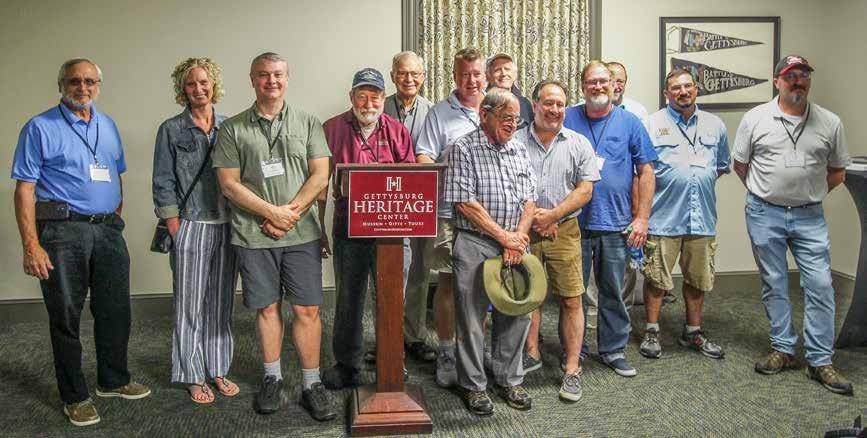
Stalwart battlefield explorers agreed that the temperatures, while warm, didn’t match the “keep an ambulance on standby” temperatures at the same event last year. Walks at Antietam included:
✦ Brad Gottfried, “Robert Rodes's Brigade Takes on French's Division”
✦ Tom Clemens, “The Overlooked Advance, Semmes’s Brigade at Antietam”
✦ Chris Bryan, “Melted Down Their Ranks Like Wax: George Sears Greene's Defense of the Dunker Church Plateau and Assault into the West Woods”
✦ Steve Stotelmyer, “Miller's Clover Field – Another Perspective on the Morning Maelstrom Surrounding the Cornfield at Antietam”
The Saturday program at Gettysburg started with three more field presentations.
✤ Charlie Knight, “I Will be Found in the Advance: Gen. Lee's Ride from Culpeper to Gettysburg”
✤ Mike Harris, “Bigelow's Battery and the 2nd Day at Gettysburg”
✤ Scott Mingus, “The Louisiana Tigers Attack on East Cemetery Hill”
After lunch, authors and readers reconvened at the Gettysburg Heritage Center. Alex Rossino spoke on “Lee's Army in Maryland: A New Perspective on the September 1862 Campaign,” and Ron Kirkwood addressed “Too Much for Human Endurance:” The George Spangler Farm Hospitals and the Battle of Gettysburg. The day’s last event was a panel discussion moderated by Ted Savas. Brad Gottfried, David Powell, Harold Knudsen, Mike Harris, and Alexander Rossino participated. As always, Ted
threw it open to questions from the audience, saying, “This is your chance; ask anything.” The three panel discussions held in the past two years have provided an interesting study in changing moods. In 2021, the first day’s panel, with both Eric Wittenberg and James Hessler as participants, became a detailed tactical talk on cavalry operations and the Peach Orchard, while the second panel explored the ins and outs of the publishing and editing business. The panel continued the pattern of exploring a single topic in detail. This year, the topic of concern was the research and writing process: how do you know you have “enough” and can start writing; what lessons did you learn writing your earlier books that helped with later books, etc. Perhaps the foremost points of agreement were the appreciation the authors gained over the course of several books about the importance of good
writing, including issues such as passive voice, flow, and brevity; the extent to which Savas Beatie’s editing improved their work; and the importance of getting the text reviewed by as many people as possible.
Following bagels and coffee (provided by SB author Gerry Christianson) and conversation on the grounds of the Seminary Ridge Museum early Sunday morning, author Dave Powell led the group about 100 yards west of the ridge to enjoy a seldom-seen view of McPherson Ridge from the east and a talk about Perrin’s Brigade on the battle’s first day.
Then the group returned to Seminary Ridge, walked north almost to the Chambersburg Pike, and enjoyed a discussion by Gettysburg in Color author Patrick Brennan. He pointed to the spot where he concluded the “Harvest of Death” photos were taken (in the valley between McPherson Ridge and Seminary Ridge, just

south of Chambersburg Pike). He described the process he and his daughter Dylan and several colleagues used to identify the sites where they believe the photos were taken. The realization that more than a dozen of the soldiers in the photo were Confederates (revealed when AI colorized the image) was their key to their discovery.
Many attendees remarked about the collegial spirit. During the breaks, authors were seen talking intently with guests. Ted Savas considers that mingling to be a primary source of his company’s competitive advantage: “Civil War readers comprise a comparatively small but deeply engaged community that likes to read good books and debate— vigorously. Getting together with 100 of your customer-family members, touring the hallowed
Vol. 48, No. 10 48 Pages, October 2022 $3.50 America’s Monthly Newspaper For Civil War Enthusiasts 18– American Battlefield Trust 38 – Book Reviews 36 – Central Virginia Battlefield Trust 28 – Critic’s Corner 30 – Emerging Civil War 12 – ECW Spotlight 45 – Events 34 – The Graphic War 26 – The Source 20 – Through the Lens 22 – This And That 14 – The Unfinished Fight H Authors . . . . . . . . . . . . see page 4
Savas Beatie authors and staff (L-R): Bradley Gottfried, Sarah Closson, Alex Rossino, Leon Reed, Gerry Christianson, Harold Knudsen, John Michael Priest (front), Pat Brennan (rear), Ted Savas, Dave Powell, Ron Kirkwood, Mike Harris, and Charlie Knight.
Civil War News
Published by Historical Publications LLC


520 Folly Road, Suite 25-379, Charleston, SC 29412 800-777-1862 • Facebook.com/CivilWarNews mail@civilwarnews.com • civilwarnews.com
Advertising: 800-777-1862 • ads@civilwarnews.com
Jack W. Melton Jr. C. Peter & Kathryn Jorgensen
Publisher Founding Publishers
Editor: Lawrence E. Babits, Ph.D.
Advertising, Marketing & Assistant Editor: Peggy Melton
Columnists: Craig Barry, Salvatore Cilella, Stephanie Hagiwara, Gould Hagler, Tim Prince, John Sexton, and Michael K. Shaffer
Editorial & Photography Staff: Greg Biggs, Michael Kent, Bob Ruegsegger, Gregory L. Wade, Shannon Pritchard, Carl Sell Jr., Joan Wenner, J.D.
Technical Consultant: Heath Jones

Civil War News (ISSN: 1053-1181) Copyright © 2022 by Historical Publications LLC is published 12 times per year by Historical Publications LLC, 520 Folly Road, Suite 25 PMB 379, Charleston, SC 29412. Monthly. Business and Editorial Offices: 520 Folly Road, Suite 25 PMB 379, Charleston, SC 29412, Accounting and Circulation

Offices: Historical Publications LLC, 520 Folly Road, Suite 25 PMB 379, Charleston, SC 29412. Call 800-777-1862 to subscribe. Periodicals postage paid at U.S.P.S. 131 W. High St., Jefferson City, MO 65101.

POSTMASTER: Send address changes to: Historical Publications LLC 520 Folly Road Suite 25 PMB 379 Charleston, SC 29412
Display advertising rates and media kit on request. The Civil War News is for your reading enjoyment. The views and opinions expressed herein are those of its authors, readers and advertisers and they do not necessarily reflect the official policy or position of Historical Publications, LLC, its owners and/or employees.
P UBLISHERS :
Please send your book(s) for review to: Civil War News

520 Folly Road, Suite 25 PMB 379 Charleston, SC 29412
Email cover image to bookreviews@civilwarnews.com. Civil War News cannot assure that unsolicited books will be assigned for review. Email bookreviews@civilwarnews.com for eligibility before mailing.

ADVERTISING INFO:
Email us at ads@civilwarnews.com Call 800-777-1862


MOVING?
Contact us to change your address so you don’t miss a single issue. mail@civilwarnews.com • 800-777-1862
SUBSCRIPTION RATES
U.S. Subscription
By Jack Melton
We are so delighted to announce our new and improved website. We have been recently working hard to populate it with exciting information for our subscribers. CivilWarNews.com has always been available, but it has never been filled with so much news and information before now.
There are so many new features; it is hard to count them. As a print subscriber, you will now be able to log in to manage your subscriptions, complete a change of address, renew your subscription online, or suspend your subscription while on vacation and have it reinstated
Deadlines for Advertising or Editorial Submissions is the 20th of each month. Email: ads@civilwarnews.com
when you return. You can access our expanded Calendar of Events, sign up for an e-Edition subscription, watch interesting videos, and get trending stories from each issue. You will have unlimited access to our Book Reviews, Preservation News, Press Releases, and so much more. You will also have access to articles from our other publications, The Artilleryman Magazine and the Military Antique Collector Magazine. Best of all, there is no additional charge to access this new site (with exception of e-edition subscriptions)
If you are a current subscriber with your email on file with us and want to sign up, go to CivilWarNews.com, which will redirect you to our main website: HistoricalPublicationsLLC.com. We are working on our annual November Book Issue. If you have any suggestions for a theme let us know.
Show Hours: Saturday: 9 a.m. – 4 p.m. Sunday: 9 a.m. – 2 p.m.
Admission:
$5 Per Person, Kids Under 12 Free
Come see some of the finest Civil War displays in the country hosted by The Elite Civil War Collectors Facebook Group. Collectors from all over the mid-South will be on hand to discuss and share their collections and history.

Show location: Stewart County Visitors Center 117 Visitors Center Lane Dover, TN 37058

2 CivilWarNews.com October 2022 2 October 2022 CivilWarNews.com
rates are $41/year, digital only $29.95/year, add digital to paper subscription for only $10/year more. Subscribe securely at CivilWarNews.com Letters to the Editor: Please email: mail@civilwarnews.com
CIVIL WAR AUTOGRAPHS LETTERS • DIARIES • STAMPS • CURRENCY Price List Online • Top Price Paid for Quality Material B. M. GREEN P.O. Box 1816N Kernersville, NC 27285-1816 (336)993-5100 • (336)993-1801 www.shop.bmgcivilwar.net bmgcivilwar@triad.rr.com
Collectors
War Collectors
Collectors
& Sale 6thAnnual
The Elite Civil War
The Elite Civil
The Elite Civil War Collectors Civil Military
Show
October 1 & 2, 2022 We Thank Our Sponsor! For information contact john@fortdonelsonrelics.com
To Advertise In Civil War News? Email us at ads@civilwarnews.com Call 800-777-1862 CW N Civil War News Inside this issue: H Day Remembrance Day, 2019, Gettysburg about the first part, but very much– Abraham Lincoln, November 19, 1863. years ago. The Sons Union--ber showed up this year and kept-Remembrance Day 2019. Battlefield Trust)
Want
Asheville Gun & Knife Show
WNC Ag Center 1301 Fanning Bridge Road Fletcher, NC
Oct. 8 & 9, 2022
Myrtle Beach Gun & Knife Show

Myrtle Beach Convention Center 2101 North Oak Street Myrtle Beach, SC 29579

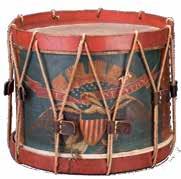
Oct. 29 & 30, 2022

Charleston Gun & Knife Show


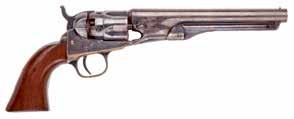

Exchange Park Fairgrounds 9850 Highway 78 Ladson, SC 29456
Nov. 26 & 27, 2022

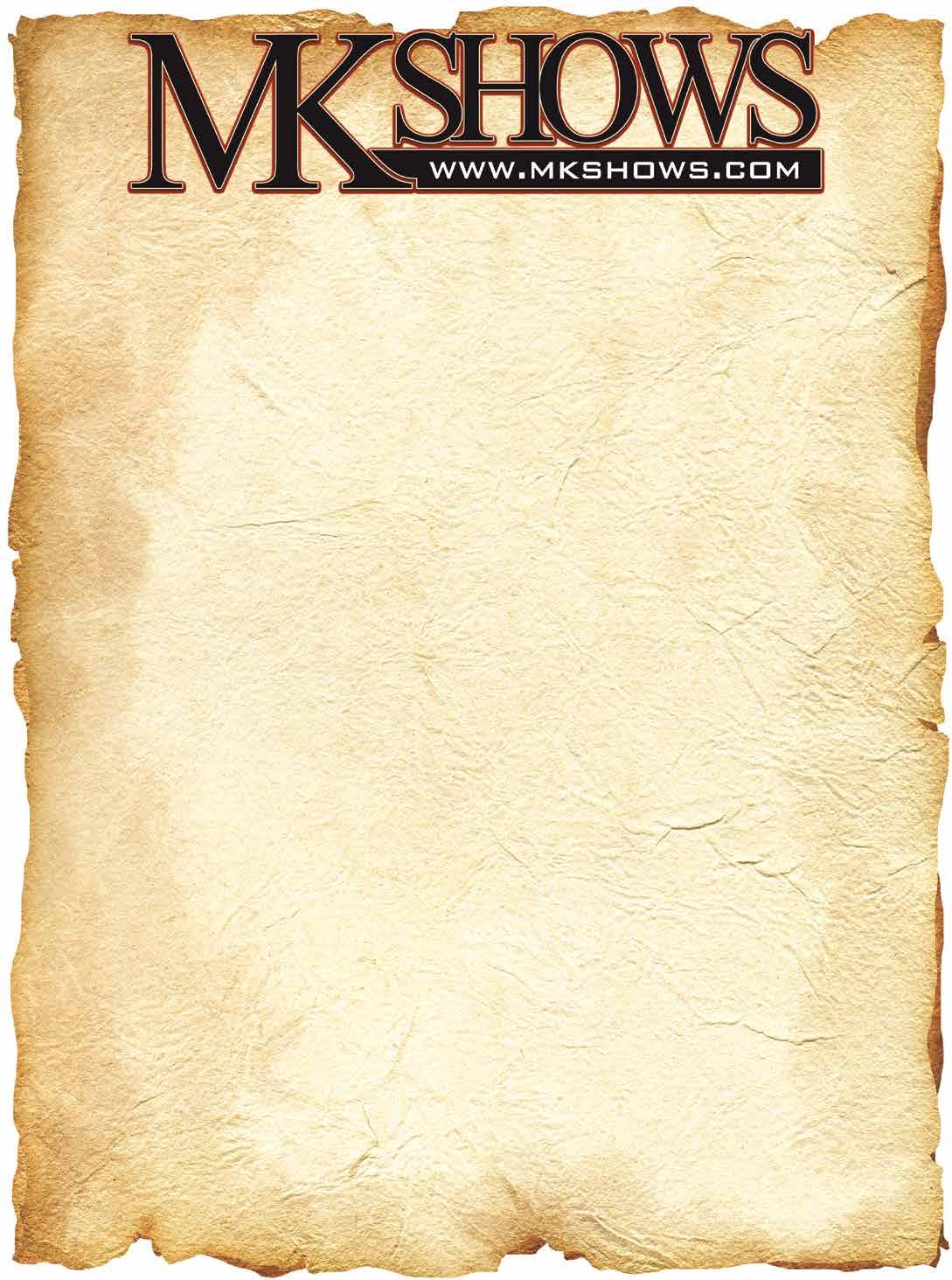
Mike Kent & Associates, LLC • PO Box 685 • Monroe, GA 30655 770-630-7296 • Mike@MKShows.com • www.MKShows.com Military Collectible & Gun & Knife Shows Presents The Finest
Williamson County Ag Expo Park 4215 Long Lane Franklin, TN 37064 Dec. 3 & 4, 2022
Carolina
Fairgrounds
SC 29202 Dec. 10
10,
Promoters of Quality Shows for Shooters, Collectors, Civil War and Militaria Enthusiasts
Middle TN (Franklin) Civil War Show South
State
1200 Rosewood Drive Columbia,
&
2022 Columbia Gun & Knife Show
H Authors . . . . . . .
from page 1 ground, and breaking bread is invigorating. Friendships form for a lifetime. The comradery makes it all worthwhile.”
One strong thumbs up from both the authors and readers was given to the company’s ongoing initiative to bring longlost or under-appreciated primary sources back to life. Savas commented that one of his most satisfying ongoing projects is “bringing back important out-ofprint titles, like The Bachelder Papers and The Gettysburg Papers, while also developing new primary source materials. For example, author Tom Clemens
is just now finishing editing and annotating The Ezra A. Carman Papers, a large two-volume set similar to Bachelder but on the Antietam/Maryland Campaign.

Authors M. Chris Bryan and Mike Harris are working with several associates to edit and annotate the massive unpublished collection of Union general officer reports filed immediately after the war. Few people even know they exist, and authors rarely if ever use them.” While some reports are a few paragraphs in length, Savas noted, others are long and detailed. One runs 180 pages with sketches and maps!

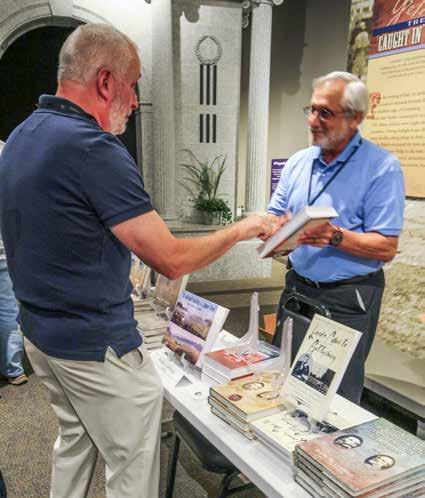
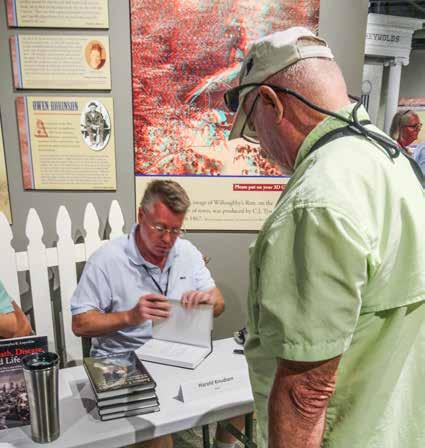
The collection will comprise six or seven large volumes. “These
works,” Savas explained, “will be used to write the books for the next generation of readers.”
Savas Beatie Media Specialist Sarah Closson said, “I schedule most of the events for these authors, so these meetups allow me to see them face-to-face and in action on the field. It helps me understand their strengths, and it offers our readers a chance to meet and hear them. The panel discussion free-for-all is always a hit with readers. Another highlight of the meetup was talking to so many people who enjoy our books, embrace our authors and our pit bull Kenya! We look forward to doing it again next year.”
Savas stated that this was definitely going to be an annual event. When asked to verify a rumor about the possible location, he grinned as he replied, “We surveyed those who attended

and will announce next year's location as soon as possible. We are thinking early June 2023, and likely at, well, you will just have to wait and see." Visit https:// www.savasbeatie.com.

4 CivilWarNews.com October 2022 4 October 2022 CivilWarNews.com
Brad Gottfried talks with a William Kennedy at the Heritage Center.
Harold Knudsen signs a book for a customer.
The Belly Brothers: Dave Powell and Ted Savas discuss French fries and the walking tour.
Charlie Knight, Chris Loperfido and son Vinny, and Harold Knudsen, ready to autograph their books.
Patrick Brennan with colorized “Harvest of Death” photo.
Ron Kirkwood discusses Spangler Farm.
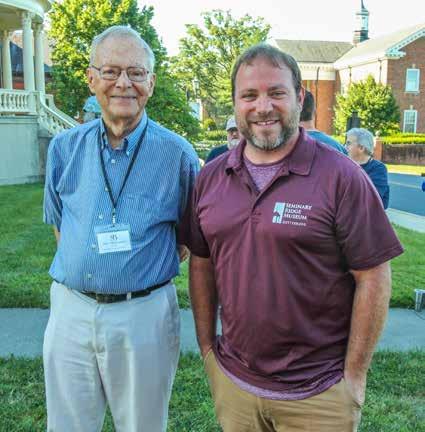
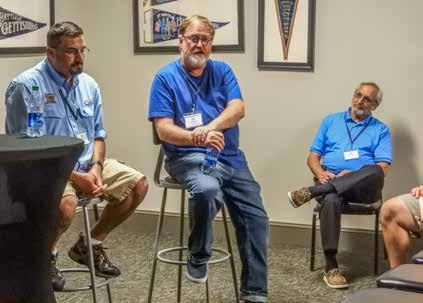

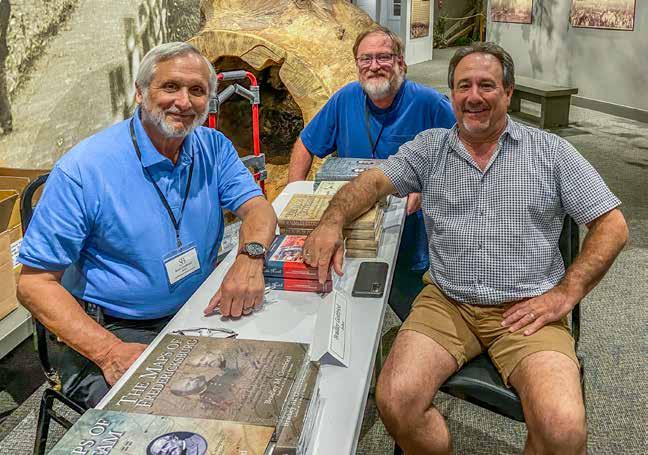

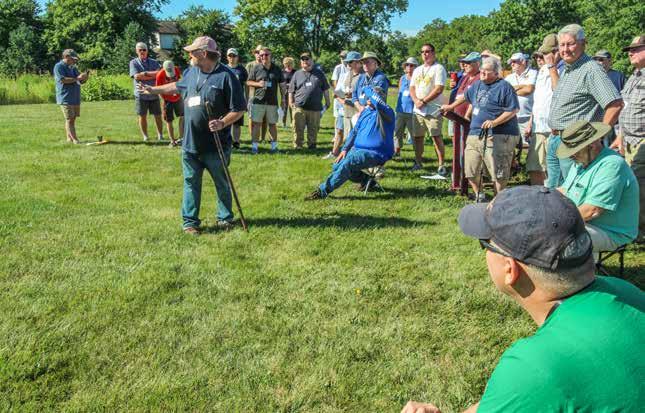
5 October 2022 5 October 2022 CivilWarNews.com CivilWarNews.com
Gerry Christianson and Rob Williams, Seminary Ridge Museum Director of Outreach.
Panelists Mike Harris, Dave Powell, and Brad Gottfried discuss the writing process.
Organizers Sarah Closson (Savas Beatie) and Denise Doyle (Gettysburg Heritage Center).
Brad Gottfried, Dave Powell, and Ted Savas.
Brad Gottfried leads a tour about Rodes’s Brigade in the Sunken Road at Antietam. (Photo by Sarah Closson)
Dave Powell leads a walking tour about Perrin’s Brigade on July 1.
York Underground RR Museum Dedicates New Casteel Statue
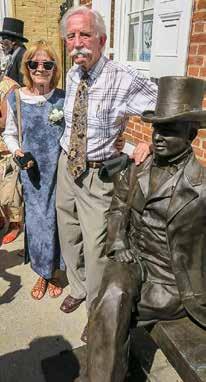 by Leon Reed Sculptor
by Leon Reed Sculptor
Gary
Casteel,
best known for Gettysburg’s James Longstreet statue, watched with pride as the governor of Pennsylvania, mayor of York, and other dignitaries dedicated his most recent work, a statue of York businessman and Underground Railroad leader William Goodridge.

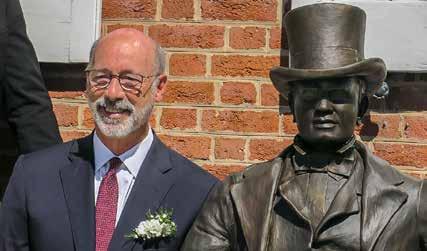
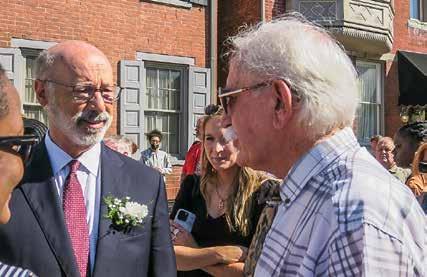

The ceremony was the culmination of a project that started in July 2018, when Casteel visited the William Goodridge Freedom Center and Underground Railroad Museum. They were thinking about a statue and were looking for ideas. Gary had some: “Human scale. Sitting, not standing. right on the sidewalk in front of the building. People want to interact with him, take a selfie.” The Goodridge Center people talked to a few other sculptors, asked for drawings, talked some more, and pretty soon Casteel was the only sculptor they were talking to.
“When I researched Mr. Goodridge,” Casteel said, “I was blown away. When you consider the challenges he had to overcome and the things he accomplished, I can’t think of a more deserving subject.”
Goodridge was born into slavery in Baltimore in 1806. Apprenticed to a York, Penn., tanner, he quickly learned the trade, and to read and write. He earned his freedom at age 16 and went on to become one of York’s most prominent businessmen. Starting with a one seat barbershop, he expanded his empire to include an emporium where he sold hair products, toys, perfumes, and fresh fruit from the Caribbean. He was also a
major figure in the Underground Railroad, sometimes sheltering people in a special hideaway in his own home before moving them along the network.
The ceremony took place on Friday, August 12. Participants included a group of Living Historians from York and nearby towns, a high school drumline and dance troupe, local elected officials, and citizens. Governor Wolf hailed the monument’s dedication as “a landmark
moment for York. . . . We need to get these stories the attention they deserve; they help connect your present to a central piece of your past.”
When the ceremony was over, the monument was unveiled … and just as Casteel said, they all, donors, Goodridge Center board members, and politicians, lined up, schedules momentarily forgotten, to get a selfie with Mr. Goodridge.
As a conductor and stationmaster on the Underground Railroad, William C. Goodridge (1806 – January 1, 1873), helped freedom seekers escape slavery. Born a slave in Baltimore, Md., he became a successful businessman and entrepreneur in York, Pennsylvania, then risked it all to help others. This mural about Goodridge is on West Market Street in York, Penn. This 24 feet wide and 23 feet tall mural about Goodridge is on West Market Street in York, Penn. It was completed by Don and Jared Gray in June 2000. The mural features the grown and successful Goodridge in the center, with his advertisement behind him for the Goodridge Building on Centre Square. The square where the building was once the first 5-story building in York is a few blocks East, past the mural, at the intersection of Market and George. Also shown on the mural are a railroad car, representing the 13 rail cars Goodridge owned, a barbershop pole, and pictures of Goodridge as a babe in his mother’s arms, and as a young boy. Photo by Anne Gray.

100 Significant Civil War Photographs:


Atlanta Campaign collection of George Barnard’s camera work. Most of the photographs are from Barnard’s time in Atlanta, mid-September to mid-November 1864, during the Federal occupation of the city. With this volume, Stephen Davis advances the scholarly literature of Barnardiana.
+ $3.50 shipping 128 pages, photographs, maps, bibliography. $19.95 + $3.50 shipping. Softbound. ISBN: 978-1-61850-151-6. www.HistoricalPubs.com. Order online at www.HistoricalPubs.com or call 800-777-1862
6 CivilWarNews.com October 2022 6 October 2022 CivilWarNews.com
Living historians and politicians pose after ceremony.
Governor Wolf thanking Gary Casteel for his sculpture.
Governor Wolf with Goodridge. (All photos by Leon Reed)
The statue sitting on truck bed in front of museum.
Sculptor Gary Casteel with his wife, Suzanne.
The American Civil War was the first war in which both sides widely used entrenchments, repeating rifles, ironclad warships, and telegraphed It was also the first American War to be extensively photographed. Mathew Brady, Alexander Gardner and Timothy O’Sullivan are famous for having made iconic photographs in the Civil War’s eastern theater. George N. Barnard deserves to be ranked in this top tier for his photographic work in the war’s western theater. A civilian photographer hired by Gen. William T. Sherman’s chief engineer to take pictures of fortifications around Atlanta, Barnard took several hundred of them in and around the city in the fall of 1864. His most famous is the site of Union Maj. Gen. James B. McPherson’s death in the battle of Atlanta, July 22, 1864. Thus far, no comprehensive, definitive listing has been made of the photographer’s The Library of Congress has 130 images; the U. S. Military Academy at West Point, New York, has at least 98 photographs, donated by Captain Poe’s widow. Other repositories, such as the Gilder Lehrman Institute of American History in New York City, have smaller collections. For this book we have chosen hundred images we deem “significant,” though other students may wonder at some of our selections. We hope that this work will stimulate further interest in Barnardiana, and that other scholarly volumes are yet to come. The Atlanta Campaign STEPHEN DAVIS 100 SIGNIFICANT CIVIL WAR PHOTOGRAPHS ATLANTA CAMPAIGN $19.95
Civil War News is the only national monthly C ivil War publication in newsprint and digital form for history lovers, battlefield travelers, collectors, an d avid readers. Each issue covers various topics from the Calendar of Events, including shows and seminars, reenactments, living history, and current book reviews. Regular columns include interesting articles by renowned authors Craig Barry, Salvatore Cilella, Stephen Davis, Stephanie Hagiwara, Gould Hagler, Chris Mackowski, and Michael K. Shaffer.
We are proud to partner with the American Battlefield Trust and provide up-todate news on their latest preservation efforts. Th e annual subscription is just $41, and there is something for everyone in each issue.



The Artilleryman is a quarterly magazine for collectors, competition shooters and those interested in ordnance from the Revolutionary War to World War II, primarily focusing on cannon, implements, projectiles and related artifacts from the American Civil War. This full color magazine features articles on cannon safety, artillery history, projectiles, fuses, places to visit, book reviews, competition events, and so much more. The annual quarterly subscription price is just $37.95.


Military Antique Collector is a bi-monthly magazine with detailed high-resolution color photographs of some of the world’s most beautiful and unusual military collectibles. Dedicated to both the expert collector and novice alike, each issue is teeming with informative articles written by leading authorities in their fields of expertise, including distinguished well-known authors, along with prominent museum and auction professionals. Issues spotlight rare and unusual military objects, craftsmanship works, and their relationship to historical figures dating from early American and European history to limited coverage of the post-1898 artifact. Priced at only $39.95 for 6 issues. It’s easy to see why Military Antique Collector magazine has become so popular so fast.


Vol. 39, No. 4 Fall 2018 $8.00
•
2.25-Inch
•
Also in is issue: HistoricalPublicationsLLC.com
ArchaeologicalExcavationsataConfederateBattery
HistoricalArtilleryofLeHôpitaldesInvalides
Coastal
Artillery at Fort Moultrie • 100-Pounder Navy Parrott Shells Confederate
Projectile Identified
The Evolution of Brooke Sabots
McCormick CWI Offers New Interpretive Program & Shares Findings
by Jonathan A. Noyalas
New Interpretive Program Debuts at Fort Collier
Earlier this year Shenandoah University’s McCormick Civil War Institute (MCWI) forged a partnership with the Fort Collier Civil War Center in Winchester, Va., to enhance interpretive efforts at the ten-acre site that figured prominently in the Third Battle of Winchester and to offer public programs throughout the year. On Saturday, June 25, MCWI’s director, Prof. Jonathan A. Noyalas, conducted an interpretive program, “They Have Completely Surrounded Stine’s House:” The Construction and Early Use of Fort Collier. The program, which guided visitors
around the property focused on the fort’s construction, initially supervised by Lieutenant Cowles Myles Collier, and the war’s impact on Isaac Stine and his family. Five descendants of the Stine family attended the program.
Additionally, MCWI published a new handout available on Fort Collier. The handout offers information about the Stine family, Lieutenant Collier, and the Union cavalry charge that sealed Confederate general Jubal Early’s defeat at the Third Battle of Winchester. Fort Collier is located at 922 Martinsburg Pike in Winchester.
MCWI Summer Fellows Share Findings
Since the summer of 2017 MCWI has offered summer fellowship opportunities as the result of the generosity of our donors for students to work closely with Prof. Noyalas on various topics related to the
Civil War era in the Shenandoah Valley. Previous summer fellows have conducted research related to the Battle of Cool Spring, Judge Richard Parker, and Union veterans residing in the Shenandoah Valley in the decades after the conflict. This summer



Valley after the Civil War’s end. This summer’s fellowships also supported a much larger digital history project MCWI is engaged in as an affiliate member of the Council for Independent College’s Legacies of Slavery Project. This project is being
Visit preserved battlefields. Discover amazing stories. Engage with our past. JOIN A TOUR many options available
8 CivilWarNews.com October 2022 8 October 2022 CivilWarNews.com
MCWI’s director, in red shirt, leading a new interpretive program at Fort Collier in June. (Photo courtesy Jonathan A. Noyalas)
three history majors, Caitlyn Graulau, Brennan Komelasky, and Steven Stabler, worked as summer fellows researching places and individuals mentioned in primary sources related to celebrations of the Emancipation Proclamation in the Shenandoah TOUR CULPEPER BATTLEFIELDS & HISTORIC SITES www.culpeperbattlefields.org
Cedar Mountain Battlefield, Culpeper County, Va. BUDDY SECOR
done in collaboration with the Gilder-Lehrman Center for the Study of Slavery, Resistance, and Abolition at Yale University with financial support from the Andrew Mellon Foundation.

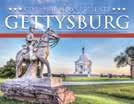
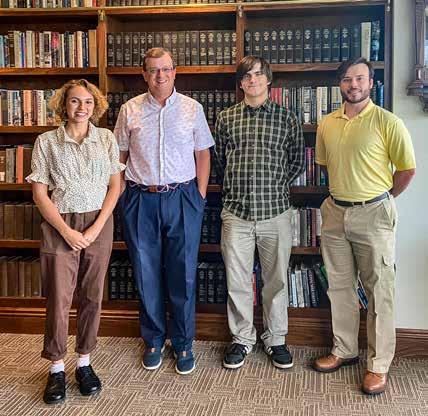
Over the past sixteen months a team of researchers, many of whom are students, have identified various relevant documents, largely newspaper accounts. With those sources collected, the moment arrived to bring context to them and resurrect the stories of numerous people, groups, and places mentioned in the articles. Among the stories resurrected

by summer fellow Caitlyn Graulau, and shared as part of Shenandoah University’s College of Arts and Sciences Summer Scholar’s Program, was the story of Jasper Thompson. A figure mentioned frequently in newspaper articles in the late 1860s and early 1870s as fulfilling various leadership roles at Emancipation celebrations in the northern Shenandoah Valley, Thompson was born in Harpers Ferry in January 1844. On March 29, 1864, Thompson enlisted in the 23rd USCT and by war’s end rose to the rank of first sergeant.





INSIDE EVERY ISSUE


Thompson married Dolly Ann Irwin in 1869. The couple had twelve children. Thompson met a tragic end to his life when he was murdered by his neighbor on September 6, 1906. Thompson is buried in Fairview Cemetery in Charles Town, W.V. MCWI summer fellows Brennan Komelasky and Steven Stabler shared findings about a variety of topics including area African American bands that played at Emancipation celebrations and the ways in which Emancipation’s legacy lived at Storer College in Harpers Ferry.
The digital history project, tentatively titled “The Spirit of Freedom,” is slated for release in the latter-half of 2023.







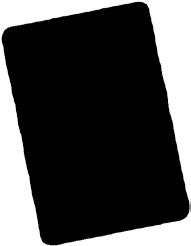

9 October 2022 9 October 2022 CivilWarNews.com CivilWarNews.com www.HistoricalPublicationsLLC.com
Historical Publications, LLC Civil War News • 800-777-1862 520 Folly Road, Suite 25 PMB 379 Charleston, SC 29412 www.CIVILWARNEWS.com UP-TO-DATE COVERAGE • PRESERVATION NEWS • BOOK REVIEWS SHOWS, LIVING HISTORY AND REENACTMENTS • HISTORICAL ARTICLES MONTHLY COLUMNS • CALENDAR OF EVENTS STAY INFORMED! Only $41.00/One Year • $71.00/ Two Years THE MONTHLY CURRENT EVENTS NEWSPAPER -FORCIVIL WAR ENTHUSIASTS SINCE 1974 12 ISSUES PER YEAR PRINT & DIGITAL EDITIONS AVAILABLE CALL OR SUBSCRIBE ONLINE TODAY! 2018 No. $3.50 America’s Monthly Newspaper For War Enthusiasts Never-Before Seen Scrapbook Sheds New Light—Provides Valuable Insights days call troops, governorsclare andmeet president’s volunteer Lincoln Troops Washington, peopleconcerned possibility Virginia southern sympathizers swoopingnap cabinet. never-before scrapbook by Rondout,secretary New Association, provides valuable intocrisis nation’scollection photos, correspondence, souvenirs by York collectionproximately patrioticon war. provides insights pivotal New regiments days acted initial secessioncompromise workedorganization the seriously. 1861, General Sandford, NYSM, eager confrontation wasearlier, 1861, Carolina to Fort Sumter the Military (NYMA) Major res olution After West the Fort back burn Lincoln other expedition. approachingCSA Charleston firesurrender attitude. America’s Monthly Newspaper For Civil Legendary Sept.-voicesPost Bearssunderstanding History and Preservation Community Mourns: The Loss of Legendary Historian Edwin Cole Bearsspreservationwhichranch just Althoughspentafter recipientEd Bearss’ All Time Favorite Civil War Books(1886–1953), Va.,things. Expanded November Book Issue
MCWI’s summer fellows, from left to right, Caitlyn Graulau, Prof. Jonathan A. Noyalas, Brennan Komelasky, and Steven Stabler. (Photo courtesy Jonathan A. Noyalas)
Buying and Selling The Finest in Americana 11311 S. Indian River Dr. • Fort Pierce, Florida 34982 770-329-4985 • gwjuno@aol.com George Weller Juno
First Sergeant Jasper Thompson’s tombstone in Fairview Cemetery. (Photo courtesy Caitlyn Graulau)
by Carl Sell Jr.
While Major General Jeb Stuart led most the Confederate cavalry around the Union Army on his way north in June 1863, Lieutenant Colonel Elijah V. White guided his Thirty-Fifth Battalion Virginia Cavalry on a more direct route. As a result, White and his men were the first to enter Gettysburg, on June 26, well before the famous battle began on July 1; Stuart only arrived July 2.
White was actually supposed to be with Stuart on the ride around the entire Army of the Potomac. After the June 9, Battle at Brandy Station, Lieutenant General Richard (Baldy) Ewell, requested that White join his newly formed Second Corps. Stuart at first refused, but was apparently overruled by General Robert E. Lee.
White and his men had been in the thick of the fighting at Brandy Station, the largest cavalry encounter of the war up until that point. The Thirty-Fifth blunted a surprise Union attack in the morning and then helped turn the tide at Fleetwood Hill later that day. White and his men had
Lige White at Gettysburg
just rejoined Stuart after a monthlong, 700 total miles campaign into the new state of West Virginia to destroy Union rail and wagon bridges over rivers and ravines.
Ewell had begun his march down (north because the valley rises as it spreads southward) the Shenandoah Valley toward the Potomac River, Maryland, and Pennsylvania. White received fresh ammunition on June 11 and then headed up east of the Blue Ridge. He crossed the Potomac near what is now Lovettsville and raided the B&O Railroad at Point of Rocks, Md., destroying two locomotives and cars while engaging and routing two Union cavalry units, the Loudoun Rangers and Cole’s Battalion.
He then recrossed the Potomac, went through the Blue Ridge Mountains, forded the Shenandoah River, and recrossed the Potomac at Boteler’s Ford near Shepherdstown, W.Va. They rode on through Sharpsburg and Hagerstown, then caught up with Ewell at Chambersburg, Penn., on June 24.
At Chambersburg, Ewell decided to split his corps, commanding one group that
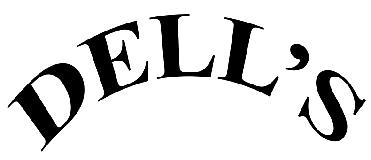
went toward Carlisle, Harrisburg, and the Susquehanna River, while sending White with Major General Jubal Early toward Gettysburg, York, and, ultimately the Susquehanna farther east. The idea was to threaten supply lines heading west from Philadelphia and New York, as well as north from Baltimore and Washington City.
Early then split his own force, sending White and Brigadier General John B. Gordon’s Georgia infantry straight down the Cashtown Road toward Gettysburg. On June 26, White rode into Gettysburg, brushing aside the TwentySixth Pennsylvania Emergency Regiment, which had just arrived to protect the town. A Gettysburg newspaper reported the “advance consisted of about 200 of White’s mounted guerrillas, who charged up Chambersburg street in the most terrific manner, yelling like demons and firing their revolvers as they passed through town.”
Just outside town, the Comanches caught up with two members of the Adams County Cavalry, a militia unit recruited from the Gettysburg area. George Washington Sandoe was killed trying to escape, the first soldier from either side to die at Gettysburg.

When Major General Early arrived at Gettysburg, he gathered town leaders and demanded that the town supply him with ransom and supplies. However, he found that town’s coffers had been moved out of reach and supplies were limited to some 2,000 rations found in railroad cars. The rations were distributed to Gordon’s soldiers.
General Early fared better at York. There, he collected $28,600 of a $100,000 ransom demand in addition to between 1,200 and 1,500 pairs of shoes and socks and three days rations. Town leaders told him additional
money and supplies had been “run off” previously, and Early said in his memoirs that he was satisfied that an honest effort had been made to raise what had been called for.
That night, General Early rode out to the Susquehanna bridge to determine if it had been burned. He found the bridge to Columbia on the eastern shore on fire, having been destroyed by Union militia to thwart a Confederate advance. Early had hoped to cross, cut the Pennsylvania Railroad, then advance on Lancaster and Harrisburg. Likewise, White reported he destroyed the depot at Hanover Junction and two bridges but had not been successful in destroying other bridges because they were defended by infantry.

The evening of June 29, General Lee ordered General Ewell to move the entire Second Corps back, west of South Mountain. Early started in that direction with the Thirty-Fifth in the lead. The morning of July 1, he was told to move toward Gettysburg. Upon arriving in sight of Cemetery Hill and Culp’s Hill, he saw the two armies were engaged.
Earlier, White and his men had fared well in capturing horses, food, clothing, and other items from civilians along the way. They enjoyed the food and wore the clothes but found the horses were not as suitable for cavalry as they had hoped.
On June 27 at Hanover, they intercepted a wagon loaded with jewelry. The owner, storekeeper William Broadenhamer, was fleeing town. The Confederates confiscated watches, rings, and other jewelry and buried the rest. After the war, White wrote to partisan Ranger John Singleton Mosby, telling him of the affair. Broadenhamer estimated his loss at $1,000 and filed a Civil War Damage claim for that amount with York County. Records indicate he collected.
That afternoon, White’s cavalry raided a store, taking calico, muslin, and gingham dress goods, as well as hats, shoes, boots, hose, handkerchiefs and a large quantity of groceries. They tried to pay with Confederate money, but Sarah Ziegler Bott, wife of an owner, refused to accept it. Later, Confederate riders opened a distillery and drank some rye whiskey before officers intervened and 46 42-gallon containers were destroyed. Owner Henry Fishel claimed a $1,200 loss. The next day, they raided another store, taking 200 dozen eggs and 10 barrels of mackerel, among other things. At Gettysburg, White divided his forces to scout for information about what was in front of the left wing of the army. On July 1, White and a few men advanced on foot so as to get close enough to see what the Federals were up to. He reported that they hid in
10 CivilWarNews.com October 2022 10 October 2022 CivilWarNews.com
– MAKER –LEATHER WORKS (845) 339-4916 or email sales@dellsleatherworks.com WWW. DELLSLEATHERWORKS.COM
Lieut. Col. Elijah Viers “Lige” White (1832–1907).
the thicket and could hear Union teamsters talking. White reported back that the teamsters said “the whole army was on the way up,” dashing reports that the Federals were retreating.
On July 2, White later said that he “scouted for General Ewell until General Stuart came up, and was with General Stuart in his fight with the enemy that day.” Stuart fought Union cavalry at Hunterstown on July 2, and then on East Cavalry Field behind Cemetery Hill on July 3 but White wasn’t mentioned in either report. One of White’s subordinates, Captain Frank Myers, mentioned tangling with Union pickets during those times.
White’s cavalry established its headquarters on Benner’s Hill, late on July 2, then moved to a nearby field to avoid Federal cannon fire on July 3. When the order came to move toward the Potomac at 2 a.m. July 4, the Thirty-Fifth took a position between Ewell’s Corps and the enemy, fighting off attacks on several occasions.
After leaving Gettysburg, Lee indicated he planned to consolidate his forces, move across the Blue Ridge into Loudoun County, and confront the advancing Union army moving down east of the Blue Ridge.
The same high water conditions the Confederates encountered on the Potomac put an end to those plans when they tried to cross the Shenandoah River. Union cavalry and infantry had moved down east of the Blue Ridge and taken possession of the mountain passes.
Undaunted, White moved the Thirty-Fifth Battalion into Loudoun County by swimming their horses across the swollen Shenandoah River at Castleman’s Ferry. Stuart directed the rest of the Confederate cavalry farther south where they joined Lee and his infantry on the Rapidan River.
Shortly after he set up headquarters in Purcellville, Union Brigadier General George Custer messaged his superiors on July 18 that his cavalry had driven White’s Battalion “out of this county yesterday.” Custer’s announcement proved a tad premature as White and John Singleton Mosby’s guerrillas harassed Union forces in Loudoun and Fairfax County, as well as along the Chesapeake & Ohio canal in Maryland, for the next three months.
On July 20, White and 150 men joined 200 troopers from the Fifth North Carolina Cavalry at Ashby’s Gap. White took command; after a brief engagement with Union infantry, the Confederates retired,
recrossed the Shenandoah at Front Royal, and camped west of the river. Anxious to return to their old stomping grounds, the Thirty-Fifth returned to Loudoun County through Snickers Gap and remained there until summoned by Stuart to rejoin his command for the November Mine Run campaign.
During that interval, White and Mosby maintained a cat and mouse game with Federal pursuers from the Blue Ridge as far east as Dranesville and Vienna in Fairfax County. They also attacked the Orange & Alexandria Railroad at Fairfax Station, but did little damage, only interrupting rail traffic for a day. Union estimates of White’s strength ranged as high as 700 men. Despite being in enemy territory, the Thirty-Fifth received a large shipment of ammunition on September 27.
Provisions and secrecy marked the Thirty-Fifth’s stay near Snickers Gap during the threemonth period after Gettysburg. On long rides and periods of hiding or waiting to ambush Federal riders, the Confederate troopers existed mostly on grapes or they feasted on meals provided by sympathetic local farmers or captured Union supply wagons they emptied of food and other necessities.

After an October raid on Leesburg Pike near Chain Bridge Road (today’s Routes 7 and 123), the Confederates were pursued by the Sixteenth New York Cavalry, which recovered “four or five saddles, some sabers” and a Confederate haversack that included “about a dozen fresh biscuits, a roast chicken and a tin box of butter.”
At one point the C&O Canal was closed from Point of Rocks to Washington City because of a fear of attacks by either White of Mosby. The canal had just been reopened after being shut down by Stuart at Rowser’s Ford on his roundabout ride to Gettysburg in late June.

White and his men suffered setbacks at Harper’s Ferry and between Waterford and Leesburg because of inadvertent pistol firings just before action began. In the Waterford-Leesburg incident, White himself was guilty of the discharge that warned Union defenders. Otherwise, the Confederates were successful in surprising Union outposts. In between, they gathered at hideouts in the mountains or the village of Woodgrove. On September 24, they were getting their horses shod at Woodgrove when Union forces arrived, scattered the Confederates and captured four, including two
farriers.
During the three months, White lost three men killed or mortally wounded, 78 were captured, and four were wounded. An incident at Waterford caused the Comanches some embarrassment when the wife of Sam Means, head of the pro-Union Loudoun Rangers, scattered them with an assortment of brooms and rolling pins as weapons!
Much of the information in this article was assembled from Horace Mewborn’s book “None Were Truer or Braver” about Elijah White’s Thirty-Fifth Battalion of Virginia Cavalry. Mewborn died shortly after completing the book. Its content will boggle your mind. Information also came from Official Records, and public records. Like Stuart and Mosby, articles and books about White often are sensationalized when the facts are just as entertaining.
Carl Sell is a frequent contributor to the Civil War News and has written several books, including two about his great grandfather’s service in the Thirty-Eighth and his great uncle in the Fifty-Third Virginia. Both were wounded and survived Pickett’s Charge. Sell can be reached at sellcarl@aol. com or 703-971-4716. Contacts usually result in more stories!
Historic Sites & Experiences

Civil War Medicine Symposium, Oct. 15, 2022





GET TYSBURGexplore
GETTYSBURG MUS EUM OF THE AMERICAN CIVIL WAR
A Rough Coarse Life:
The World of the Civil War Soldier
A NEW Temporary Exhibit Includes items never-beforeseen on display
Artifacts, documents and works of art from the collections of Gettysburg National Military Park and the Civil War Museum of Philadelphia, acquired by the Gettysburg Foundation, offer a window into the lives, experiences and memories of those who struggled, suffered and survived a century and a half ago.
NOW OPEN
Presented by the Blue & Gray Hospital Association and the Gettysburg Foundation at the George Spangler Farm & Field Hospital Covers topics on Civil War medicine and its importance in the overall study of the American Civil War. Learn about the fight that took place behind the lines—the struggle to save lives. In-person & virtual attendance options available. In-person registration closes Oct. 9, 2022.
Children of Gettysburg 1863

Gettysburg’s most family-friendly NEW interactive children’s history museum Explore the stories of Gettysburg through the experiences of children who lived in and near Gettysburg during the 1863 battle. Engaging rst-hand accounts and interactive exhibits bring the stories to life Oct. 9, 2022, 3-5 p.m. | Victorian Fashion Show & Tea Party | Reservations required in advance
Ticket to the Past –
Unforgettable Journeys
The NEW virtual reality experience at the Gettysburg Lincoln Railroad StationTM Travel back to 1863. Meet some unlikely station occupants. Hear stories of their experiences during the aftermath of the battle. Get a glimpse of President Lincoln's arrival to the station. Now Open
877-874-2478 or visit GettysburgFoundation.org
11 October 2022 11 October 2022 CivilWarNews.com CivilWarNews.com
Gettysburg National Military Park Museum & Visitor Center THE OFFICIAL START TO YOUR GETTYSBURG VISIT Proceeds from tickets and other purchases in the Museum & Visitor Center benefit Gettysburg National Military Park and Eisenhower National Historic Site. See the Film. Experience the Cyclorama Explore the Museum Tour the Battleeld with a Licensed Battleeld Guide. Connect with National Park Service programs Tour Eisenhower National Historic Site Home tours operate through Oct. 10, 2022 Visit the Gettysburg National Cemetery Journey to our historic sites & experiences For tickets and current hours, call 877-874-2478 or visit GettysburgFoundation.org
THE GETTYSBURG FOUNDATION PRESENTS:
tickets and current hours, call
For
New Exhibit Now Open
Emerging Civil War Series Spotlight
The Great Battle Never Fought: The Mine Run Campaign, November 26 – December 2, 1863 by Chris
Mackowski Savas Beatie, 2018
Editor’s Note: Civil War News is pleased to continue a new monthly series highlighting books in the Emerging Civil War Series (ECWS) published by Savas Beatie, LLC.
intent on trying again to bring about the great battle that would end the war.
The Great Battle Never Fought: The Mine Run Campaign, November 26-December 2 1863 recounts the final chapter of the forgotten fall of 1863 when George Gordon Meade made one final attempt to save the Union and, in doing so, save himself.
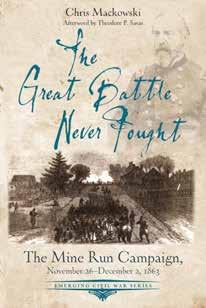
Q&A with Chris Mackowski
What got you first interested in the Mine Run Campaign?
The area around Fredericksburg, Va., has probably the most incredible Civil War story in the country because it covers such a vast swath of time, from the spring of 1862 through the summer of 1864. Four major battles happened in that time: Fredericksburg, Chancellorsville, the Wilderness, and Spotsylvania. The National Park Service preserves parts of all four of these battlefields.
Battle of the Wilderness myself, and then I even did North Anna, another overlooked battle I’m fascinated with. By then, we had a book in the Emerging Civil War Series about the Bristoe Station Campaign, so it made sense to pick up that story and finish off the “forgotten fall” of ’63.
I wasn’t sure Ted Savas would bite on the idea, but little did I know when I pitched it to him that he was as big a Mine Run fan as I was. In fact, he helped locate the Payne’s Farm battlefield, which had for years been misidentified. Finding the “lost” battlefield provided a vital jump-start to the process of remembering; having the battlefield led to increased awareness, interpretation, research, and tours. I hope it will lead to more preservation, too, for there’s much out there left to save. I was pleased when Ted offered to write an afterword for the book that outlined that whole part of the story, which was really cool.
Battlefield Trust has preserved that pristine part of the battlefield. But sometimes people look at Payne’s Farm and think that’s all there was. Because not more has been preserved, people don’t think there was more to it. If there’s any hope of the Mine Run campaign assuming a more prominent role in the popular chronology of the Civil War, it’s in the battlefield itself. If the land is preserved, then we’ll all have a tangible plot on which to ground ourselves. This ties back to the importance of preservation in general, of course. The first step in forgetting a battle is losing the battlefield. Think “Salem Church” as the poster child.
As you did your research, did you come across any new discoveries? Was there anything that surprised you?
sit there but in doing so, he lost an incredible opportunity to deliver a crippling blow against Meade. The Army of Northern Virginia just didn’t have the offensive punch it once had; it was made worse by the absence of Longstreet’s First Corps in the west.
About the Book:
The stakes for George Gordon Meade could not have been higher. After his stunning victory at Gettysburg in July 1863, the Union commander spent the following months trying to bring the Army of Northern Virginia to battle once more and finish the job. The Confederate Army, robbed of much of its offensive strength, nevertheless parried Meade’s moves time after time. Although the armies remained in constant contact during those long months of cavalry clashes, quick maneuvers, and sudden skirmishes, Lee continued to frustrate Meade’s efforts.
Meanwhile, in Washington, D.C., Meade’s political enemies launched an all-out assault against his reputation and generalship. Even the very credibility of his victory at Gettysburg came under assault. Pressure mounted for the army commander to score a decisive victory and prove himself once more.
Smaller victories, like Bristoe Station and Rappahannock Station, did little to quell the growing clamor, particularly because out west, in Chattanooga, another Union general, Ulysses S. Grant, was once again reversing Federal misfortunes. Meade needed a comparable victory in the east.
And so, on Thanksgiving Day, 1863, the Army of the Potomac rumbled into motion once more,
Like a lot of people, when I first started piecing those events together within the larger story of the war, I followed the armies from Chancellorsville up to Gettysburg, and then, oh look, there’s Brandy Station along the way, and from Gettysburg I just sorta jumped to the Wilderness. That’s a 10-month gap! Well, what happened in there? That’s what let me to Mine Run.
I became fascinated with this forgotten campaign that had all the potential to become a battle every bit as big as the other four battles around Fredericksburg. The fact that it didn’t, that it all really boiled down to the moral courage of George Gordon Meade, was a gob-smack to me. The campaign really comes down to what didn’t happen and why, but it had huge implications for the armies and the officers involved; it really set the stage for the 1864 Overland Campaign even while it also had all these echoes of the battle of Fredericksburg from a year earlier. The whole story comes together in just incredibly fascinating ways.
What inspired you to translate your interest in Mine Run into a book? I’d wanted to write a book about Mine Run for quite a while, actually, but I wasn’t sure the market would handle it. So, we went through all the other battles in the area first. I worked on most of those with my partner-in-crime, Kris White. I did Hell Itself: The
Were there particular misconceptions about Mine Run you were hoping to clarify? There aren’t necessarily a lot of misconceptions about Mine Run because people forget about it altogether! If there is a misconception, it’s that it was no big deal. People don’t realize that it had the potential to be every bit as big as, say, Chancellorsville. Another reason people don’t realize its potential is because the only part of the battlefield that’s been preserved is Payne’s Farm, where serious fighting took place on November 27. There were minie balls by the bucketful, a North Carolinian said. We’re lucky that the American
I was amazed at how much of the Confederate line is actually still there. It just hasn’t been preserved. A friend of mine, Ron Veen, lives out there. He took me with permission through his neighbors’ yards and all over the place. We could match up nearly the entire length of Lee’s line with old survey maps the NPS did back in the 1920s. Lee built an incredibly strong set of fortifications at Mine Run. They were enough to scare off the Union army just by sight; most of that line is still there, almost all on private property.
Another surprise to me was how Lee was really starting to feel the losses from Chancellorsville and Gettysburg by the time he got to Mine Run. He built this incredibly powerful line and was understandably content to
Finally, I came across a great find that had never before been published: a watercolor sketch of New Hope Church, a painting by a relative of Henry Wadsworth Longfellow. Longfellow’s son was grievously wounded fighting near the church, and as Longfellow later nursed his son back to health, he wrote the poem “I Heard the Bells on Christmas Day.” One of their relatives was a professional artist, and she did this watercolor of the church, which was in the archives of the Longfellow House in Boston. I was thrilled to uncover that wonderful little gem.
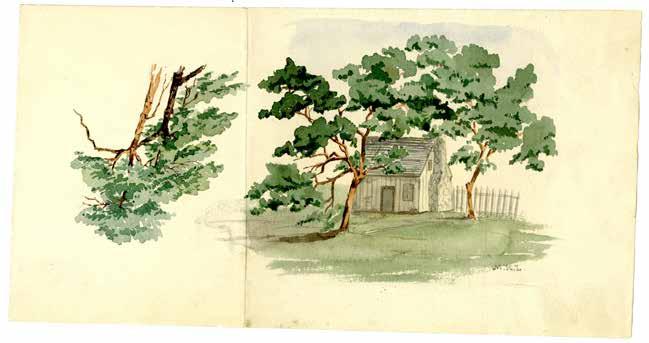
What was the most challenging part about writing the book? Why? So little has been written about Mine Run, and much of that was wrong, so there wasn’t a very clear trail blazed ahead of me. That was okay because it really offered me a chance to add to the literature. Sometimes it’s nice to have someone else’s work to check your own work against; I didn’t really have much opportunity for that!
Because I really believe it’s fundamentally important to know a battlefield before you write about a battle, learning the ins and outs of this battlefield was tricky because so much of it is in private hands. I met a lot of new
12 CivilWarNews.com October 2022 12 October 2022 CivilWarNews.com
In 1877, professional artist Mary King Longfellow of Portland, Maine, captured New Hope Church in watercolor. This rare image—first published in the Civil War literature in The Great Battle Never Fought—shows a modest wood- frame structure with a stone chimney. Image courtesy National Park Service, Longfellow House— Washington’s Headquarters National Historic Site.
folks who were kind enough to let me and Ron walk around on their property!
Who is someone in the book you came to better understand or appreciate?
Why? George Gordon Meade is someone I’ve always admired for his professionalism. Meade attracted me to this story because his personal tale is very much wrapped up in the story of Mine Run in a way no one else’s was. Everything was at stake for him. Halleck was peppering him, Lincoln was pressuring him, Grant was winning at Chattanooga, Dan Sickles was back stabbing him in Washington; he desperately needed a big win. Rather than throw away the lives of his men, he chose to avoid needless sacrifice at the expense of his own career. That took tremendous courage.
nonfiction the way Grant’s Last Battle or even Strike Them a Blow tend to lean.
June Events and Activity Guide:
June 11 and 12 - Guided Tours of Cedar Creek

June 11 and 12 - 10th Virginia Living History


June 18 and 19 - Family Living History Weekend


June 23 - 6PM, Bourbon on the Battlefield New events added monthly, check our website for updates or call for details!
Because so little had been written about Mine Run, I wanted this to be the definitive account, so I crammed a lot in there. Jeff Hunt has a Mine Run study coming out that will eclipse mine because he has the luxury of a lot more space than I had to work with. Little-known bit of trivia: The Great Battle Never Fought is our longest ECWS book, by word count, in the series, by more than seven thousand words. It also has the smallest font size of any of our books: 9.5. I had to shrink the type size down to get everything to fit. There’s a lot crammed in there!
158th Anniversary Reenactment of the Battle of Cedar Creek October 15th and 16th, 2022


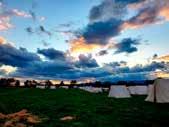


I saw this as Meade’s story so much that I wanted to have his photo on the cover, which is something we don’t normally do for a battle-oriented book. But this is a story about Meade as much as it’s a story of a campaign
Is there some part of the battlefield—or some other related historical place—that your book helped you better appreciate or understand?

Why? I earned a much better appreciation for all the fighting along the Orange Turnpike around Robinson’s Tavern, where the Federal II Corps won the race for a key intersection and controlled the battlefield. I also earned a better appreciation for the intensity of the fighting around New Hope Church.
What did you learn about the writing process by writing this book? From a purely research-oriented perspective, this book contains my heaviest lifting, and I’m proud of it for that reason. A friend told me it didn’t have the typical “Chris Mackowski storytelling” flavor to it, though, and that might be true. It’s definitely a straight-up, straightforward history book as opposed to a work of creative
What sort of feedback have you gotten on the book since it came out? Is there something people particularly enjoy or are surprised by? The most common thing I hear is, “Wow, I didn’t know anything about that.” No surprise, few people do. The next most common thing I hear is, “Is there anything left out there?” Oh, yes, there surely is!
About the Emerging Civil War Series

The mission of the Emerging Civil War Series is to offer compelling and easy-to-read overviews of some of the Civil War’s most important battles and issues. Each volume features more than a hundred and-fifty photos and graphics, plus sharp new maps, visually engaging layouts, and thought-provoking appendices. To date, forty-three books have been published in the series.
The Army Historical Foundation honored the Emerging Civil War Series with its Lieutenant General Richard G. Trefry Award for contributions to the literature on the history of the U.S. Army, calling it “an invaluable collection of Civil War battlefield guides.”
The series has also served as a fertile starting point for a lot of “emerging voices” in the field, something important to us here at Civil War News.
During this two-day event, reenactors recreate the last major battle in the Shenandoah Valley. See cavalry, artillery, and infantry soldiers in action and in camp. Battle scenarios, music, symposia, and medical, military, and civilian demonstrations are scheduled each day. Fundraising raffles, period merchants, and food vendors onsite. Single Day, Two Day, and Discount Ticket Options Available! Children 6 and under are free!
Event Hosted by the Cedar






13 October 2022 13 October 2022 CivilWarNews.com CivilWarNews.com
Creek Battlefield Foundation 8437 Valley Pike, Middletown, VA 22645 540-869-2064 - Info@ccbf.us - www.ccbf.us
Candlelight Tour Program
is an entirely private
to
Join us for this special weekend as history comes to life! More information available at www.ccbf.us Visit our new website at: HistoricalPublicationsLLC.com
Evening
The Cedar Creek Battlefield Foundation
501(c)3 nonprofit dedicated
the preservation and interpretation of the 1864 Battle of Cedar Creek. All proceeds from this event support this mission.
Elmira Prison Camp May 1864
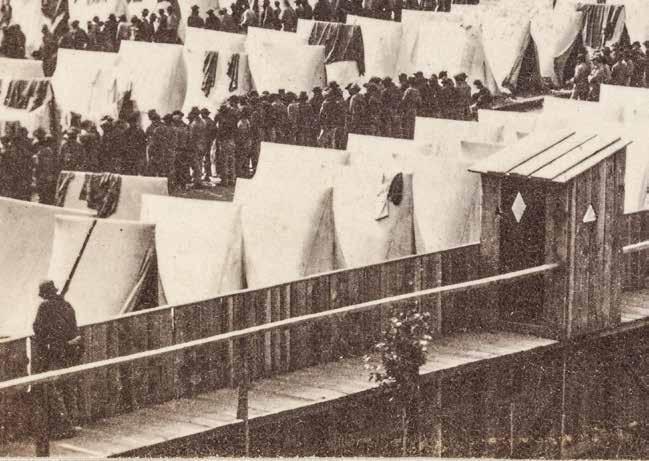

Shootings at Union Civil War prison camps like Elmira were not unusual. Conditions at Elmira were overcrowded and the usual targets were unarmed Confederate prisoners who approached the so-called “dead line.” However, there was one incident that occurred during May 1864 that involved a guard shooting another guard during an argument. This was not common at all. How did it happen?
On the night of August 13, 1864, two off duty privates of the 56th New York Militia named Conauton and Burtis were in their quarters at Camp Chemung. They got into an argument about which were the best fire engines in the city of Brooklyn, New York, of all things. The discussion grew more heated and the Corporal on guard duty (Crummell) was summoned. He was armed with a loaded and capped “Enfield rifle,” most likely the very commonly

encountered Enfield long rifle, pattern of 1853. The weapon discharged in the direction of Conauton and Burtis, whether intentionally or accidentally, at more or less point-blank range. As stated in the medical report, the Minié ball entered the chest of Conauton, exited at his shoulder blade and had enough steam to continue straight through Burtis. It then lodged in the knapsack of a third soldier, whose name has not been recorded.
Since the Enfield rifle in question was serving the cause of the Union at the time, the ammunition would have most likely been the standard threering, soft lead .58 caliber conical “Minié ball” that caused so much carnage to those unfortunate enough to be hit by one on a Civil War battlefield. The Union did not import .577 English cartridges for the Enfield rifle but very often issued standard regulation .58 caliber “rifle-musket cartridges” for both.
Privates Conauton and Burtis were both taken to one of the six
Elmira Prison hospital wards for treatment. Conauton survived his injuries. Oddly the second
man hit, Burtis, was not as lucky. Corporal Crummell was placed under arrest, but subsequently charges were dropped when Conauton testified that the accident was unintentional. It was documented that “the entire camp was dispirited” by the whole episode. Other than luck, is there any possible explanation for why Conauton survived and Private Burtis did not? In terms of ballistics, the soft lead .58 caliber Minié ball immediately “mushroomed out” upon impact with tissue or bones. The flattened, and sometimes splintered, lead projectile caused
a much larger exit wound leaving the body than it did entering. Hence, the projectile that went straight through Conauton was much larger when it next struck Burtis with the most likely result being greater tissue, blood vessel, and bone damage. This, more so than pure velocity, is why immediate surgical amputation was so often required when a projectile of this type struck the bone of an arm or leg.
If loss of life resulting from this accidental shooting seems a foolish tragedy, it is worth mentioning that the vast majority of soldiers chosen for ‘prison
duty’ were not the cream of the crop from West Point, or even the best and brightest of the local rearguard militia. Generally, these assignments were given to volunteers who were not able to serve in the field for one reason or another. For example, the first Elmira Prison commandant was Major Henry V. Colt of the 104th New York Volunteers, brother of the well-known gun-maker, Samuel Colt.
Major Colt enhanced his qualifications for the Elmira Prison post after he sustained a serious injury while jumping over a ditch marching towards a battlefield. The portly Major landed awkwardly and the tip of his scabbard stuck in the ground while his momentum drove the grip or handle of the saber into a very sensitive part of the male anatomy, resulting in, among other problems, a chronic inguinal hernia. Fortunately, Henry Colt and his wife already had two children back in New York before the war because there is no mention in his biographical
14 CivilWarNews.com October 2022 14 October 2022 CivilWarNews.com
Elmira Prison, Elmira, New York. (Library of Congress)
Enlargement showing a guard holding a rifle and the guard shack on the right.
data of any more children afterwards. While two prison guards accidentally shot during an off-duty argument about fire engines was unusual, Major Colt’s disability from his clumsy attempt to jump that ditch in Virginia is potentially one of the strangest and most embarrassing accidental self-inflicted wounds of the Civil War. One struggles to find any record of an incident remotely similar. Most infantry officers before, during, and after the Civil War-era did not wear a saber unless on parade or in battle, especially not while on the march. Officers had a baggage wagon and the cutlery generally rode in the “in the rear with the gear.”


It almost sounds like a comedy skit or a circus clown act, but such were the men assigned to run the Union prison system. However, once his ditch jumping days were behind him, Clayton Holmes noted of Major Henry Colt in A History of the Elmira Prison Camp, (1912) that “[He] was generally well regarded by fellow officers and prisoners at Elmira. Major Colt was considered a fair man and a man of good judgment.”
As far as the final disposition in the case of Private Thomas Conauton, he was very fortunate compared to other soldiers struck at close range by a Minié ball fired from an Enfield rifle. The medical report concludes:
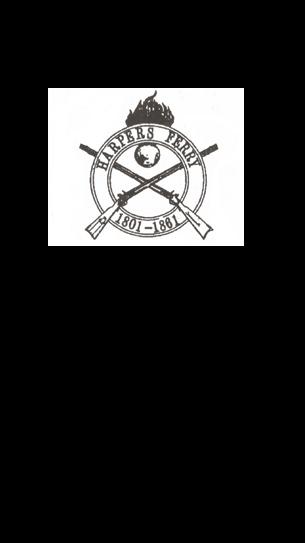

“The patient convalesced without an unfavorable symptom and was returned to duty in less than five weeks from the reception of the wound. On March 19th, 1866, he was carefully examined. Externally, nothing could be seen except the cicatrices and marks of the sutures, while on auscultation and percussion, a dullness was found at the middle lobe of the right lung, confined to a space of about four inches in circumference, where pleuritic adhesion had taken place. Otherwise that lobe was perfectly healthy, as were the remaining lobes of both right and left lungs, he was in perfect health.”
Craig L. Barry was born in Charlottesville, Va. He holds his BA and Masters degrees from UNC (Charlotte). Craig served The Watchdog Civil War Quarterly as Associate Editor and Editor from 2003–2017. The Watchdog published books and columns on 19th-century material and donated all funds from publications to battlefield preservation. He is the author of several books including The Civil War Musket: A Handbook for Historical Accuracy (2006, 2011), The Unfinished Fight: Essays on Confederate Material Culture Vol. I and II (2012, 2013). He has also published four books in the Suppliers to the Confederacy series on English Arms & Accoutrements, Quartermaster stores and other European imports.

15 October 2022 15 October 2022 CivilWarNews.com CivilWarNews.com www.CollegeHillArsenal.com Tim Prince College Hill Arsenal PO Box 178204 Nashville, TN 37217 615-972-2418 www.CollegeHillArsenal.com Want to Advertise in Civil War News? call 800-777-1862 or email us ads@civilwarnews.com
The Sad Fate of Captured Union Sailors
by Joseph Wilson
Few Union sailors serving aboard ship gave much thought to being captured. Boys enlisted in the U.S. Navy boarded ships confident that the superior Union Navy would keep them far from any southern prison. Unlike their comrades serving on land, seamen may have felt a false sense of security on a ship surrounded on all sides by water. Many sailors fell into the hands of the enemy after leaving their ship as part of a landing party in a joint operation between the Army and the Navy. If an unfortunate sailor did land in prison, available data shows that they went to the burial pits at a more alarming rate than soldiers in the Army.
While Civil War prisons are probably the least covered and most neglected aspects of the war; navy prisoners can best be described as a sub-chapter of the war’s prison history that gets even less attention. Most writers choose to focus on the grandeur of battle, after all, dying in prison doesn’t stir emotions like a glorious death on the battlefield. Perhaps shining a light on the enormous prison fatalities may even be an embarrassment for a civilized nation.
Approximately 420,000 soldiers on both sides spent time in prison. Records show that 30,000 Federals died in

confinement for a death rate of 15%. Up north, 26,000 Confederates died in prison for a 13% fatality rate. Those figures are the dead prisoner totals settled on by the government. Modern day researchers think it’s much higher. A trip to a Civil War era prisoner of war facility often brought a death sentence for men after the exchange agreement broke down in 1863. A closer look reveals a more ominous story for the sailors.
The number of navy men captured is small when compared to soldiers taken while serving in the Army. A total of 132,554 men served in the U.S. Navy during the war. While historians offer an unofficial number of between 1,200 and 1,500 captured sailors, that figure may only represent white sailors. Complicating the issue is the many captains who didn’t bother to name individual black seamen in reports, but only reported a total number of colored crewmen, or contrabands.
To undertake a detailed look at all the Union sailors who died in captivity would require an extensive research project that might prove impossible. The effort would be even more difficult when trying to account for captured black seamen who were killed before ever seeing a prison. The issue of accounting for captured sailors is further
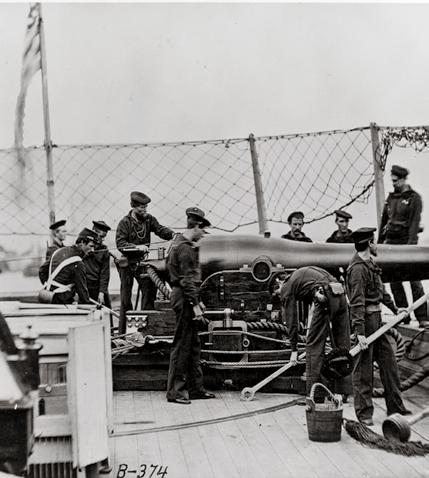
clouded as ships often carried army personnel and civilian watermen, i.e., pilots, who may all have been listed as navy crewmen by their captors.
Andersonville National Historic Site in Georgia has the most complete records of any Southern prison. Andersonville’s NPS database offers a fairly clear picture of the misfortunes that ensued for navy captives in the stockade. The data reveal that captured sailors who entered the Andersonville stockade perished at a significantly higher rate than their army counterparts. While the Andersonville records list an overall 29% casualty rate for all prisoners, the captured sailors far surpassed that number with a staggering 51% death rate. Andersonville National Park data list a total of 201 navy personnel in the stockade. Of that number, 103 sailors never went home. They went to the burial pits and left their bones in Andersonville National Cemetery’s red clay soil. Why the sailors perished at such a higher rate is a matter for debate.
A distinction has always been made between army enlistees from the city and those recruits from the farm who lived in a somewhat less contaminated environment. Country boys leaving the bucolic setting on the farm seem to have attracted more disease than city dwellers once they were in an overcrowded dirty army camp. It’s thought that boys who existed among the germs and bacteria so prevalent in cities had some sort of immunity that may have been an advantage in camp; they had already survived diseases less common in rural areas.
Captured sailors went from one extreme to another. One reason for their demise may be that salt spray and life aboard ship with cleaner air may have offered a cleaner environment than a prison. When they left their lives aboard a somewhat less tainted ship sailors suffered in a prison camp that was even worse than an army camp.
A 51% death rate is hard to imagine even at Andersonville. But it could have been much worse. Sailors at Andersonville enjoyed one perk that saved many more of them from the burial pits. More sailors surely would have died had there not been a separate exchange agreement in September 1864, between Union Secretary of the Navy Gideon Welles and Confederate Secretory of the Navy James
Mallory. That deal freed the naval men from captivity at the height of the dying.
Gideon Welles pressed Lincoln for an exchange of his boys since many smaller exchanges in the army were taking place despite the Dix-Hill pact being dead. General Sherman made private exchanges with General Hood in Georgia. The same kind of swap happened with other generals in the field. Lincoln agreed with Welles that it was only fair to spring the sailors from captivity; Mallory promptly accepted.
A deal was struck between the two navy secretaries to swap navy sailors. Captain Henry Wirz, commandant at Andersonville Prison, received orders to round up the seamen and set them free. Navy boys from the North and South boarded trains for home as the dying continued in prisons. There is no doubt that Andersonville’s excessive rate of 51% sailor death rate would have soared even higher had Welles not intervened.
All the surviving sailors left Andersonville for exchange in September 1864; the remaining Union prisoners, all soldiers, were shuffled around Georgia trying to evade Sherman’s army. Many died at other prisons or along the route. Thousands made a return trip to Andersonville on Christmas for a second stay.
Two sailors among the dead who never made it home met their demise in July 1864 at the end of a rope after being identified as raiders. The raiders had pillaged and murdered their fellow prisoners until the POWs set up a police force to end the violence. A trial conducted by the prisoners inside the stockade found the sailors guilty, along with numerous soldiers, and the death sentence was imposed.
The Andersonville data list 20 sailors from the USS Southfield
On April 19, 1864, the ironclad CSS Albemarle came down the Roanoke River and sunk the Southfield during the Battle of Plymouth. As was the case with regiments in prison, the crew likely stuck together in the stockade. The Southfield prisoners watched as their comrades perished one by one until only one crewman was left among the living. Only a single sailor from the Southfield made it out of prison alive.
Another incident suggests that some of the 43 Navy men who died in the prison hospital may not have been counted among the navy casualties. In September
1864, when the Welles/Mallory exchange became known, a Union navy nurse working in the prison hospital seized on an opportunity to free some prisoners. The nurse, who had served aboard the USS Housatonic, Richard Tinker, switched the names of 43 dead sailors who had died to soldiers in the hospital. Since the naval prisoners were being sent for exchange, the ruse allowed army boys, each now bearing a dead sailor’s name to be exchanged.

Wilbur Hale of the 120th New York Infantry exited through the gates as U.S. Navy Landsman Frederic Augustus James. Frederic was captured in the failed September 8, 1863, attempt to capture Fort Sumter when a flotilla of 20 small boats carrying 400 combatants entered Charleston Harbor to storm the fort. When Frederic landed at Fort Sumter armed with a pistol and cutlass the plan went awry from the start. After taking heavy fire, the boats retreated, leaving 104 men on the island who had no choice but to surrender, including James.
James spent time in several prisons before Andersonville. Less than three months after entering the stockade in Georgia, the lifeless body of Frederic James went to the trenches on September 12, 1864. Less than three months after entering Andersonville, the lifeless body of Frederic James went into the grave. A very much alive Private Wilbur Hale walked free under the assumed identity of Landsman Frederic James. It can be assumed that Wilbur Hale will hold a special place in his heart for Frederic James, the sailor who likely saved his life. Hale went on to live a long life finally passing away in 1920 at the age of 80.
The death of Frederic James must have been figured out after the war since he is resting under grave stone #8858 in the cemetery. Remarkably, only 450 prisoners rest under stones
16 CivilWarNews.com 16 October 2022 CivilWarNews.com
Join the Crew! civilwarnavy.com 1 Year—4 Issues: $37.95 Subscribe Now at civilwarnavy.com Or send a check to: CSA Media, 29 Edenham Court, Brunswick, GA 31523 International subscriptions subject to postage surcharge.
Frederic Augustus James headstone. (Joe Wilson)
marked “Unknown Soldier” from a total of 12,919 prisoners who are buried in the Andersonville National Cemetery. How many unknowns may be sailors is anybody’s guess.
A partial record at another prison holding navy men shows a horrific number of dead sailors so disproportionate to the soldier total. The Confederate Prison Camp Groce in Texas kept fairly reliable data on a large group of Union naval prisoners. From a single lopsided battle on the Calcasieu River on May 6, 1864, a total of 111 sailors entered the Texas prison camp and suffered a devastating loss. The Union seamen who surrendered came from the USS Granite City and the USS Wave.
Of the 111 sailors, only 32 ever saw their families again. The 79 dead sailors represent an astonishing 70% casualty rate for the men from those two ships. The sailors marched through the
gates of the prison in good health; most were carried out feet first. A casualty rate that is shocking when compared to any group.
All the dead prisoners from Camp Groce and Camp Ford rest in the isolated Union POW Cemetery in Hempstead, Texas. All were buried in pits with only cedar crosses marking their graves. Any indication of a cemetery had vanished by the turn of the century. A stone monument installed by Texas in 1987 in front of the secluded field to honor the dead is the only evidence of the hundreds of forgotten prisoners resting beneath the surface. Any suggestion of how many prisoners rest in that cemetery is simply a guess, but somewhere in that field it is known that 79 dead sailors are resting below. And maybe more.
In North Carolina, It will never be known how many dead sailors populate the 18 burial pits in the Salisbury National Cemetery.

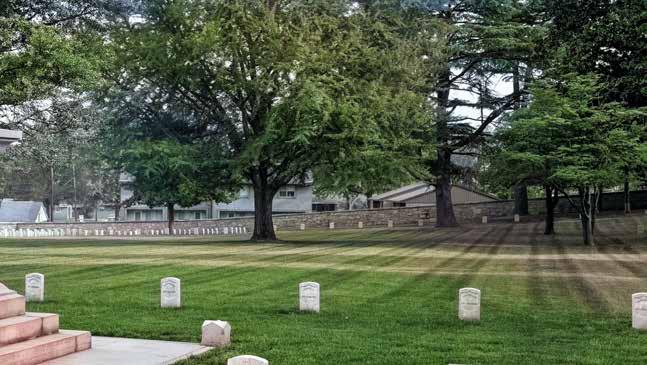
An estimated 3,800 prisoners who died in the Salisbury prison stockade are buried in 18 trenches in what was a cornfield. Dead
prisoners were stacked one on top of another without coffins. To this day, the U.S. government has no idea how many dead prisoners fill the holes. Nor can it be said how many sailors rest in the pits. Only a headstone on one end of the trench and a foot stone 240 feet away mark the lengthy graves holding Union dead.
The same can be said for other national cemeteries at the old POW camps At Florence Stockade in South Carolina, close to 3,000 Union men died. Most prisoners buried in the Florence National Cemetery are unknown. Burial details at Camp Lawton Prison in Georgia put 748 dead prisoners in the ground. All have since been relocated to a National Cemetery. Nearly 360 of Lawton’s dead are unidentified. There’s little doubt that sailors are in to both cemeteries.
Of all the sailors who died after capture, the most elusive
June 24, 1864. The Queen City was captured along with many prisoners, including Surgeon Westfall.
After release from prison, the surgeon filed a report that included a chilling admission by a Confederate officer on Shelby’s staff. Westfall posed the question to the officer as to what they do with captured black men. The southerner answered with stunning honesty that “they would be treated as are the rest we had captured, kill them.” Lucky black sailors and soldiers had their lives spared if forced to work in the official sounding “Confederate Negro Labor Bureau.”
Numbers relating to the Civil War are not absolute. Every year that passes brings new totals in every category. Historians combing through the records come up with an even a more horrible picture of our American Civil War. The appalling
Confederate States military prison in Florence, S.C. Operated from 1864 to February 1865 and housed as many as 18,000 Union soldiers of which 2,800 died. This gazebo stands on the site of the stockade.
group for compiling true figures is the black sailors who fell into Confederate hands. The commander of the captured USS Clifton, Lt. Frederick Crocker, reported all the names of his white seamen, but then added “and 21 mostly colored.” Since captains failed to list their names among their crews, those black Federal sailors who served their country are lost in history’s dustbin.
Nearly 10,000 black sailors served aboard Union ships during the war. If not killed in battle, black sailors faced “Murder in the First” when captured. Navy Surgeon Lewis Westfall served aboard the USS Queen City when she was operating near Clarendon, Ark. The gunboat came under attack by Confederate forces led by General Joseph Shelby on
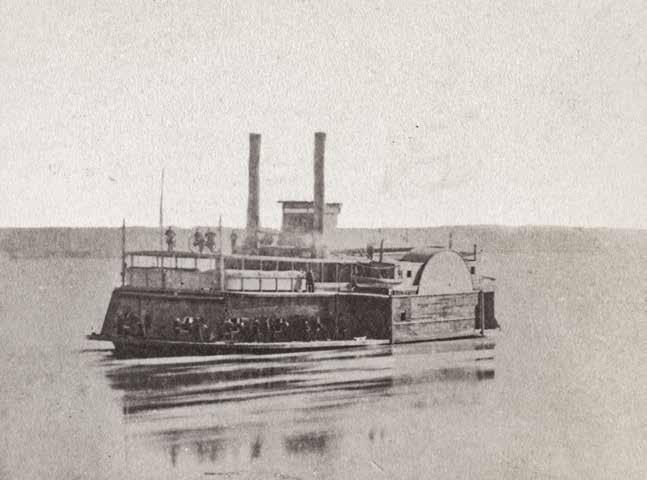
statistics of the navy prisoners at Andersonville Prison and the sailors sent to Camp Groce are a strong indication of the possible fate of more imprisoned sailors. What is already known of the unfortunate ending of some sailors in captivity may only be the tip of the iceberg.
An in-depth study might reveal that the outcome of captured Navy boys may be much worse than we think.
Joseph F. Wilson lectures on Andersonville Prison and is the writer and producer of the Civil War documentary film “Civil War Prisons – An American Tragedy.” The film is available on Amazon. Thanks to “Sailor” Dan Cashin for contributing to this article. Contact joef21@aol.com.
17 October 2022 17 October 2022 CivilWarNews.com CivilWarNews.com
Five of Salisbury Cemetery’s 18 trenches with only headstones and footstones in the distance.
Photo Credits Jerrye & Roy Klotz, M.D.
USS Queen City. (Library of Congress)
The Trust Endeavors to Protect 52 Acres in Virginia, Georgia and Mississippi
As the Trust contends with a growing range of threats and skyrocketing prices, it is more important than ever to push forward in the name of preservation! In its most recent fundraising campaign, the organization looks to save 52 acres at three separate sites: three acres at Chancellorsville in Virginia; 18 acres at Gilgal Church in Georgia; and 32 acres at Corinth in Mississippi. Faced with a total transaction value of more than $1.6 million, the Trust has already received support from landowner donations and is expected to receive government grants. This brings the estimated fundraising need to $160,680, meaning every dollar donated will be multiplied by $10.30!
The three sites represent big strides for the Trust, as it has thus far saved approximately 1,322 acres at Chancellorsville and 792 acres at Corinth; the opportunity at Gilgal Church marks the organization’s first preservation endeavor at the Georgia site. Beyond acreage, these battlefields are home to stories of bold and brave actions.
At Chancellorsville, the Trust seeks to protect a three-acre tract associated with Gen. Thomas “Stonewall” Jackson’s ferocious flank attack. Instructed by Gen. Robert E. Lee, Jackson undertook an audacious 11-mile flanking
march to spring a surprise attack on the unprotected Union right flank, causing mass devastation. This land will allow the Trust to complete preservation of the battlefield section on which this legendary attack unfolded.
The 18-acre Gilgal Church property saw fighting June 1517, 1864, as part of the Atlanta Campaign. If successfully funded, the Trust intends to place a conservation easement on the property for use as an historic park just outside downtown Atlanta!
The largest tract, 32 acres at Corinth, includes the onceextensive seven-mile line of earthworks, often called “the Beauregard Line.” It was built in 1862, by Confederate forces using slave labor, to defend the strategic transportation hub. After the Union victory at Corinth, this land became part of the Corinth Contraband Camp, established for thousands of the formerly enslaved. Several of these men later formed the 55th U.S. Colored Infantry.
To help the Trust save these 52 historic acres, visit our website at www.battlefields. org/52ThreatenedAcres.
Trust Brings Teachers Together for 20th Annual National Teacher Institute
Teaching in 2022 comes with a host of challenges, but the American Battlefield Trust has educators covered when it comes
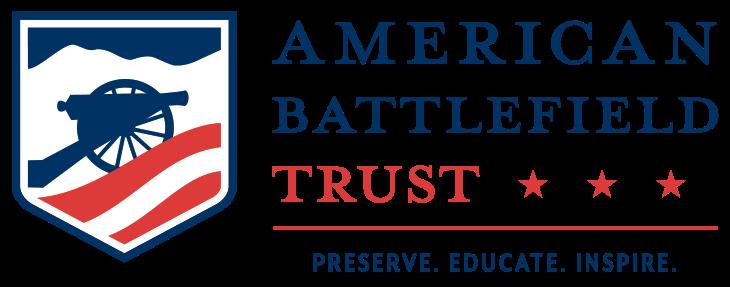
to discussing America’s complex past. For example, its free, dualtrack Teacher Institute recently provided outstanding continuing education opportunities to more than 860 individuals from four countries and 42 states, via online and in-person (in Mobile, Ala.) events this summer. While the on-site National Teacher Institute is a long-time Trust tradition, it was paused for the past two summers while a virtual option was offered; this year marked the first time teachers could choose between the two options.
The events played host to K-12 teachers and administrators, museum professionals, librarians, and college-level educators, all eagerly absorbing wisdom from speakers covering conflicts ranging from the Revolution to the Vietnam War.
Attendees in Mobile fell “Into the Depths of History,” via breakout sessions, workshops, lectures and tours to Forts Blakeley and Gaines, Historic Mobile, Historic Pensacola Village, and the USS Alabama Educators also heard from Medal of Honor recipient Melvin Morris,

who spoke about his military service, the concept of valor, and what educators can do in their classrooms to recognize acts of valor on and off the battlefield.
In coming years, the organization will continue offering a dual-track program with in-person and online options; both will remain free and provide an opportunity to procure Continuing Education Units.

Next year’s in-person Teacher Institute will bring participants to Baltimore, Maryland.
For additional educator resources, please visit www. battlefields.org/learn/educators.
Meet the 2022–2023
American Battlefield Trust’s Youth Leadership Team
The Trust has identified and trained a talented new group of teens to serve as the organization’s 2022–2023 Youth Leadership Team (YLT). The 10 participants will engage classmates, neighbors and local decisionmakers by taking on custom-designed projects that pursue preservation and interpretation goals and make a tangible impact in their corner of the country. Since its inception, the program has been wildly successful, attracting the financial support of the Pipkin Charitable Foundation and the acclaim of members who had the opportunity to engage with the 2021–2022 cohort at our Annual Conference in May.
The full roster of the 2022–2023 Youth Leadership Team includes: Addison Anderson,
14, of Loveland, Ohio; Grace Schroeder, 17, of West Linn, Ore.; Ella Dieterlen, 17, of Dillsboro, Ind.; Ana Kangsumrith, 16, of Fairhope, Ala.; Sriya Tallapragada, 15, of New Providence, N.J.; Ahmya Rivera, 17, of Elizabeth City, N.C.; Jacob L.T Bates, 15, Stonington, Conn.; David Mackowski, 16, of Georgetown, Texas; Colter Sienkiewicz, 17, Livingston, Mont.; Colin Y. Shen, 15, of Houston, Texas.
Efforts to Protect the Viewshed of the Gettysburg Battlefield Succeed
This summer, the Trust joined forces with other preservation groups to successfully advocate against a proposed amendment to change the by-right allowable height for essential service structures in Cumberland Township from 35 feet to 175 feet. This could have had widespread and ongoing impacts on Gettysburg Battlefield’s viewshed. On July 26, the Board of Supervisors unanimously rejected the proposal.
The situation grew out of a plan by the Gettysburg Municipal Authority to build a 175-foot water tower on historic Herr’s Ridge. Such a structure would create a massive visual intrusion on the First Day portion of the battlefield. While the need for the Gettysburg region to develop 21st-century infrastructure was recognized, it was stressed that the amendment was unwarranted, dramatically increasing long-term
18 CivilWarNews.com October 2022 18 October 2022 CivilWarNews.com
The current-day Crossroads of Corinth. (Photo by Mike Talplacido) Medal of Honor recipient Melvin Morris speaks at the 2022 in-person Teacher Institute in Mobile, Ala. (Photo by Kristopher White)
threats to the battlefield rather than identifying alternative solutions for one immediate need.
In addition to its preservation partners, the Trust is deeply thankful for the 3,000 plus who heeded the call to action issued by email and social media plus those that signed letters plus those that signed letters facilitated by the Trust to the township board.
Take action on behalf of hallowed ground and bookmark www.battlefields.org/preserve/ speak-out today.

Highway Interchange Threatens the Heart of the Wyse Fork Battlefield

In rural fields just east of Kinston, N.C., the Wyse Fork Battlefield faces a new and devastating threat that could forever destroy the historic nature of the site. A proposed highway expansion would place a massive interchange directly in the heart of the battlefield, causing irreversible damage to this Tar Heel State treasure. The Trust and its partners strongly oppose the siting of this interchange and encourage state leaders to consider other locations. If this proposal moves forward, a piece of American history will be lost forever.
At the end of February 1865, Union troops under the command of Maj. Gen. John M. Schofield took control of Wilmington,

N.C. Moving inland, Schofield’s forces were divided to move against Gen. Joseph E. Johnston’s Confederates. As these divided Union troop columns moved inland and repaired segments of railroad, Confederate Gen. Braxton Bragg aimed his forces in their direction, thus initiating the Battle of Wyse Fork.

The importance of the battle is undeniable, taking place only two months before the Civil War’s conclusion. The fourday battle engaged over 20,500 forces and resulted in over 2,600 casualties. Adding insult to injury, the battlefield also contains the sites of two other Civil War engagements, as well as a Revolutionary War skirmish.
The proposed interchange

would erase a significant part of the battlefield and damage interpretation efforts, endangering already preserved land and undermining future preservation opportunities.
To learn more about this effort and show your support, visit our website www.battlefields.org/ ProtectWyseFork.
Gratitude Abounds
The Trust expresses many thanks to our friends at Emerging Civil War (ECW) for presenting

our organization with the 2022 Emerging Civil War Award for Service in Civil War Public History at the ECW Symposium this summer.
The organization also wants to extend its gratitude to all of those who travelled to Gettysburg in June to attend a celebration of the life of Edwin C. Bearss, whose impact on the battlefield preservation movement is still felt today. If you missed the event, watch the video here: www.battlefields.org/ BearssCelebration2022.
By Stephen Davis & JACK W.
19 October 2022 19 October 2022 CivilWarNews.com CivilWarNews.com
View of a segment of the First Day battlefield at Gettysburg. (Photo by Lynn Light Heller)
e Artilleryman is a quarterly magazine founded in 1979 for enthusiasts who collect and shoot cannons and mortars primarily from the Revolutionary War, Civil War to World War II. Now expanded and fully illustrated in rich color throughout the entire magazine. 520 Folly Road, Suite 25 PMB 379, Charleston, SC 29412 • 800-777-1862 • mail@artillerymanmagazine.com www.ArtillerymanMagazine.com The Artilleryman Magazine FOUR INCREDIBLE ISSUES A YEAR
Wyse Fork | March 8-10, 1865. (Courtesy American Battlefield Trust)
“The STORIES BEHIND THE PICTURES” 100 Significant Civil War Photographs CHARLESTON IN WAR
MELTON
Name Shipping Address City State Zip 160 pages • OVER 100 PHOTOS • MAPS • INDEX • BIBLIOGRAPHY • ISBN: 978-1-61850-167-7 Paperback: $19.95 (+$3.50 S & H) • Released Jan. 2020 3 ways to order YOUR COPY! CALL US 800-777-1862 ORDER ONLINE www.historicalpubs.com fill out this form BELOW & mail with a check for $23.45 to: Historical Publications LLC 520 Folly Road, Suite 25 PMB 379, Charleston, SC 29412 (S.C. residents include 9% sales tax of $1.80) 100 Signi cant Civil War Photographs: Charleston in the War features newly restored images of scenes in the famed city, taken 1860–1865. e cameramen include the better-known, such as George N. Barnard and George S. Cook, as well as some lesser-known ones: Samuel Cooley, Charles Quinby, the partners Haas & Peale, Osborn & Durbec. Text by Stephen Davis and Jack Melton accompanies each featured photograph, describing the pictured scenes and the history surrounding them. e selected images depict a variety of settings: that portion of Charleston known as e Battery, the “Burnt District” (the area of the city destroyed by the Great Fire of December 1861), the Charleston Arsenal, and the many churches that allow Charlestonians to call theirs “the Holy City.” Special sections of this book are devoted to the huge Blakely guns imported from England by the Confederates and close-ups of Barnard’s views. e history of Civil War Charleston goes back to e Defense of Charleston Harbor (1890) by John Johnson, Confederate major of engineers, and to Reminiscences of Forts Sumter and Moultrie in 1860-’61 (1876) by Capt. Abner Doubleday, Federal second-in-command. Since then Charlestonians have contributed to the history of their city, notably Robert N. Rosen and Richard W. Hatcher III. e historical text surrounding 100 Signi cant Photographs draws on these and other works. A unique feature is its reliance upon the writings of actual participants, such as Augustine T. Smythe (1842–1914) and Emma Edwards Holmes (1838–1910). As a contribution to this literature, 100 Signi cant Civil War Photographs: Charleston in the War o ers rewards for all readers, from the casual novice to the serious student. CHARLESTON
WAR DAVIS & MELTON 100 SIGNIFICANT CIVIL WAR PHOTOGRAPHS CHARLESTON IN THE WAR
JR
IN THE
Carrying the War North John Hunt Morgan’s 1863 Raid – Part III
“It would have been an inexpiable shame if, in all the Confederate army, there had been no body of men found to carry the war, however briefly, across the Ohio [River], and Morgan by this raid saved us, at least, that disgrace.” – Col. Basil Duke, 2nd Ky. Cavalry
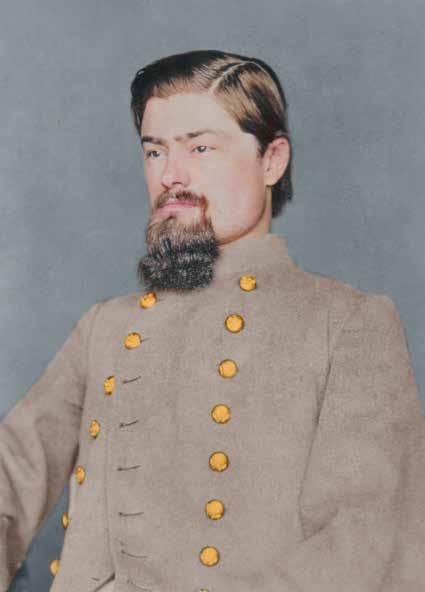
On July 8, 1863, C.S. Gen John Hunt Morgan, 2nd Ky. Cavalry, captured boats to ferry his men from Brandenburg, Ky. over the Ohio River into Indiana as part of his “Ohio and Indiana Raid.” Only Col. Basil Duke, Morgan’s brother-in-law and second in

command, knew that Gen. Braxton Bragg, Commanding, Army of Tennessee, disapproved of the men operating outside Kentucky.
On July 9, Morgan’s men reached Corydon, the original capital of Indiana, until 1825.
U.S. Col. Lewis Jordan, 6th Ind. Legion, had prepared breastworks from fence rails and logs stretching a mile along a low ridge. Local volunteers were armed with muskets and squirrel guns. Capt. George Lahue, Spencer Guards, anchored the left flank. Maj. Thomas McGrain Jr., Ellsworth Rifles, covered the right flank from a hill with a view of the entire battlefield. It was 450 inexperienced men vs. Morgan’s 1,800 veterans and four artillery pieces.
The Battle of Corydon began about 1 p.m. when twelve men



of the approaching 14th Ky. were killed or wounded by the Spencer Guards. The surprised Confederates rapidly retreated, then the 7th Ky. Cavalry attacked the Indiana right flank. McGrain’s men, armed with Henry repeating rifles, held off the assault for 20 minutes. “The shells sang the ugly kind of music over our heads,” recalled Indiana State Senator Simeon K. Wolfe as Lt. Elias D. Lawrence fired his two 3-in. Parrots and Capt. Edward Byrne one of his 12-pdr. howitzers. Dismounted Confederates continued to attack the flanks, charging “them with a yell and great determination.” In 30 minutes, the only Civil War pitched battle in Indiana was over.
The Rebels spent the afternoon plundering stores, ransoming buildings, gathering food, horses, and supplies. Morgan read the newspapers. News of the July 4 defeat at the Battle of Gettysburg, Pa., and the surrender of Vicksburg, Miss., dashed his hope to join Gen. Robert E. Lee’s Army of Northern Virginia in the field.
Still, Morgan’s Raiders continued fighting and outmaneuvering local militia and tearing up train tracks and burning trestles. The men rode an average 21 miles a day and forty miles between camps, dozing in the saddle, and taking anything that took their fancy. According to Duke, “I saw very few articles of real value taken— they pillaged like boys robbing an orchard. … They would (with few exceptions) throw away their plunder after awhile, like children tired of their toys.”
What the men needed was a continuous supply of fresh horses. In the heat, the best horses would last about twenty miles, others would collapse sooner. Morgan’s reputation of stealing horses while leaving a trail of half-dead horses behind him was based on necessity.
On July 13, Morgan crossed the Whitewater River into Harrison, Ohio, burning the bridge behind them. The headquarters of Gen. Ambrose Burnside’s Army of the Ohio was located twenty miles
away in Cincinnati. Morgan decided on a night march to slip past Cincinnati and its suburbs as he headed toward West Virginia.
“It was a terrible, trying march,” according to Duke. In the dark night, only scouts were allowed light to search for clues of the road the previous brigade had taken. Sleep deprived men fell from their saddles and horses staggered, “like one intoxicated.” By dawn’s first light they had bypassed immediate danger. By 4 p.m. they reached Williamsburg, Ohio, 28 miles east of Cincinnati. It was Morgan’s longest march. The men had traveled more than 90 miles in a period of about 35 hours.
The opposition was catching up with Morgan. U.S. Gen. Edward Hobson commanded a Provisional Division created to capture Morgan. Hobson’s 2,500 cavalry, mounted infantry, and six pieces of artillery had been chasing Morgan through Kentucky, Indiana, and gaining ground in Ohio. Thousands of volunteers had heeded the call to fight the invaders and fell trees to block their route. Lt. Commander Leroy Fitch, USN Mississippi Squadron, deployed his fleet of shallow-draft gunboats to keep pace with Morgan’s men and clear the river of any boats he could use.
On July 18, a dense fog was rolling in when the men reached Buffington Island, Ohio, about 8 p.m. Guarding the crossing were 300 infantrymen behind earthworks with two heavy guns. Instead of risking men in the very dark night, Morgan decided to make camp. Duke selected the 5th and 6th Ky. regiments to attack the work at daybreak.
On July 19, the Battle of Buffington, the largest Civil War battle in Ohio, began about 5:30 a.m. At daybreak, it was discovered that the earthworks were abandoned. While trying to determine where their foe had gone, the Confederates discovered Gen. Henry Judah, 5th Ind. Cavalry approaching. In the dense fog, the Confederates fired at point blank range. They chased after the retreating Federals until they spotted a long line of blue coats, about 1,000 men across the road.
Duke arranged the 5th and 6th Ky., about 500 men, into battle position. Byrne moved up his two howitzers. At 6 a.m. Judah’s Yankees, armed with carbines and pistols attacked.
Fitch had positioned his flag boat, USS Moose, at the waterway separating Buffington Island from the Ohio shoreline. At 6:15 a.m., Moose fired its two 24-pdr. guns at Byrne’s howitzers. Byrne
20 CivilWarNews.com October 2022 20 October 2022 CivilWarNews.com
C.S. Col. Basil Duke, 2nd Ky. Cavalry. Colorization © 2022 civilwarincolor.com, courtesy civilwarincolor.com/ cwn. (University of Kentucky Libraries Special Collections and Research Center)
Gen. Edward Hobson. Colorization © 2022 civilwarincolor.com, courtesy civilwarincolor.com/cwn. (Library of Congress)
immediately moved them out of harm’s way. Hobson’s men, led by Col. August Kautz had finally caught up with Morgan and were now in his rear. The Allegheny Belle joined the fight. Duke wished he could send “two or three shots into their hulls.” The Federals, army and navy, were firing from three sides.
Out of the chaos, Morgan was able to lead about 700 men trying an escape through the woods. Already across the river to cover the planned crossing, Capt. Kirkpatrick, 9th Tenn., and 110 men ended up walking the nearly 200 miles to Duplin Depot, Va. Col. Adam “Stovepipe” Johnson and 300 men were able to cross the Ohio River. Duke was captured with about 750 cavalrymen. On July 26, unable to cross the river, Morgan surrendered with his remaining men ending the Battle of Salineville, Ohio.
Morgan’s Raid accomplished its primary objective, distracting the Federals while Bragg positioned the Army of Tennessee to win the Battle of Chickamauga, Tenn. Burnside was forced to delay his planned invasion of East Tennessee from July to

Emerging Civil War Honors the American Battlefield Trust for Service in Civil War Public History
Emerging Civil War (ECW) is pleased to honor the American Battlefield Trust as the recipient of this year’s Emerging Civil War Award for Service in Civil War Public History.
Emerging Civil War’s Award for Service in Civil War Public History recognizes the work of an individual or organization that has made a significant impact on the field of public history in a way that better helps the general public connect with America’s defining event. “We have a strong public history mission at ECW, and we want to recognize—and offer our gratitude to—the work of others who share that same mission,” explained ECW Editorin-Chief Chris Mackowski.
September. Morgan’s small force was the target of 130,000 men for more than 3 weeks. He destroyed infrastructure and raised Southern morale. Nevertheless, neither Bragg nor his superiors ever forgave Morgan for the loss of 2,000 seasoned cavalrymen.
Sources:
• Mowery, David L. Morgan’s Great Raid: The Remarkable Expedition from Kentucky to Ohio: Arcadia Publishing, 2011
• Duke, Basil W. History of Morgan’s Cavalry: Miami Printing and Publishing Company, 1867
• Brown, Dee. The Bold Cavaliers: Open Road Media, 2012
Stephanie Hagiwara is the editor for Civil War in Color.com and Civil War in 3D.com. She also writes a weekly column for History in Full Color.com that covers stories of photographs of historical interest from the 1850’s to the present. Her articles can be found on Facebook, Tumblr and Pinterest.
The American Battlefield Trust is the largest nonprofit organization devoted to preserving America’s hallowed battlegrounds. Over its thirtyfive-year history, the Trust has permanently protected more than 55,000 acres of hallowed ground at 150 separate sites across three wars; it is on the verge of completing work in its 25th state. Although primarily focused on the protection of Civil War battlefields, the Trust works to save the battlefields connected to the Revolutionary War and War of 1812 as well. Through educational programs and heritage tourism initiatives, the Trust also informs the public about the vital role battlefield events played in determining the course of our nation’s history.
“As historians, so many of us at ECW would swear by the adage, ‘If you want to truly understand a battle, you have to walk the ground.’ Histories are literally grounded in the landscapes where the events unfolded. That’s why the work of the Trust to preserve those landscapes has been of such vital importance,” Mackowski said. “Battlefields are unique historical artifacts and invaluable primary sources, the Trust has been tireless in its efforts to preserve them. In doing so, it has done an incredible job of relaying, over and over and over, the vital importance of our history and why we need to understand and appreciate it. In thirty-five years, the Trust has connected more people with Civil War history than almost any other entity.”
Every fund-raising appeal has been accompanied by
The Emerging Civil War Award for Service in Civil War Public History
Garry Adelman (right), chief historian for the American Battlefield Trust, accepts the ECW Award for Public Service in the Field of Civil War Public History on the Trust’s behalf. ECW’s Chris Mackowski presented the award. (Photo Hank Ballone)
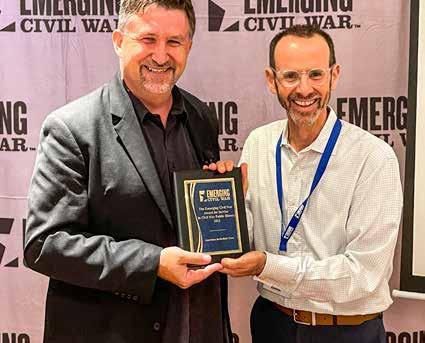
extensive materials educating people about the importance of the ground and the history the Trust is trying to preserve. Their maps, in particular, have become especially popular, so much so that they’ve spawned a series of map books authored by Kris White and featuring the maps of Steve Stanley.
Their award-winning magazine, Hallowed Ground, highlights not only the robust news of the preservation community but also presents history in innovative ways, including well-loved battle studies and such things as the histories of America’s service academies, the stories of Medal of Honor winners, and the role of veterans in American history.
Trust President David N. Duncan, in accepting the award, said, “We are deeply honored by this recognition from our friends at Emerging Civil War. Its members are among the leading historians and guides, those who know the battlefields we seek to protect best, making their appreciation of our work particularly meaningful. The Trust has been a supporter of the ECW vision since its inception, and it has been an honor and privilege to grow and thrive alongside them. In giving thanks for this honor, I will reiterate our commitment to the preservation of America’s hallowed ground and the equally hard work of interpretation and education,
ensuring that future generations will understand and appreciate the events that took place there.”
Previous recipients of the Emerging Civil War Award for Service in Civil War Public History include Ted Alexander, former historian at Antietam National Battlefield; Dave Roth, publisher of Blue & Gray magazine; D.P. Newton, founder of the White Oak Civil War Museum; John Coski, historian at the American Civil War Museum; David Ruth, former superintendent of Richmond National Battlefield Park; and Civil War historian and author Gary W. Gallagher.
Emerging Civil War is the collaborative effort of more than two-dozen historians committed to sharing the story of the Civil War in an accessible way.
Founded in 2011 by Kris White and Chris Mackowski, Emerging Civil War features public and academic historians of diverse backgrounds and interests, while also providing a platform for emerging voices in the field.
Initiatives include the awardwinning Emerging Civil War Series of books published by Savas Beatie, LLC; the “Engaging the Civil War” Series published by Southern Illinois University Press; an annual symposium; a speakers bureau; and a daily blog: www.emergingcivilwar.com.
21 October 2022 21 October 2022 CivilWarNews.com CivilWarNews.com Publishers/Authors Send your book(s) for review to: Civil War News 520 Folly Road, Suite 25 PMB 379 Charleston, SC 29412 bookreviews@civilwarnews.com
LCDR Leroy Fitch, USN. Colorization © 2022 civilwarincolor.com, courtesy civilwarincolor.com/cwn. (Naval History and Heritage Command)
monument’s height from the ground to the tip of the colorbearer’s flag staff would be 86 feet.
A proviso in the 1895 appropriation act stated that “the material used in the work shall, as far as practicable, be a product of Georgia.” The bulk of the material used was blue granite from which the base and shaft were formed, quarried in Oglethorpe County.
In addition to the granite work on the grand monument, Venable Bros. was to fabricate 40 to 60 smaller granite “battle markers or monuments,” at a cost of $75 each.
One Grand and Imposing Monument
In 1890, just over a quarter century after two great battles were fought in northwest Georgia and adjacent areas of Tennessee, the United States Congress created the Chickamauga and Chattanooga National Military Park. This park is the oldest, and with more than 9,000 acres the largest, of the 17 Civil War battlefield sites preserved by the national government.
The park was dedicated in a huge three-day ceremony held on September 18-20, 1895. On the 19th and 20th, 40,000 to 50,000 people attended the services dedicating the Chickamauga and Chattanooga portions of the battlefield.
The national government established the military park but the monuments that were to populate the battlefield were projects undertaken by the 28 states whose sons fought on and near this preserved land. On September 18 a throng of 10,000 attended the unveilings of monuments already completed by eight Northern states.
The May 1896 report of the ceremonies compiled for Congress noted that plans for
other states’ memorials were in the works, including plans underway in Georgia. The state’s General Assembly had made “a liberal appropriation for marking the positions of her various troops.” The Georgia State Memorial Board had been created in 1894. The $25,000 appropriated in 1895 was to be used by this board to create memorials at Chickamauga.
The five-man board got to work and decided to devote the bulk of the appropriation, up to $20,000, to “erect one grand and imposing monument” near the center of the park. The remaining funds were earmarked for smaller monuments marking the battlefield locations on where Georgia units had fought.

The board promptly sought bids for the design and construction of the grand monument. The Muldoon Monument Company of Louisville, Ky., submitted the winning design. Venable Brothers of Atlanta won the contract to build the structure, performing the granite work itself and contracting with the Gorham Manufacturing Co. of Providence, R.I., to make and place in position all the bronze work, four statues and four tablets. Gorham was to be paid $7,200 for its part of the job.
GEORGIA’S CONFEDERATE MONUMENTS

In Honor of a Fallen Nation
Gould B. Hagler, Jr.

This unique work contains a complete photographic record of Georgia’s memorials to the Confederacy, a full transcription of the words engraved upon them, and carefully-researched information about the monuments and the organizations which built them. These works of art and their eloquent inscriptions express a nation’s profound grief, praise the soldiers’ bravery and patriotism, and pay homage to the cause for which they fought.
www.mupress.org
866-895-1472
a total of $680,000? I asked a sculptor friend who works both in bronze and marble. He says no. He estimates the bronze statues at a total of $1 million and the marble work $500,000. For site prep and installation, add another $500,000, so the total would be about $2 million.
The design called for a substantial granite base, 19 ½ feet high, from which a round granite column would reach skyward another 37 ½ feet. Upon the base would stand three bronze statues, 6 ¾ feet tall, representing an infantryman, an artilleryman, and a cavalryman. A bronze color-bearer, 15 feet in height, would stand on the capstone surmounting the column. The
Let’s pause here and talk about money. We have a total of $20,000 for the main monument, with $7,200 going for the bronze and $12,800 for the marble and everything else. What is this in 2022 dollars? A google search produces an estimate of $680,000. How accurate is this comparison?
Could you buy these four bronze statues today for $245,000 and place them on the marble for
That’s today. Let’s go back to the late 19th century. Venable and Gorham started work sometime in 1897, or perhaps in late 1896. The State Memorial Board reported to the governor (then William Y. Atkinson) in December 1897 that “considerable progress had been made” and that the work so far completed was “done according to the plans and specifications.”
The work continued and was completed in time for the dedication scheduled for May 4, 1899. Like the memorial itself, the dedication was monumental in scope.
According to a report in the May 5 Atlanta Constitution, the occasion was witnessed by a crowd of several thousand. From
22 CivilWarNews.com October 2022 22 October 2022 CivilWarNews.com
toll-free
Georgia monument under construction, 1898 Courtesy of Chattanooaga and Chickamauga National Military Park.
their lodgings in Chattanooga, they arrived at the Chickamauga station after a short and festive train ride, on which they enjoyed a “jolly time renewing old acquaintances and making new ones.” Many were shuttled the last mile to the monument site by local farmers who took advantage of the busy day to turn their wagons into taxi cabs. The many VIPs rated a more formal escort. The arrival of Gov. Allen D. Candler and other dignitaries were greeted by a cheering crowd and “a lively march” played by a Chattanooga band.
Of the 53 members in the governor’s immediate party listed in the paper, nearly all the men bore military rank, ranging from lieutenant to colonel, plus one general, James Longstreet, accompanied by Mrs. Longstreet. Three of the five members of the State Memorial Board were present, Gordon Lee, James Boynton and William Everett,
the chairman. John McIntosh Kell and Joseph Cumming were absent.
The stands were full and “several hundred people were standing up in the hot sun all round the stand.” Others found more comfortable accommodations on the grass and in the shade.
Chairman Everett opened the ceremonies by introducing the chancellor of the University of Georgia, who offered a “fervent and patriotic prayer.” After more music and a brief summary of the board’s word, the monument was unveiled by Miss Myrtle Everett, daughter of William Everett.

Then the serious speechmaking began. The dignitaries, the crowd standing in the sun and the people sitting in the nearby shade were treated to three hours of lofty oratory.
Governor Candler spoke, followed by Gen. Henry Van Ness Boynton, U.S.A., the chairman of the commission responsible
for the creation of the park. The “Orator of the Day” was Maj. J.C.C. Black, an Augusta attorney who had served in the command of Gen. John Hunt Morgan. All three orations struck the same chords, chords familiar to the 1899 audience and to anyone today who has examined Civil War memorials and read of their dedication ceremonies.
For speakers on the winning side, in this case Gen. Boynton, there is magnanimity and generosity in victory. Homage is paid to the brave men against whom the victors fought.
Speakers representing the vanquished, Candler and Black at Chickamauga, display dignity in defeat and, like the victors, offer high praise for the adversary. There is no admission that their cause was not just, but rather a graceful acceptance of the outcome, and promised loyalty to the restored Union.
For both sides, there are prayers of thanksgiving for the blessings of peace and a successful reconciliation.
General Boynton spoke of “the valor of all soldiers who fought here from the north and from the south.” He spoke of the lesson taught by the memorial, that the once-divided nation could come together in “a reconciliation so perfect as to have brought both sections together to fight shoulder to shoulder under the one flag of our restored and indissoluble union.” Many Southern men, including four former Confederate generals, had worn the uniform of the United States in the previous year’s war against Spain.

Governor Candler stressed the sections’ common heritage. The combatants were all patriotic Americans, all “scions of AngloSaxon stock,” brave and dutiful men in whom all Americans should take pride. Candler saw the hand of “inscrutable providence” at work, a divine plan “protecting and more firmly cementing together the many parts of the great country with which God has blessed us.”
Major Black, in his long address, also struck a religious tone, saying of the fallen Confederates that “no purer libation was ever poured upon Liberty’s altar than the blood they shed.” The survivors “fought like true soldiers and, when overcome, like true men accepted defeat without apology, though without reserve.”
Black bluntly defended the rightness of the Southern cause. “Georgia declares that her sons who here fought were not traitors!” However, what was done was done, and this soldier
Georgia State Memorial Board
The act of the legislature creating this commission provided that the governor should appoint four members and that the fifth would be the state’s adjutant general serving ex officio.
Governor William Y. Atkinson appointed Gordon Lee, William S. Everett, Joseph B. Cumming and James S. Boynton. John McIntosh Kell was Georgia’s adjutant general and was therefore the fifth member of the board.
Gordon Lee was from Chickamauga, born there four years before the famous battle. His father, James Lee, and his maternal grandfather, James Gordon, were partners in Lee and Gordon’s Mill, located on Chickamauga Creek just one mile from today’s battlefield park. Gordon Lee was engaged in business and agriculture and served in Congress from 1905 until shortly before his death in 1927.
William Everett was born in 1839 in New York and moved to Atlanta as a young man. He volunteered for the Confederate army, while two of his brothers back home fought for the Union. At Chickamauga Lt. Everett commanded Co. E, 9th Georgia Artillery Battalion. After the war Everett prospered as a wholesale merchant. He died in 1904 in a carriage accident near his place of business in Atlanta.
Joseph Cumming, born in 1836, was an attorney in Augusta. During the Civil War Cumming served in staff positions for several Confederate generals, John K. Jackson, William J. Hardee, William H.T. Walker, John Bell Hood, and very late in the war, Joseph E. Johnston. At the Battle of Chickamauga, he was the adjutant general on Walker’s staff. Cumming was active in veterans’ affairs and was a regular speaker at monument dedications and other occasions. He died in 1922.
James Boynton, born in 1833, was an attorney in Henry County from 1852 until the start of the war, when he volunteered as a private in the 30th Georgia Infantry. He rose to the rank of colonel and led the regiment in the Battle of Chickamauga. After the war Boynton settled in Griffin, practiced law and entered politics. As president of the State Senate in 1883, he briefly assumed the office of governor when Alexander Hamilton Stephens died in office. Boynton died in 1902.
John McIntosh Kell was born in 1823 in Darien on the Georgia coast. He served in the United States Navy as a midshipman in the United States Navy, but was dismissed from the service in 1849 when he refused to obey an order he considered to be illegal. Kell was soon reinstated, and served until his resignation in 1861, four days after Georgia seceded. At his court-martial in 1849 Kell was defended by Lt. Raphael Semmes, with whom he later served on the CSS Sumter and the CSS Alabama. He was appointed the state’s adjutant general by Gov. John B. Gordon in 1886 and held that office until his death in 1900.
23 October 2022 23 October 2022 CivilWarNews.com CivilWarNews.com
One grand and imposing monument. Photos by Gould Hagler.
Rifleman and number 1 man on gun crew at the monument’s base.
knew that peace was better than war. “The earth has drunk enough of the blood of her sons,” he said. He took comfort in the “assurance that the union of these states will never again be disrupted by sectional war. We rejoice today in a country reunited, and forever.”
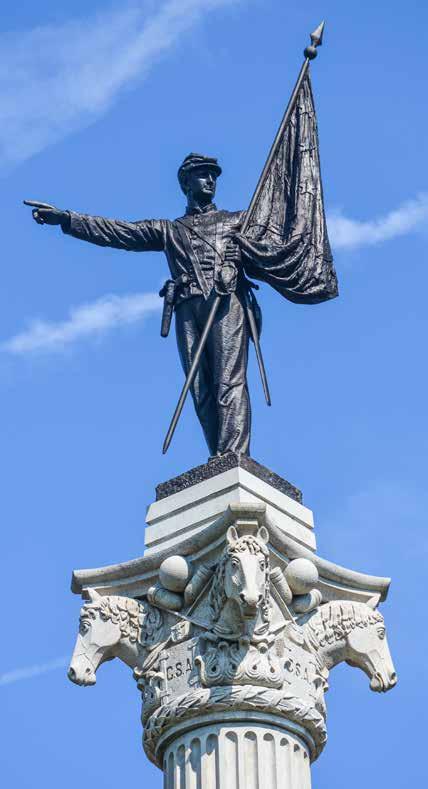
At the conclusion of Maj. Black’s speech, and before the ceremonies were brought to a close by a final musical number, from the crowd arose “calls for Longstreet, and the venerable Georgian who played so important a part in the bloody events that made Chickamauga famous, was compelled to rise and bow his acknowledgments. As he did so he was given three hearty cheers.”
Georgia’s “grand and imposing monument” stands in Poe Field, on the east side of LaFayette Road a short distance south of the park’s visitors’ center. The fine work of art remains in pristine condition more than 123 years after its dedication. The most recent restorative work was done a decade ago, when all the stone surfaces were washed, the bronze cleaned and waxed, the failed joints repointed, and the original concrete apron replaced.
The color-bearer is looking to the northwest, so if you want a good picture with some sun on the young soldier’s face, pick a mid-summer day and be there in the afternoon.
Historian Jim Ogden, who arranged for me to review the park’s file on the
The color-bearer points the way.
Georgia monument and provided much additional information. Jim is a fount of information on all aspects of the battles fought at Chickamauga and Chattanooga. I encourage anyone who has an opportunity to participate in one or more of his superb tours. Visit this website https://www.nps. gov/chch/getinvolved/donate. htm to see the various ways you can support the Chickamauga and Chattanooga National Military Park.
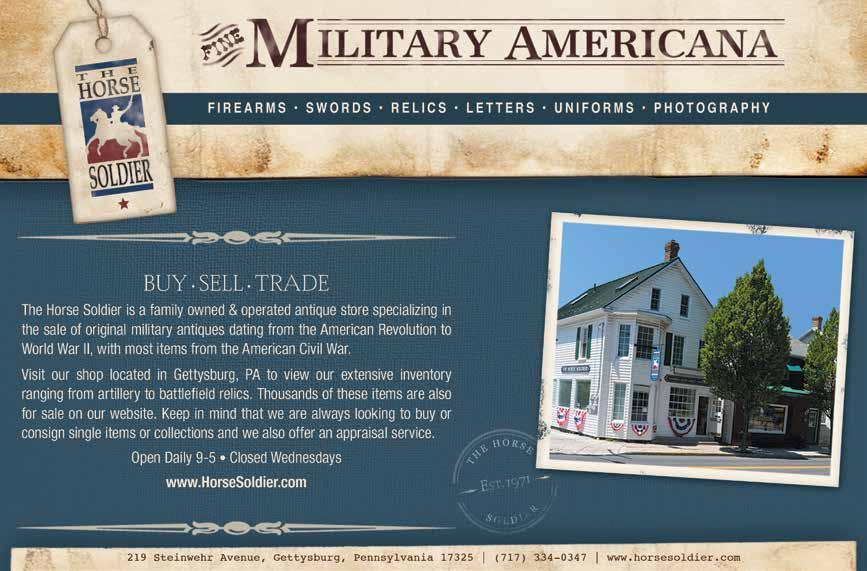
Gould Hagler is a retired lobbyist living in Dunwoody, Ga. He is a past president of the Atlanta Civil War Round Table and the author of Georgia’s Confederate Monuments: In Honor of a Fallen Nation, published by Mercer University Press in 2014. Hagler speaks frequently on this topic and others related to different aspects of the Civil War and has been a regular contributor to CWN since 2016. He can be reached at gould.hagler@gmail. com.

24 CivilWarNews.com October 2022 24 October 2022 CivilWarNews.com Subscribe online at CivilWarNews.com
My thanks to Park
One of the smaller battlefield markers.
Deadlines for Advertising or Editorial Submissions is the
of each
ads@civilwarnews.com
20th
month.
Ed. note: Steve Davis’ new book, The Atlanta Daily Intelligencer Covers the Civil War, is now out (University of Tennessee Press). Here is an article that appeared in the Intelligencer of July 2, 1864.

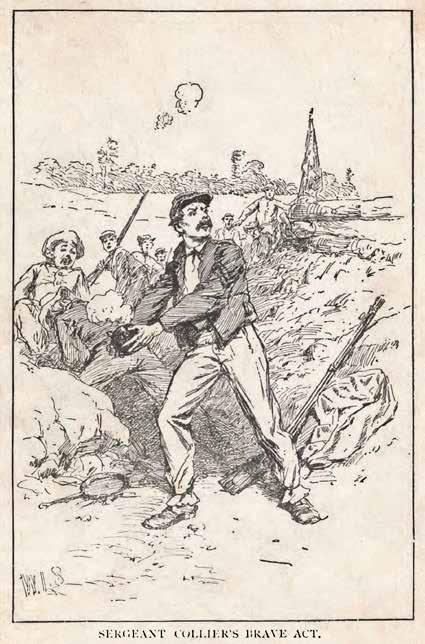 by Stephen Davis Modest Merit
by Stephen Davis Modest Merit
The following explains for itself the above heading:
Headq’rs Jackson’s Brig. Walker’s Div., Hardee’s Corps, A.T., in the field.
3 miles West of Marietta June 24, 1864.
General Orders No. —.
On the 23d inst., while this brigade was in line of battle behind breastworks, and under a heavy fire from the enemy’s artillery, a Schrapnel shot with a Borman fuse, struck the works, passed under the top log, and fell among the men in the ditch. While the fuse was still smoking, and the men were flying from the danger of the apprehended explosion, Serg’t. Isaac P. Collier, of Company C, 5th Ga. Regt., seized the projectile, and threw it out of the ditch. In the judgment of the Brigade Commander, this is a case which calls for the exercise of the power of appointment for “acts of distinguished valor,” which is vested in the President.
The witnesses of the bravery of Serg’t. Collier are Lieut. A. H. Hightower, Capt. E. V. Bockett, Privates E. P. Simpson, W. D. K. Talley, J. T. Backus Co. K, 5th Ga. Regt., Privates John Allbright and J. A. Shettleworth, of Beauregard’s Battery.
As there is a vacancy of 2d Lieutenant in Co. F, 5th Ga. Regt., Serg’t. Isaac P. Collier is hereby appointed to the rank of 2d Lieutenant, and is assigned to duty as such, in Co. E, 5th Ga. Regt., to take rank from the 23d day of June, 1864. He will report to the commanding officer of that company for duty.
This order is subject to the approval and ratification of the President. By command of Brig. Gen. John K. Jackson.
S. A. Moreno, A. A. General.
Serg’t. Isaac P. Collier, through Col. Daniel, commanding 5th Ga. Regt.
Headq’rs Co. K, 5th Ga Reg’t. In the Field, near Marietta, Ga. June 24th, 1864.

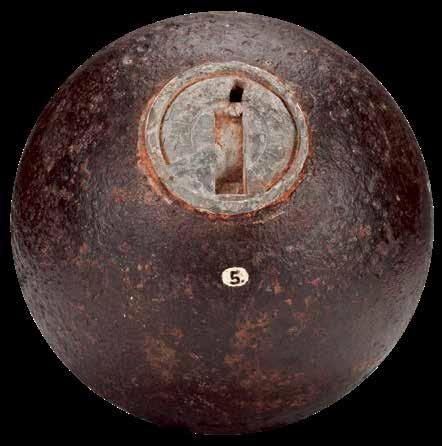

Captain: I must respectfully decline the above promotion. In throwing the shell from the ditch, I am conscious of having done nothing but my duty, in attempting to save my life, and the lives of the men around me. I prefer to remain in my company, with my comrades, with whom I left home on the 7th day of May, 1861.
Isaac P. Collier, 3d Serg’t Co. K.
Capt. S. A. Moreno, A. A. General, Jackson’s Brigade.
Publishers:
Send your book(s) for review to: Civil
520 Folly Road, Suite 25 PMB 379 Charleston, SC 29412
25 October 2022 25 October 2022 CivilWarNews.com CivilWarNews.com
War News
This U.S. 12-pounder Bormann fused spherical projectile was recovered from the Resaca Battlefield, part of the 1864 Atlanta Campaign. Courtesy The Atlanta History Center, Thomas S. Dickey Sr. Civil War Collection.
National Archives Civil War Cartographic Ship Plans


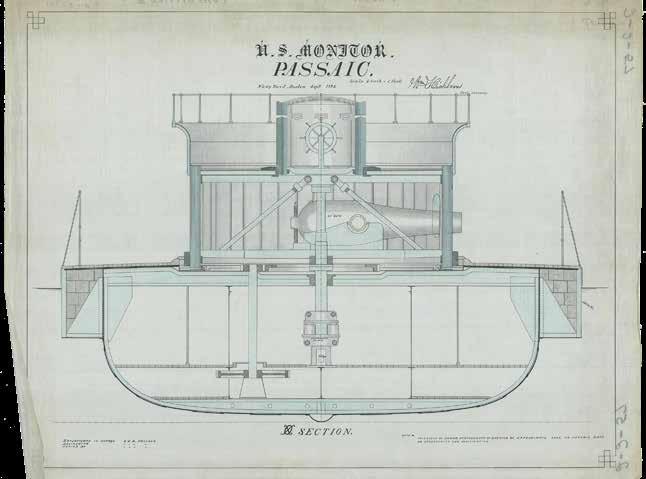
Work continues at the National Archives to digitize additional records from the American Civil War. A peek inside the Cartographic Research Room – https://www.archives.gov/ research/cartographic/civilwar – reveals more than 8,000 records from the war, including maps, fortification files, and plans for various naval vessels. For this month, ships will serve as the focus. Once at the website referenced above, scroll down the page to the ‘Civil War Ship Plans’ link, click on the link: ‘RG 19, Ship Design and Construction Drawings (DASH Plans),’ and then ‘Search within this series.’ On the left side of the resulting screen (see the image shown), select 1860–1869.
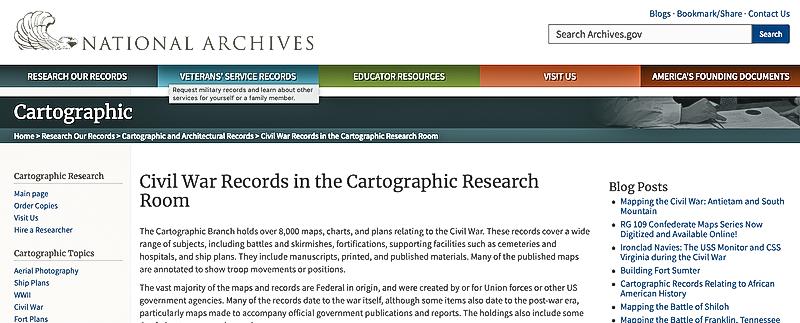
After refining the search using the 1860–1869 parameter, researchers will see 1,041 records. To streamline the search, select ‘Available Online’ to see 39 plans of various ships. Note: users can search this database using multiple keywords.
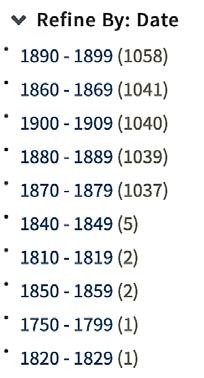
The USS Passaic, a monitor that served in the North & South Atlantic Blockade Squadrons during the war, will offer a visual. One will find more U.S. Navy ships than Confederate vessels in the database, but a few Southern vessels have navigated into the archives. For example, the CSS Nashville, constructed in Columbus, Ga., and later serving in Mobile Bay.
Future installments of this column will explore additional holdings in the National Archives Cartographic Room. Until next month, continued luck in researching the American Civil War!
Michael K. Shaffer is a Civil War historian, author, lecturer, and instructor, who remains a member of the Society of Civil War Historians, Historians of the Civil War Western Theater, and the Georgia Association of Historians. Readers may contact him at mkscdr11@gmail.com or request speaking engagements at www.civilwarhistorian. net. Follow Michael on Facebook, www.facebook.com/ michael.k.shaffer, and Twitter @ michaelkshaffer. U.S. monitor Passaic hull section.

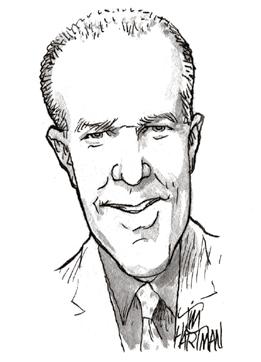
26 CivilWarNews.com October 2022 26 October 2022 CivilWarNews.com
Drawing of the Nashville.
Floating battery design.
Until now, a daily account (1,630 days) of Georgia’s social, political, economic, and military events during the Civil War did not exist. In Day by Day through the Civil War in Georgia, Michael K. Shaffer strikes a balance between the combatants while remembering the struggles of enslaved persons, folks on the home front, and merchants and clergy attempting to maintain some sense of normalcy. Maps, footnotes, a detailed index, and bibliographical references will aid those wanting more.






February 2022 • $37.00, hardback




Michael K. Shaffer is a Civil War historian, instructor, lecturer, newspaper columnist, and author. He is a member of the Society of Civil War Historians, Historians of the Civil War Western Theater, and the Georgia Association of Historians. Contact the author: mkscdr11@gmail.com
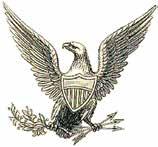



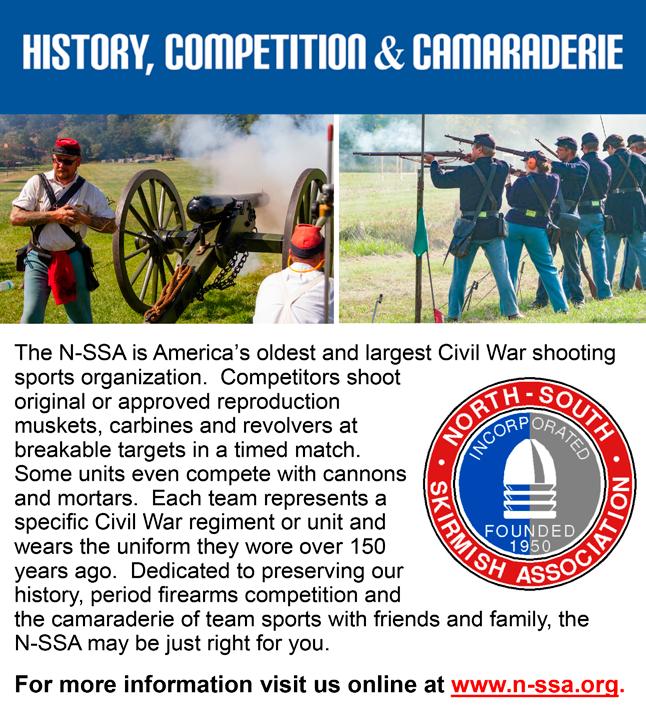





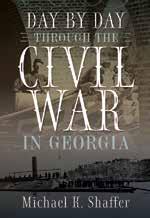
27 October 2022 27 October 2022 CivilWarNews.com CivilWarNews.com
Day by Day through the Civil War in Georgia www.mupress.org •
toll-free Greg Ton • P.O. Box 9 • Franklin, TN 37065 901-487-5944 • GTon1@aol.com Greg Ton Buying and Selling the Finest Confederate, Obsolete and Southern States Currency Since 1978 GregTonCurrency.com Ulysses S. Grant Portrayed by E.C. Fields Jr., Ph.D. HQ: generalgrantbyhimself.com E-Telegraph: curtfields@ generalgrantbyhimself.com Signal Corps: (901) 496-6065 Facebook@ Curt Fields 19th CENTURY LIVING HISTORY! James Country MERCANTILE 111 N. Main Liberty, MO 64068 816-781-9473 • FAX 816-781-1470 www.jamescountry.com Ladies – Gentlemen Civilian – Military • Books • Buttons • Fabrics • Music • Patterns • Weapons Mens, Ladies and Children’s • Civilian Clothing • Military Clothing
Military Accessories
Accoutrements Everything needed
Historian! Our Clothing is 100% American Made! The home of HOMESPUN PATTERNS©
866-895-1472
•
•
by the Living
Editor’s note: With this piece we begin a new series in Civil War News, “Clippings from the Past”: excerpts from Civil War newspapers, articles about them and profiles of reporters who wrote for them. Here we begin with Steve Davis’ column on a famous reporter for the Boston Journal, Charles Carleton Coffin, who signed his articles with his middle name.
“Carleton”
Born in Boscawen, southern New Hampshire, in July 1823, Charles Carleton Coffin received some schooling but was mostly self-taught. He worked at lumbering, labored on a relative’s farm and taught music (he bought
an organ for his church, then played it). Coffin married Sallie Farmer of Boscawen in 1846. He surveyed for railroads, moved to Boston and began writing for the Boston Journal. “Through the years 1857, 1858, 1859,” writes Coffin‘s biographer William Elliot Griffis (1898), “Carleton was floating around among the newspapers getting a precarious living—hardly a living.”1
When the war began Coffin had no affiliation with a newspaper. After a youthful ankle injury prevented his enlistment in the Union army, a friend suggested that he take up reporting the war. He was an alert correspondent, and knew that he could report best what he had personally witnessed. Thus he was present at Bull Run and sent back so clear and dramatic an account of the battle that the Boston Journal hired him for $25 a week. “Keep the Journal at the front,” were his instructions. In this capacity he served throughout the entire war.2
J. Cutler Andrews, the historian of Civil War journalism, wrote of Coffin that “he had what amounted to a sixth sense for recognizing the signs of an impending movement: the loading of a barge, the quick departure of an orderly, or the nod of a general’s head.”3

He kept close to the Army of the Potomac and its campaigns. At Fredericksburg a Federal soldier was wavering under fire when “but a little distance off,” he saw a man standing under a tree and coolly writing away—it was Coffin: “there he stood, perfectly unconcerned, and I felt easier every time I looked at him.”
Coffin missed Chancellorsville, but wrote about it anyway, based on what he had heard; he knew his readers in Boston wanted all the war news he could deliver.
In June 1863 he paralleled Lee’s march toward Pennsylvania. He wrote letters from Harrisburg, Washington (twice), Baltimore (twice) and from Frederick, where he learned of Meade’s appointment. From Gettysburg he wrote two letters, having witnessed the fights of July 2 and 3 (penning them those very nights).4
Coffin was not solely eastern theater, though. At Cairo, Illinois in January 1862, he met Grant in what became a genuine friendship. (The general issued Carleton a pass to go anywhere in Union lines.) He was with Grant’s forces at Fort Henry and Fort Donelson, and wrote about their siege and capture. On the morning of Donelson’s surrender, an excited Coffin was seen “doing the fortifications on the run with his head down like an animal which trails by scent.”
Understanding that scoring a scoop was a news reporter’s constant goal, Coffin managed to beat fellow correspondents in getting his story into print—back in Boston, no less. He caught the earliest available steamboat to Cairo. The zealous reporter, though, had a soft streak. Onboard the boat were wounded Union soldiers. While he could have been writing his story, he ministered to the wounded heroes. He ended up writing his account on the train from Cairo to Chicago, and mailing it east from there.
“Carleton” was mindful of his journalistic success, and worked hard to attain it. He mingled with generals when he could, and with the troops in their encampments. He was with the Army of the Potomac in the Wilderness, and after writing his account of the huge battle, he entrusted his article to a nephew, Edward, who rode frantically to Fredericksburg—just don’t kill your horse, the uncle cautioned— where he mailed the pieces.5
“Carleton” was one of more than three hundred Northern correspondents covering the war. He stood among such luminaries in the profession as William Swinton of the New York Times
and George W. Smalley of the New York Tribune. And he shared with his colleagues a common set of vexations, such as the horse-stealing that bedeviled field correspondents. Coffin had a black servant with him, whose too-often morning greeting was “Breakfast is ready, Mr. Coffin. Your horse is gone again.”6 We know, if only from recent wars, that journalists come under fire, and that some are wounded or even killed. As for that threat in the Civil War, Coffin wrote about war reporters, “But let me say, if they were once brought into close contact with all the dreadful realities of war,—if they were obliged to stand the chance of getting their heads knocked off, or blown to atoms by an unexpected shell, or bored through with a minie ball,—to stand their chances of being captured by the enemy,—to live on bread and water, and little of it, as all of the correspondents have been obliged to do the past week,—to sleep on the ground, or on a sack of corn, or in a barn, with the wind blowing a gale, and the snow whirling in drifts, and the thermometer shrunk to zero,— and then, after the battle is over and the field won, to walk among the dying and the dead, to behold all the ghastly sights of trunkless heads and headless trunks,—to see the human form mutilated, disfigured, torn, and mangled by shot and shell,—to step in pools of blood,—to hear all around sighs, groans, imprecations, and prayers from dying men,—they would be content to let others become historians of the war.”7
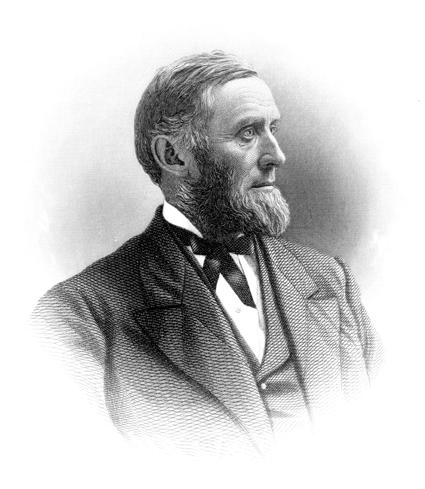
A good reporter aims to get his “scoop” on the competition— other newspapers serving his readership. Carleton addressed this, too:
“But this is not all; a correspondent must keep ever in view the thousands that are looking at the journal he represents, who expect his account at the earliest possible moment. If he is behindhand, his occupation is gone. His account must be first, or among the first, or it is nothing. Day and night he must be on the alert, improving every opportunity and turning it to account. If he loses a steamboat trip, or a train of cars, or a mail, it is all up with him. He might as well put his pencil in his pocket and go home.”8
More recently, James M. Perry terms Charles Carleton Coffin, “perhaps the toughest, and eventually one of the most skilled, of all Civil War Corresponsdents.”9 It is for this reason that “Carleton,” skilled, tough and determined, is one of the most quoted Northern
newspapermen in the war literature. Richard Wheeler, for instance, in his “eyewitness history” of Bull Run, quotes his writing so extensively that Coffin’s passages run six pages in print.10 Rather than draw from “Carleton’s” columns in the Boston Journal, however, most historians of today quote from Coffin’s postbellum books. After the war, he had at least sixteen books published on subjects ranging from foreign sightseeing (he traveled around the world during 1866-68) to the history of the American Revolution, biographies of Lincoln and Garfield and, of course, the war:
• Following the Flag: From August 1861 to November 1862 (1865);
• The Boys of ’61; or, Four Years of Fighting; Personal Observation with the Army and Navy, from the First Battle of Bull Run to the Fall of Richmond (1866);
• My Days and Nights on the Battle-Field (1887);
• Redeeming the Republic: The Third Period of the War of the Rebellion in the Year 1864 (1889);
• Freedom Triumphant: The Fourth Period of th4 Wear of the Rebellion, from September, 1864, to It Close (1890); and
• Marching to Victory: The Second Period of the War of the Rebellion, Including the Year 1863 (1899).
As example, for his Eyewitness to Gettysburg, editor John W. Schildt drew text from Marching to Victory.11
There are exceptions. One of the earliest document compilations on the war was Frank Moore’s Rebellion Record (eleven volumes, 1861-68).
Coffin’s wartime account of Forts and Henry was republished in Moore’s fourth volume; from it Paul M. Angle and Earl Schenck Miers printed “Carleton’s” take on the battles of February 1862.12
Writing about Coffin in Reporters for the Union (1953), Bernard A. Weisberger observed that even a seasoned correspondent like Carleton sometimes “wallowed in bathos.”13 Weisberger may be a little harsh, given Carleton’s reputation for crisp, clear reportorial writing. Perhaps the best thing to do is to put that on display, from his account of the battle of Bull Run.
In the first months of the war, Washington swarmed with reporters seeking news for their papers. When General McDowell and his army set out toward Bull Run, two dozen reporters followed: Henry J. Raymond of
28 CivilWarNews.com October 2022 28 October 2022 CivilWarNews.com
Engraved portrait of Charles Carleton Coffin. (Library of Congress)
the New York Times, Edward C. Stedman of the New York World, and of course C. Carleton Coffin of the Boston Journal.14 Writing at Centreville on July 18, Carleton sent a letter that got to Boston so quickly that the World was able to print it on the 23rd. By that time everyone in the North knew the outcome of the battle, and of the Union army’s ignominious retreat. He next wrote from Washington on July 22, a piece that appeared in the Journal on the 25th. What stood out in Carleton’s reporting was that he did not flinch from detailing the Federals’ rout, and that in it his own escape was providential. (Note, however: the war was just a few months old, and already one sees in the Northern press allegations of Rebels committing battlefield atrocities.)
As late as four o’clock on the 21st, Coffin believed that McDowell had won a victory. Slowly, however, realization set in, as he describes in his letter.
“It was now 4 P.M., and the firing gradually died away. Reports came in that the day was ours. I did not feel like hurrahing, for I was not satisfied. I knew we had driven them, that we had got their ground; that we had captured cannon, and taken many prisoners. I sat down by our hospital and commenced to write a dispatch to the readers of The Journal, but suffering from intolerable thirst, in company with two other gentlemen of the Boston press, went down in front of the hospital through woods, to a spring. While there I heard a commotion, and thought our men were hurrahing over the victory. The next moment a Minie bullet whistled over my head, then there was a rapid firing of musketry, two or three cannon discharges and a terrible commotion. Gaining the cleared land I could see a part of Sherman’s battery driving with terrible speed toward Cub run bridge, with private carriages, the bridge train, men on horseback and on foot, soldiers and citizens, fleeing for their lives. Being only a reporter I tried the virtue of my legs till I gained the other side of the Cub run, through the abbati which the rebels had felled. Then, feeling that I was safe, stopped long enough to comprehend the whole affair. It flashed upon me in an instant. Now I saw the meaning of the abbati; also of the cloud of dust. We had been charged upon by the enemy’s cavalry—four thousand—on the extreme left. They had crossed Bull run several miles above, had come down secretly, with the design of sweeping Schenck’s whole brigade into the cul de sac—the Indian buffalo trap
formed by Bull run and Cub run. It was a great strategic plan. They had given way before us, we had followed up, went far enough in for the grand stroke which they must make to retrieve the day. The first intimation Schenck’s brigade had of the thunderbolt was a volley in their rear. The next moment all was confusion. Three minutes’ notice—one minute even—and Sherman and Carlisle would have annihilated the troop of black horse. But the notice was wanting, and hence the terrible rout which followed. The force of rebels across the meadows was only intended as a feint, to attract attention from the cat like step which was taking place in our rear. If a company of skirmishers had been deployed, or if a regiment had been in position on the eminence I had occupied, it would not have happened.
There was a painful and criminal neglect somewhere—an utter want of generalship. We had no flankers out! THE ROUT.
I cannot describe the scene which followed. I am sick of the sight, and would, if I could, banish it forever from my mind. All I can say is that the cavalry dashed upon our men, captured Carlisle’s and a part of Sherman’s guns— shooting the horses; captured soldiers; deliberately shot them after they had surrendered; went into the house used as a hospital, and killed the wounded men, and committed barbarities which the most abject savages in the world would scorn to do. One rebel soldier was seen to cut the throat of a helpless wounded soldier! One took a stake from the fence and drove it through the body of a wounded man, pinning him to the earth! These reports are confirmed by several witnesses. There were many narrow escapes. One man informed me that he hid in a wheat stack. Another fell down and shammed dead while the cavalry leaped over him. Mr. Stedman, of the New York World, who was on horseback, took an officer on behind. He had not proceeded far when the officer was shot dead. Many gentlemen of the press had a narrow escape. Your correspondent would have been there had it not been for thirst, which, under that eye which notes the fall of every sparrow, led him away ten minutes previous, and placed him in safety.
As I ascended the hill toward Centreville I found Miles’ division in position with skirmishers thrown out, and reserves behind. The Garibaldians were in front. Never did I see a more determined set of men. The high bridge was a strong position,
and I was confident that there was no danger. But the panic had spread. The baggage trains were on the move, rattling away as if the enemy was within gunshot distance, whereas they [the enemy] had made their dash and were away, afraid to come openly to an attack or to follow up their tremendous advantage.
The scene along the road to Fairfax I will not dwell upon— the throwing away of stores, the blockades of baggage trains, the crowds of stragglers, the breaking down of wagons, all needless, and which showed that there had been a criminal neglect in the organization of the army in not making flank and rear strong as well as the front.
The two New Jersey regiments, which had been ordered forward from Vienna, were met. Their officers and men did what they could to arrest the panic stricken crew, but the elements of disorder had broken loose, and the flock must have its run. Finding a conveyance to Fairfax, I made haste thither, hoping to reach the city before morning, to give an account to your readers. From Fairfax to Vienna is four miles, which was reached on foot at 10 o’clock. Here nature gave out, and I proposed to sleep at the house of a good Union man. The secessionists were awake. “For God’s sake don’t stay here,” said a resident of the place, who still loved the Union. “I am going. They will rise before morning.” Other northern gentlemen were there and we chartered a conveyance to Falls Church, where a company of the 2d Maine regiment was in camp. Here the stragglers were picked up, and ample assistance provided by Quartermaster Lord, in command, for the wounded men. Surgeon Hamlin kindly gave me an invitation to ride into the city in an ambulance, which was accepted, but our arrival was too late for telegraphic dispatches.”
The Journal reporter tried to make sense of it all: “We have, as I said, gained a victory, but yet have been routed.” There was not much whitewashing he could do. “We drove them, occupied their ground, and yet in the moment of victory suffered a most terrible defeat. We were taken in our rear, were panic stricken and fled.”15
Like all wartime newspapers, North and South, the Boston Journal encouraged its readers to look on the bright side of things with this editorial:
“In the valor of our outnumbered and exposed troops, we see assurances which immeasurably overshadow the incidental mishap which followed. The Capital is saved. Our determined soldiers,
made wiser and more eager by the sacrifice of their brethren, are rushing forward by thousands and tens of thousands. We still have our gallant and competent leaders, who will set an immortal seal of vengeance on this transient success of the conspirators. Let us, then, calmly review all the events of the one day of trial. Our duties are paramount, and, thanks to heaven, our hopes still go hand in hand with them.”16
Notes
1. William Elliot Griffis, Charles Carleton Coffin (Columbia SC, 2022 [1898]), 3-52 passim.; “Charles Carleton Coffin,” The Bay State Monthly: A Massachusetts Magazine, vol. 3, no. 1 (April 1885), 1-18.
2. Griffis, Coffin, 25-26; John W. Schildt, ed., Eyewitness to Gettysburg: Correspondent Charles Carleton Coffin (Shippensburg PA: Burd Street Press, 1997), vii.
3. J. Cutler Andrews, The North Reports the Civil War (Pittsburgh: University of Pittsburgh Press, 1955), 83.
4. Griffis, Coffin, 27, 43-44.
5. Ibid., 33-34, 48, 52; Benjamin Franklin Cooling, Forts Henry and Donelson: The Key to the Confederate Heartland (Knoxville: University of Tennessee Press, 1987), 215; John M. Taylor, “The Career of Carleton Coffin,” Civil War Times Illustrated, vol. 21, no. 5 (September 1982), 42.
6. Andrews, North Reports, 64.
7. Griffis, Coffin, 35
8. Ibid., 35.

9. James M. Perry, A Bohemian Brigade: The Civil War Correspondents—Mostly Rough, Sometimes Ready (New York: John Wiley & Sons, 41.
10. Richard Wheeler, A Rising Thunder—From Lincoln’s Election to the Battle of Bull Run: An Eyewitness History (New York: HarperCollins, 1994), 112-13. 221-22. 31317, 328-29, 333, 343-44, 34950, 353-55, 357, 368-69.
11. Schildt, ed., Eyewitness to Gettysburg.
12. Paul M. Angle and Earl Schenck Miers, Tragic Years 1860-1865, 2 vols. (New York: Simon and Schuster, 1960), vol. 1, 190-93.
13. Bernard A. Weisberg, Reporters for the Union (Boston: Little, Brown and Company, 1953), 293.
14. Louis M. Starr, Bohemian Brigade: Civil War Newsmen in Action (New York Alfred A. Knopf, 1954), 43-44; Brayton Harris, Blue & Gray in Black & White: Newspapers in the Civil War (Washington: Brassey’s, 1999), 68.
15. “Carleton,” “OUR ARMY CORRESPONDENCE” (Washington, July 22), Boston Journal, July 25, 1861.
16. “NORTHERN PRESS ON THE BATTLE,” in Frank Moore, ed., The Rebellion Record: A Diary of American Events, 11 vols. (New York: G. P. Putnam, 1861-1863; D. Van Nostrand, 1864-1868), vol. 2, Documents page 109.
Stephen Davis of Cumming, Georgia, is author of ten books on the Civil War, most of which treat the Atlanta Campaign. His two recent volumes on Confederate General John Bell Hood (Mercer University Press, 2019, 2020) have won several prizes, including the Fletcher Pratt Award of the New York CWRT.

29
2022
2022 CivilWarNews.com CivilWarNews.com The Atlanta Daily Intelligencer Covers the Civil War Stephen Davis and Bill Hendrick Order online UTPress.org or call 1-800-621-2736 THE UNIVERSITY OF TENNESSEE PRESS Available NOW
October
October
The Emerging Civil War Award for Service in Civil War Public History

www.emergingcivilwar.com
From the Editor:
ECW was pleased this year to honor the American Battlefield Trust with our Award for Service in Civil War Public History.
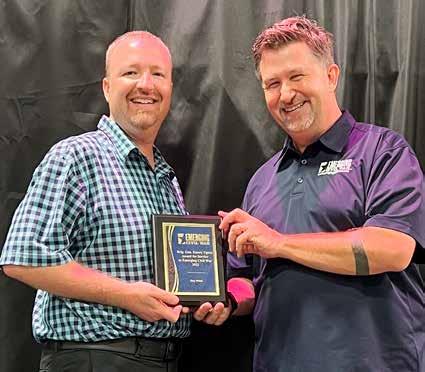
From our earliest days, ECW has enjoyed a rich working relationship with the Trust. When we were new kids on the block eleven years ago, the Trust gave us a huge confidence and credibility boost by taking us seriously and treating us like professionals, something they didn’t have to do because, let’s face it, there were a lot of blogs out there back then, and quality control was, shall we say, spotty. The Trust was one of The Big Dogs and could pick and choose who they wanted to work with.
We have worked hard to be worthy of that trust, demonstrating the professionalism with which they treated us. Because the exchange proved useful for both of us, the Trust continued to give us opportunities to work together.

It was thrilling! Imagine getting to work with one of your Civil War heroes; that’s what it was like.
In the decade since, ECW’s writers have contributed to Hallowed Ground, the Trust’s website, preservation appeals, video projects, tours, presentations, and so much more. Half of the Trust’s Education Department now consists of ECW folks!

As an organization, we work with some Trust staff members more than others, and those professional relationships have turned into warm friendships for many of us in both organizations. Those professional relationships have also let us see over the years how hard the Trust’s staff works and how committed they are to preserving the hallowed grounds so many of us treasure.
The Trust has saved more than 55,000 acres in 24 states. Just imagine what that’s done to help us better connect with our history. What a gift the Trust has given us all.
If you are not a member of the American Battlefield Trust, please consider supporting their work. Visit them at battlefields. org.
—Chris Mackowski, Ph.D. Editor-in-Chief, Emerging Civil War
Congratulations to our 2022 award winners!
Presented at the ECW Symposium on August 5, 2022.
Recognizes the work of an individual or organization that has made a significant impact on the field of public history in a way that better helps the general public connect with America’s defining event.
The American Battlefield Trust
The Emerging Civil War Book Award
Presented to the best Civil War book published during the previous calendar year.
Meade at Gettysburg: A Study in Command by Kent Masterson Brown (UNC Press)

Honorable Mention:
Robert E. Lee and Me: A Southerner’s Reckoning with the Myth of the Lost Cause by Ty Seidule (St. Martin’s Press)
The Brig. Gen. Thomas Greely Stevenson Award
Presented to an individual or organization in recognition of outstanding service to ECW.
Edward Alexander
The Emory Upton Award

Presented to a member of the Emerging Civil War community in recognition of outstanding service to ECW.
Dan Welch
The Ninth Annual Emerging Civil War Symposium at Stevenson Ridge
The Ninth Annual Emerging Civil War Symposium will be hosted at Stevenson Ridge (Spotsylvania, Virginia) on August 4-6, 2023. We’ll be focusing on 1863 and some of the most pivotal events of that year of the American Civil War.
Stay tuned this autumn for more details about our speaker line-up and other event announcements.
Early Bird Registration is open through December 31, 2022: just $200/ticket (save $25).
Check out the 2023 Symposium Page for more details: https://emergingcivilwar. com/2023-symposium.
The Emerging Civil War Book Award
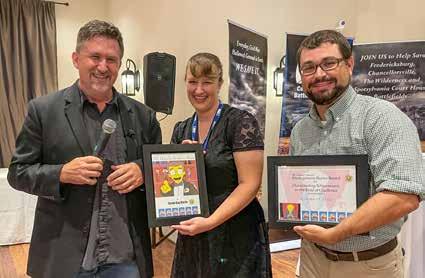
Presented to Kent Masterson Brown (UNC Press).
Presented to an individual or organization in recognition of outstanding service to ECW. Presented to Edward Alexander.
30 CivilWarNews.com October 2022 30 October 2022 CivilWarNews.com
Visit our new website at: HistoricalPublicationsLLC.com
Chris Mackowski
Two of ECW’s greatest American Battlefield Trust successes: Sarah Kay Bierle and Kris White, who both now work in the Education Department (along with Dan Davis, not pictured). Here, they show off special awards presented by ECW Editor-in-Chief Chris Mackowski.
The Brig. Gen. Thomas Greely Stevenson Award
The Emory Upton Award
Presented to a member of the Emerging Civil War community in recognition of outstanding service to ECW. Presented to Dan Welch.
– MAKER –LEATHER WORKS (845) 339-4916 or email sales@dellsleatherworks.com WWW. DELLSLEATHERWORKS.COM
ECW Bookshelf
We’re excited to have TWO books to feature on this month’s bookshelf:
The Atlanta Daily Intelligencer Covers the Civil War by Stephen Davis and Bill Hendrick

6, 1777, following the Battle of Cooch’s Bridge, the only American Revolutionary War engagement fought in Delaware. For more information on the site and their calendar of events, go to www.halebyrnes.org.
According to the University of Tennessee Press: The Atlanta Daily Intelligencer Covers the Civil War investigates how Atlanta’s most important newspaper reported the Civil War in its news articles, editorial columns, and related items in its issues from April 1861 to April 1865. The authors show how The Intelligencer narrated the war’s important events . . . and how the paper’s editorial columns reflected on those events from an unabashedly proConfederate point of view. . . . Davis. Hendrick also contributed to the scholarship on Confederate newspapers, emphasizing the papers’ role as voices of Confederate patriotism, Southern nationalism, and contributors to wartime public morale.”
The Atlanta JournalConstitution featured the book in a story on August 16, 2022. Read it here: https://www.ajc.com/life/ arts-culture/the-civil-war-newsnot-just-battles-also-patentdrugs-and-brothels/3L4VQ33BB BEHZDRYMIV46ZL54Y.
The Battle of Jackson, Mississippi, May 14, 1863 by Chris Mackowski.

According to Savas Beatie: Jackson, Mississippi, played an important role in the decisive Vicksburg Campaign and was the third Confederate state capital to fall to the Union when Maj. Gen. Ulysses S. Grant captured the important rail junction in May 1863. Drawing on dozens of primary sources and contextualized by the latest scholarship, Chris Mackowski’s The Battle of Jackson,
Mississippi, May 14, 1863, offers the most comprehensive account ever published on the subject.
For more information, check out the press release from St. Bonaventure University (where Chris serves on the faculty): https://www.sbu.edu/news/ news-items/2022/08/22/ mackowski-s-new-bookdetails-key-consequences-ofoverlooked-civil-war-battle.
News & Notes
Neil Chatelain was ecstatic at presenting his research into European ironclad construction during the Civil War at the 2022 Emerging Civil War Symposium. It was great to meet and have a chance to chat with all of the attendees.
Steve Davis has an article in the Summer 2022 issue of Crossfire, the magazine of the American Civil War Roundtable (UK). Steve’s article, “Tossing History on Its Head: The ‘C.”’ Telegram,” focuses on a mysterious document from “the middle of the Confederate government’s torment over whether to relieve General Joseph E. Johnston of command of the Army of Tennessee.” “I’m very proud to have been a ‘Yank’ invited to address the UK CWRT back in 2014,” says Steve, a proud Southerner, “though I cautioned my hosts against too liberal use of that word.”
On August 13 outside the historic Hale-Byrnes House, Phillip S. Greenwalt spoke about the Emerging Revolutionary War Series book he co-authored with Rob Orrison, Bloody Autumn, The Battles of Lexington and Concord and the Beginning of the American Revolution, April 19, 1775. The Hales-Byrnes House was the site of a council of war held by General George Washington on September
Meg Groeling is enjoying the weather, reading like a mad woman (or a grad student), and trying to get Sut Lovingood into understandable English. She adds: “Lots of late summer roses, a new kitten, and pretty reliable health. Looking forward to a Zoom interview with Paula Tarnapole Whitaker and thinking about vending at a Labor Day reenactment. On to some wonderful stuff concerning the holidays a la 1862-ish. Sarah Bierle and I will plan your Civil War Christmas Dinner—or at least your Civil War Cocktail Party. No wine & cheese pairings, but maybe a ‘temperance cocktail’ or two.”
Dwight Hughes will record a two-part podcast this fall for the Tell Me Another series of the Naval Academy History Department billed as “fascinating stories from the past—stories of genius and folly, compassion and cruelty.” The talk and discussion will be based on his ECW Series book Unlike Anything That Ever Floated: The Monitor and Virginia and the Battle Hampton Roads, March 8-9, 1862. Dwight’s presentation on the same subject at the Brass Cannon Brewing Company in Williamsburg, Va., turned out their record crowd for a weekday afternoon, almost 40. He spoke the same evening at the Williamsburg James City Cavalry Camp of the SCV.
From Frank Jastrzembski and his work with Shrouded Veterans: “A veteran headstone was placed at Colonel George W. Cartwright’s grave at Fairmount Cemetery in Newark, N.J. Cartwright was wounded in the left shoulder and the lungs at the battle of the Wilderness in May 1864 and suffered from inflammation and consumption as a result. He moved to South Carolina after the war to seek relief and died there on March 20, 1868.
“Also, a custom headstone was added to Reverend Eleazer Cady Thomas’s grave at Woodlawn Memorial Park in Colma, Calif. On April 11, 1873, Thomas was killed alongside Major General Edward R. S. Canby at the Lava Beds during the Modoc War. A relative of General Canby kindly offered to cover the expense of placing a headstone on Thomas’s unmarked grave after seeing our article in the October 2021 issue of Wild West Magazine.”
From Brian Matthew Jordan:
“After a stimulating weekend at the Emerging Civil War symposium, I spoke to the Kent, Ohio, Civil War Society on August 9. In between, I managed to squeeze in a bit of archival work at Kent State University. I continue to make progress on my new book, Crucible of the Republic: The Triumph and Tragedy of the Civil War and am wrapping up a short narrative of the Lincoln assassination for the ECW series. As the new semester looms, I am also looking forward to my third visit with the fine folks at the Augusta, Ga., Civil War Roundtable.”
From Patrick Kelly-Fischer: “Last month’s New York trip got derailed by a bout of COVID (recovered now, thankfully). Later this month I’ll be heading down to Mace’s Hole, supposedly the camp of Colorado’s only organized Confederate troops.”
Cecily Nelson Zander took part in the Civil War Monitor’s Fall 2022 issue survey on George G. Meade.
ECW Multimedia
On the Emerging Civil War Podcast in August:
• For the anniversary of Cedar Mountain, ECW author Mike Block talked about his recent book about the battle, The Carnage was Fearful, part of the Emerging Civil War Series.
• Chris Mackowski spoke with Kent Masterson Brown, recipient of this year’s ECW Book Award for Meade at Gettysburg: A Study in Command
Check out the Emerging Civil War podcast on places like Apple Podcasts and Spotify. You can also subscribe to our podcast through Patreon (https://www. patreon.com/emergingcivilwar), where we are now also offering exclusive bonus content for subscribers. That’s just $3.99/ month, and proceeds go toward defraying the production costs of the podcast. In August, we offered a full-color map of Malvern Hill by Edward Alexander and a musical performance by Jackson Mackowski of “General Stevenson’s Quick Step,” a Civil War-era composition.
On the ECW YouTube page, August offered us:
• a trip to Mobile, Alabama, for a series of videos included the battle of Mobile Bay, Fort Blakely, the surrender at Citronelle, and more
• a series of videos to complement our blog series and Symposium theme, “What If,” featuring historians Greg Biggs, Curt Fields, Eric Jacobson, Thomas Jesses, Chris Mackowski, Dave Powell, Joe Ricci, Ted Savas, and Timothy B. Smith
• a visit to the Southern Museum of Civil War and Locomotive History in Kennesaw, Ga.
• a bonus chat with Chris Kolakowski about his WWII-era book Nations in the Balance about the Burma campaign
The ECW YouTube page also featured video versions of our recent interviews with Mike Block and Kent Masterson Brown.
Please don’t forget to like and subscribe! You can also follow us on Facebook and Twitter.
If you are still looking for September plans, check out Emerging Revolutionary War as tickets are still available for the 2022 Symposium held in conjunction with Historic Alexandria on September 24. Head over to www. emergingrevolutionarywar.org to secure your spot. Check out the 2022 Bus Tour link as well: limited tickets remain for the November tour to Valley Forge and Monmouth.
As always continue to follow us on Facebook and YouTube, where our popular “Rev War Revelry” series continues every other Sunday at 7 p.m. EDT.
You Can Help Support Emerging Civil War
Emerging Civil War is a 501(c)3 not-for-profit organization. If you’re interested in supporting “emerging voices” by making a tax-deductible donation, you can do so by you can do so by visiting our website: www.emergingcivilwar.com; or you can make a gift through PayPal: https://www.paypal. com/donate/?hosted_button_ id=2L46N85FH8VWE.

31 October 2022 31 October 2022 CivilWarNews.com CivilWarNews.com Visit our new website at: HistoricalPublicationsLLC.com
Steve Davis and Bill Hendricks cover the Intelligencer’s coverage of the Civil War.
Chris Mackowski covers the oft-overlooked battle of Jackson, Mississippi.
By Bruce Allardice and Wayne Wolf
In early May 1862, General Nathaniel P. Banks exuded optimism about an early end to the Rebellion. What follows is an important letter from Gen. Banks to Sec. of War Edwin Stanton outlining his strategy for maneuvering his troops in the coming campaign. Banks was dissatisfied with having to remain in the Shenandoah Valley because, in his estimation, it was a backwater, while others were sharing the glory of capturing Richmond and ending the Rebellion. In flowery language, in keeping with his political background, Banks offered some sound analysis of what the Union armies should do, but showed complete ignorance of the intentions of Stonewall Jackson and the Confederate Army. In this letter Banks estimated the Confederate available force in the area as 20-21,000, which was not far off. This contrasts with McClellan’s panicky overestimates of the forces opposing him near Richmond. Banks’ guesses about enemy intentions was wildly off. In his letter Banks believed that Confederate intentions were strictly defensive; in fact Jackson, far from retreating, was then making his famous moves to attack both Fremont and Banks.

“We Can Defeat Them at Any Point”
“Headquarters, Department of the Shenandoah New Market, VA May 2, 1862
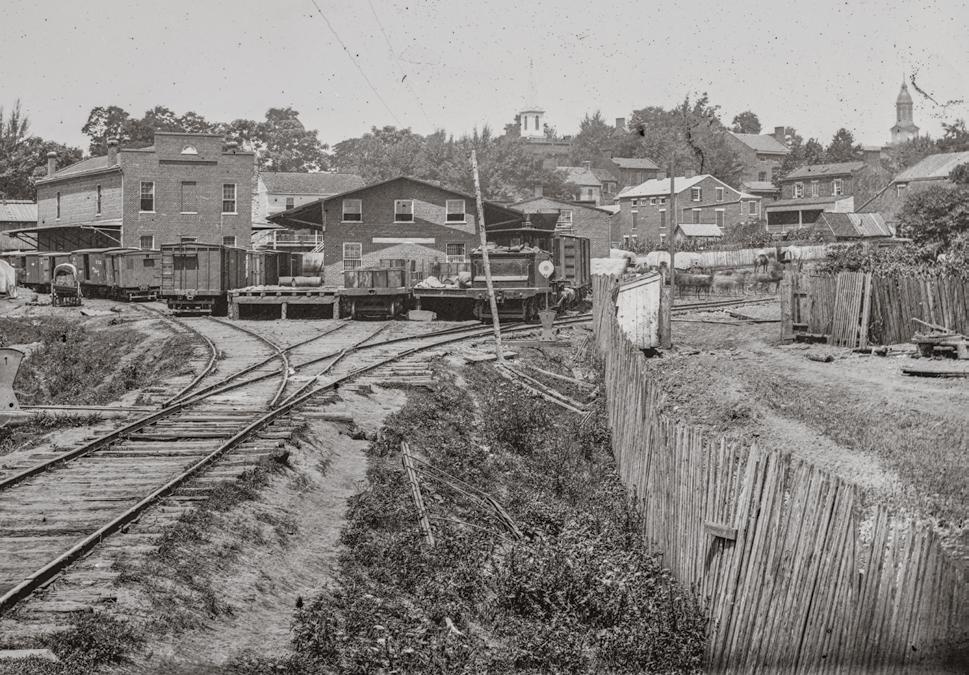
To the Honorable E. M. Stanton, Secretary of War
The Dispatch of the Honorable Secretary of War, dated—, in which he suggests that inquiry whether my command may not separate itself by too great distance from our supplies, and adds that the President does not desire that a further advance be made at present, has led me to believe that I might, without impropriety, make a more full statement of our situation, than my daily telegraphic reports admit. I do this with some hesitation, lest the conclusions I present might seem to be based upon more limited and partial views, than those obtained by the Department, or the President, in their daily survey of the whole field of action.
The only change that has occurred in the position of affairs since the date of the dispatch referred to, is the feeble attempt of the enemy to concentrate his forces at some practicable point. These forces, so far as can be ascertained, consist of Jackson’s army about 8,000, Ewell’s division, 8,000 now near the Shenandoah, and Johnson’s force, 4 to 5,000 near Staunton. If concentrated, their forces may reach 20 to 21,000 men, much demoralized and weakened by daily desertions; their purpose will be doubtless to oppose our advance, either by way of
Staunton or Gordonsville. But our force is more than equal to theirs, and we can compel them to retreat or defeat them at any point they may select for battle. This force disposed of, which
is a condition precedent to any future movements, I believe may be justly assured as substantial matter of fact; 1st the duty assigned to the Fifth Corps D’Armie in the Valley of Virginia is completed;
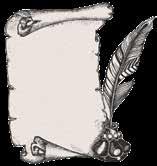
2nd that no permanent force is further required south of Strasburg, which communicates with Alexandria and other lines by the Manassas Gap Railroad, and when fortifications have been

32 CivilWarNews.com October 2022 32 October 2022 CivilWarNews.com
Gen. N. P. Banks. From Harper’s Weekly, Dec. 6, 1862.
Map of the Valley. From Scott, “A School History of the United States…” (1884)
Railroad depot in Warrenton. Photo by Timothy O’Sullivan. (Library of Congress)
constructed under the direction of Capt. Hunt of the engineer corps, so that a comparatively small force will be able to protect all north of that line. Once expelled from the Valley there is nothing to induce the return of the Rebels, unless it might be the presence of an inferior force in the Upper or Southern part of the Valley, which they might be able to overthrow. And thus hope to strengthen their sinking cause, by an otherwise barren victory.
With Fremont’s force on the right and my own on their left they could not advance as far north as Strasburg without certain destruction. The people of the Valley south of Strasburg though not altogether loyal, are not hostile. They are uncertain and confused as to the future and doubtful yet as to the success of the government over them that they have accustomed to consider invincible. But they are not hostile. This is best shown by the fact that not a single instance of individual violence against us [i.e, guerilla warfare] has occurred on the part of any person not of the Rebel army. The telegraph has not been disturbed nor a bridge burned— not an article of property stolen or destroyed, not a horse maimed and no unreasonable complaints of the inevitable exaction of the army, nor even of the cruel depredations by the marauding thieves that follow its march. In addition to this, I add that their young men desert the enemy in hundreds, accept the oath of allegiance without scruple, and they the people, render every service required of them readily, and most earnestly desire peace. I see plainly the ultimate solution of our difficulties so far as the people of this part of Virginia are concerned. They
are deluded people, incredulous of the overthrow of those who have ruled them so long, but not in themselves hostile to the government of the United States. This, of course, refers to those remaining at home and a large class who have been impressed into the service. Upon these grounds I assume that no considerable force is require south of Strasburg—and if any remain in the southern part of the Valley it should be so strong as to afford [sic avoid] attack by the enemy. These views are submitted with deference but with a conviction they will be found correct.
In regards to future movements, after the expulsion of Jackson, I would beg leave to suggest that General Fremont’s force moving in the line of his Department from Moorfield [west of the Shenandoah, on a line with Strasburg], will cover Staunton in his march, so as to secure the entrance to the Valley against the enemy. General Milroy with three or four thousand men is already near that point.
The movement of my command over the mountains from New Market by Luray to Culpeper Court House, or by Madison to Orange Court House, or on both lines if deemed expedient, will enable us to occupy Gordonsville or any intermediated point with 15 thousand fighting men. A corresponding advance on the part of the troops at Warrenton Junction [McDowell’s corps, east of the Blue Ridge Mountains] will ensure safety to both forces.
This movement presents to my mind the following advantages:
First, it protects the Shenandoah Valley from any invasion by Staunton or by the mountains;
Second, it relieves, for active service elsewhere, all the troops
One week after this report, President Lincoln ordered Banks to withdraw to Strasburg and to send part of his force east to McDowell. Two weeks after that, Stonewall Jackson attacked and routed Banks’ weakened army at the first Battle of Winchester.
Endnotes:
1. Original at John L. Nau III Civil War History collection, Albert and Shirley Small Special Collections Library, University of Virginia

2. Robertson’s Stonewall Jackson estimates the combined force at 17,000 men.
3. Cf. The Official Records, vol. 12 part 3, pages 111, 112, 118.
On April 30 Banks reported to Washington that “Jackson is bound for Richmond. This is the fact. I have no doubt.”
4. The Stanton dispatch Banks responded to, dated April 26, 1862, is in OR 12:3, pp. 106-107.

5. Edward Bissell Hunt (1823-63).
Bruce S. Allardice is Professor of History at South Suburban College in Illinois. He is a past president of the Civil War Round Table of Chicago.
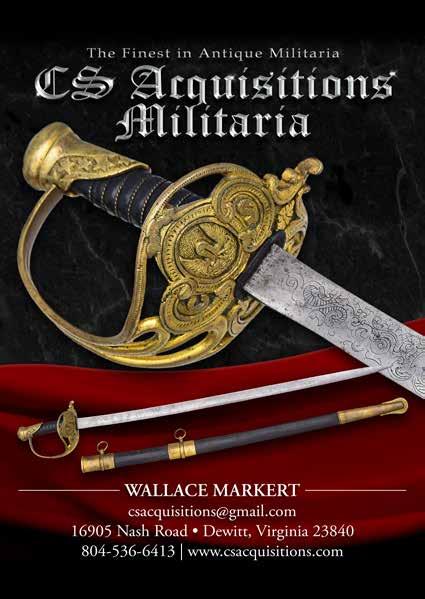
Wayne L. Wolf is past president of the Lincoln-Davis Civil War Roundtable.
in the Valley;
Third, it is the most convenient line from which our supply can be drawn. They can be received from Strasburg, as now from Front Royal by the Manassas Gap Railroad, already in operation, and from the Orange and Alexandria R. R. It also opens to us a new and fertile tract of country, not yet foraged by the enemy;
Fourth, it offers the best turnpikes in Virginia for our marches;
Fifth, it expels the enemy without probable contest, from the whole country north of the line of the Virginia Central Railway between Staunton and Gordonsville;
Sixth, it will enable us to hold Gordonsville or any intermediate point until all communications, bridges etc. can be reconstructed in the rear;
Seventh, it will enable the Department to place within striking distance of Richmond without merging commands, to which I have no objections, if necessary seventy-five thousand men, if my computation of forces is correct, so that they can be moved at any moment in any direction that the exigencies of the public service may require.
The inconvenience occasioned by the existence of separate commands can readily be removed—our troops only ask that they may share in the reestablishing the government where the blows fall thickest and heaviest.
The accompanying map [not found] shows well our situation.
I have the honor to be with greatest respect, Your obedient servant, N. P. Banks Major Gen. Comdg”
33 October 2022 33 October 2022 CivilWarNews.com CivilWarNews.com
Culpeper Court House, Va. View near depot showing locomotive on Orange & Alexandria Railroad. Photo by Timothy O’Sullivan. (Library of Congress) now
Fort Hamilton, Currier & Ives, 1860
The Graphic War highlights prints and printmakers from the Civil War discussing their meaning and the print maker or artist’s goals.
Well before the war began, Currier and Ives were capturing, in many colorful lithographs, the natural environment, buildings, bridges, parks and particularly the growth of Manhattan and its surrounding areas. In addition, they produced many “newsworthy” prints of current
events, some of which we have written about over the past few years. As countless images of the war poured from the firm’s lithographic presses, they fulfilled the public’s desire to visually experience the day’s events, but also see the bucolic, idyllic countryside that never
truly existed.
With the coming of the War, as one author has cogently noted, “For the picture industry, the war was a blessing.” For Currier and Ives, it was a boon for business.1
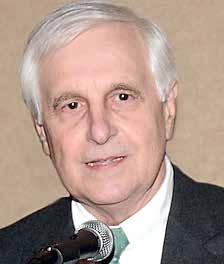
Author Bryan Le Beau adds: “Arranged chronologically, Currier and Ives’s prints provide a veritable narrative of the war.”2 As war clouds gathered in the decade leading up to war, the company began producing prints that can be construed as showing power to any enemy, foreign or domestic. One such, published in 1862 showed the military prowess at West Point looking up the Hudson.
Our featured print this month is a Fanny Palmer work published by Currier dated 1860. It is entitled “Staten Island and the Narrows/From Fort Hamilton” but it reveals much more. Fanny Palmer’s “prints are layered with a patriotic sense of history in ways that modern viewers may
not fully perceive,” according to her biographer, Charlotte Rubenstein. This print, “simply looks like a charming New York view to us today, but midnineteenth-century viewers knew that on July 4, 1776, Fort Hamilton was the site from which” Americans attempted to intercept a British troop ship. The British goal was to launch its invasion of Long Island from Fort Richmond and defeat George Washington. In “1861, people could still remember their grandfathers describing what the revolution was like.”3 Fort Hamilton was named after Alexander Hamilton and sat at the narrowest point in New York Bay. Brooklyn is but a short distance from Staten Island at this point; today the Verrazzano Bridge connects the two land masses. Fort Lafayette was demolished to make way for the bridge. The fort dates back unofficially to the Revolution

34 CivilWarNews.com October 2022 34 October 2022 CivilWarNews.com
Staten Island and the Narrows/From Fort Hamilton. (Library of Congress)
when American forces fired on those incoming British troop ships. By the War of 1812, it became apparent that the fort provided, along with the natural constriction of the bay at that point, an excellent deterrent and defensive position. In Palmer’s depiction, Fort Hamilton is shown to the right with peaceful carriage rides along the forts outer bank as generic cannon point toward Staten Island and the narrows, Fort Richmond and Fort Lafayette are represented to the left.

In the 1830’s, New York City was beset with labor unrest.
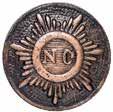

The city relied on the 27th New York Militia Regiment to keep the peace. The mayor supported a city police force, but was voted down by anti-government protesters who thought the 27th was doing fine job and nothing more was needed. The federal government agreed, and in 1839, “it allowed the Twenty-seventh to drill at Fort Hamilton (making it the first National Guard training camp in the nation); in 1840 granted the fort $20,000 for additional armaments; and in 1841 dispatched Captain Robert E. Lee for a five-year stint as post engineer, charged with improving the fort’s defenses along with those of other military installations in the area.”4



Lieutenant Thomas “Stonewall” Jackson also served at Fort Hamilton, and Captain Abner Doubleday served as the post commander in 1861, shortly after serving at Fort Sumter during the bombardment that started the Civil War. In 1848, Jackson found himself herding horses and recruits at the fort.5 Lee, on the other hand, spent his years at the fort, recommending, planning, and executing engineering projects that enhanced the fort’s readiness and effectiveness.
According to Douglas Southall Freeman, “Reaching New York on the night of April 10, 1841, in a period of very bad weather, Lee soon discovered that his task was not as interesting as he had hoped it would be – that it was laborious but technically not difficult. His instructions were to institute somewhat elaborate repairs at Fort Lafayette, and to make various changes in Fort Hamilton, particularly in the parapet, so as to adapt it to barbette guns.”6

Lee found that “superintending dull repair work,” dealing with the board of engineers’ plans, and suggesting ways to better the defenses of New York city was, in historian Freeman’s judgment, “scant return for five of the most valuable years of Lee’s life.”7 The Mexican War awaited him. By the time the country was

torn by Civil War, the Narrows boasted a ship barrier, defending New York forts adjacent to Brooklyn, Fort Hamilton, and across the bay, Staten Island’s Fort Wadsworth, from Confederate attacks. “The forts also provided troops to help put down the 1863 New York Draft Riots. Fort Hamilton also served as a prisoner-of-war camp, and an exterior “New Battery” of guns was added.”8
Historic parts of Fort Hamilton exist, one being the Robert E. Lee house. The Fort remains an active Department of Defense military post, the only one in New York City. Thanks to artist Fanny Palmer and the Currier & Ives company, we have a fairly accurate view of the Narrows and forts on the eve of the war.
• William Fletcher Thompson, Jr., The Image of War: The Pictorial Reporting of the American Civil War (New York: Thomas Yoseloff, 1960), 37. As cited in Bryan F. Le Beau. Currier & Ives: America Imagined. Washington: Smithsonian Institution Press, 2001, 72.
• Ibid.
• Charlotte Striefer Rubinstein, Fanny Palmer: The Life and Works of a Currier & Ives Artist, Syracuse: Syracuse University Press, 2018, 197-198.
• Edwin G. Burrows and Mike Wallace, Gotham: A History of New York City to 1898, New York: Oxford University Press, 1999, 636.
• James I. Robertson, Jr., Stonewall Jackson: The Man, The Soldier, the Legend. New York: Macmillan,1997, 47,79, 82.

• Douglas Southall Freeman, R. E. Lee: A Biography, New York: Scribner’s Sons, 1934, I, 186.

• Freeman, Lee, I, 200.
• https://en.wikipedia.org/ wiki/Fort_Hamilton
After 43 years in the museum field, Cilella devotes his time collecting American prints and maps and writing. His most recent books are Upton’s Regulars: A History of the 121st New York Volunteers in the Civil War (U. Press Kansas, 2009). His two-volume Correspondence of Major General Emory Upton, (U. of Tennessee Press, 2017), received the 2017–2018 American Civil War Museum’s Founders Award for outstanding editing of primary source materials. “Till Death Do Us Part,” an edit of Upton’s letters to his wife 186870, was published in 2020 by the Oklahoma University Press.
35 October 2022 35 October 2022 CivilWarNews.com CivilWarNews.com Contact Mike at: 910-617-0333 • mike@admci.com Provenance a Must! Fort Fisher items wanted Publishers/Authors Send your book(s) for review to: Civil War News 520 Folly Road, Suite 25-379, Charleston, SC 29412
48 E. Patrick St., Frederick, MD. 301-695-1864 / civilwarmed.org Divided by Conflict. United by Compassion.
The Battle of the Wilderness – Grant & Lee: Emotions of the Mantle of Command
by Peter R. Kolakowski
In the lead up to the Battle of the Wilderness that occurred on May 5-6, 1864, the Union and Confederate press, civilian population, elected officials, and the soldiers in each army stated distinct views of their two respective military commanders who were about to clash. Newly promoted and commissioned on March 9, 1864, to the rank of Lieutenant General and General of all Union armies, Ulysses S. Grant moved east. He established his headquarters in the field with the Army of the Potomac commanded by Major General George G. Meade. Confederate General Robert E. Lee, who had commanded the Army of Northern Virginia since June 1, 1862. Lee’s Army was considered in the South as THE army that represented the Confederate States of America government. Both generals were successful in their theaters of battle well before May 1864. Grant earned great
successes in the Western Theater by vanquishing and forcing the surrender of two Confederate armies and setting the stage for the Atlanta Campaign. Lee’s successes in the Eastern Theater enhanced the South’s morale, despite two failed Northern invasions, and kept alive hope for independence by repelling the Army of the Potomac and protecting Richmond, the Confederate Capitol.
The coming campaigns and battles in the East between Grant and Lee were promoted as a clash of titans with each side confident of ultimate victory. Much was expected of them. Both Grant and Lee felt that mantle of responsibility with an intense desire to succeed.
The Battle of the Wilderness was the first clash between these two premier opposing Civil War generals. Moments during specific times on May 6, the second day of the battle, brought both Grant and Lee to feel the mantle and full weight of command by the ferocity of the fighting. These burdens were soon exhibited by their emotions. In turn their respective responses and subsequent actions can be said to have steeled their resolve for the stresses and battles to come over the next eleven months.
On the morning of May 6, the Federal II Corps, along with elements of the V Corps, launched a withering attack on the Confederate Third Corps along the Orange Plank Road. The Confederate infantry was pushed through the woods and into the Widow Tapp field, the last defensive line thinly held by



Colonel William T. Poague’s 16gun artillery battalion. General Lee was there observing the action. As Poague’s guns were working to slow the Federal advance, and as Lee sought to rally fleeing Third Corps soldiers, the Confederate First Corps commander, General James J. Longstreet, leading his anxiously awaited reinforcements, arrived on the field.
Lee met Longstreet and was seen grasping his hand and saying he was glad to see him because the Federals had broken the line. Further accounts say that Lee showed an emotion not seen before. A staff member recalled that he had not seen Lee so excited with anxiety and
angst “upon his countenance.”
Other witnesses wrote that Lee had a white handkerchief in his hands and would wipe his eyes.
Lee exhibited demonstrable relief when Longstreet’s First Corps soldiers literally saved the day and the Army of Northern Virginia. Longstreet’s lead unit was the Texas Brigade. Lee’s immediate response to his relief was to lead the charge by the Texans. The soldiers’ response was to plead with Lee to let them do the gruesome work. This became the first Overland Campaign “Lee to Rear” event that is marked by monuments on the Widow Tapp field.
On the Federal side, General Grant established his headquarters for the Battle of the Wilderness on a slight knoll above the Orange Turnpike, today’s Virginia State Route 20. The reports of the carnage, casualties, and violence of the two days of the battle reached his headquarters. Outwardly Grant remained calm, but his nervous

puffing of many cigars and whittling of sticks that destroyed his new gloves exhibited that he felt the strain of command. Grant maintained a firm demeanor while ordering troops to reinforce the threatened flank.
When an excited staff officer urged him to retreat, claiming that Lee would cut him off from a river ford, Grant exploded. The famous response by Grant to Confederate General John Gordon’s flank attack was written by his aide-decamp, Lieutenant Colonel Horace Porter, “Oh, I am heartily tired of hearing about what Lee is going to do. Some of you always seem to think he is suddenly going to turn a double somersault, and land in our rear and on both of our flanks at the same time. Go back to your command and try to think what we are going to do ourselves, instead of what Lee is going to do.”
As Gordon’s flank attack appeared to dissipate on the evening of May 6, Grant still showed a calm attitude, but his
36 CivilWarNews.com October 2022 36 October 2022 CivilWarNews.com
From commanding generals down to privates, fighting in the Wilderness challenged the emotions of the men. (Library of Congress)
Lee anxiously awaited the arrival of Longstreet’s First Corps in Widow Tapp’s field on May 6, 1864. (CVBT)
The dense second-growth forest of the Wilderness presented challenges for both armies. (CVBT)
Chief of Staff, John Rawlins, is quoted as saying he saw Grant go into his tent and throw himself face down on his cot and vent feelings that showed he was deeply moved. Grant’s staff was also disturbed by this. Despite Gordon proceeding with a second attack, Grant slept through it. Grant awoke later, left his tent after his staff retired for the night, and commented to the New York Times reporter Sylvanus Cadwallader that Lee had given “sharp work” to the Federal forces.
Grant had his emotional reaction to the horrific battle and probably thought of the implications of failure. Grant’s response showed his resolve to be successful by his laconic comment as well as ordering the movement the Army of the Potomac south on the Brock Road to Spotsylvania Court House on May 7, and eventually to Appomattox.
The locations where Grant and Lee had these little known but consequential human reactions that steeled their resolve are
preserved by the National Park Service. The Grant Headquarters site was first preserved by the Central Virginia Battlefields Trust in 2001, and subsequently acquired by the National Park Service in 2019. The property on the south side of Orange Plank Road where the Texas Brigade and Longstreet’s other First Corps troops met Lee was preserved by CVBT in 2021.


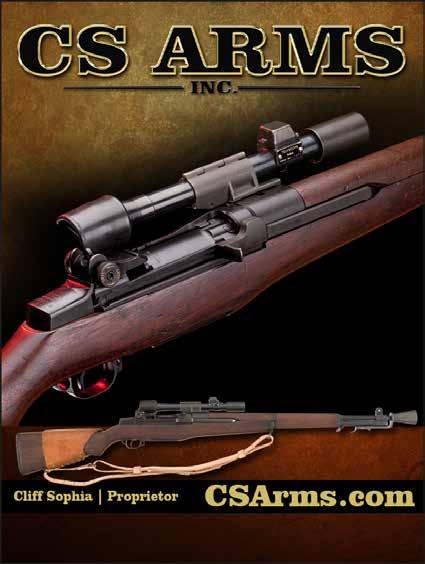
Peter Kolakowski is a member of the CVBT board of directors.


Although presenting an outward calmness, the Wilderness fighting tested Grant’s emotions. (Library of Congress)

“I doubt if a single tree could have been found that had not been pierced several times with bullets, and all were hit about breast high.” Wilbur Fisk, 2nd VT. From the skull and debris, this photo was probably taken in 1865. (Library of Congress)

37 October 2022 37 October 2022 CivilWarNews.com CivilWarNews.com
9150 John S. Mosby Hwy. (Rt. 50) Upperville, Va 20185 for US Mail: PO BOX 602 (540) 592-7273 • SophiaCSArms@aol.com Specializing in Civil War-World War II Collector’s Arms 1700-1945 Militaria We have been a family business since 1965, buying and selling fine antiques. Our collection of antiques ranges from Civil War military to antique military and toys. Our collection of Colt firearms and accessories, revolvers, pistols, carbines, accoutrements, photography, edged weapons and swords are of the highest quality. As taught by my father before me, we sell original quality items that are backed by our family guarantee. Vin Caponi Historic Antiques 516-593-3516 • 516-353-3250 (cell) rampantcolt@aol.com vincaponihistoricantiques.com 18 Broadway, Malverne, NY 11565 Publishers/Authors Send your book(s) for review to: Civil War News 520 Folly Road, Suite 25-379 Charleston, SC 29412
Civil War News book reviews provide our readers with timely analysis of the latest and most significant Civil War research and scholarship. Contact email: BookReviews@CivilWarNews.com.



The Original Graphic Novel
Old Glory at the Crossroads
1861–1865: The Original and Complete Tribune Newspapers
Civil War Centennial Comic Strip. By Rick Fletcher and Athena Robbins, compiled and edited by Thomas S. Suhs. Illustrated, index, 256 pp., 2021. SelfPublished: tsuh@hotmail.com, softcover. $40.

Reviewed by Greg Sweatt
1861–1865.
From January 8, 1961 to June 6, 1965, the comic strip Old Glory was published in the Chicago Tribune and its affiliated newspapers every Sunday in the color comics section.
Even though there were other Civil War comics produced during the Centennial, most notably by Classics Illustrated, these were primarily comic books; making Suhs’ undertaking even more impressive.
“The strip reflected the scope of war’s history as understood during the time of its initial publication.” (2) Other than some slight page yellowing the colors in the panels hold up quite well considering the first strip appeared over 60 years ago.
Each Sunday strip was “published, as close as possible, to the dates of the actual events one hundred years prior.” (2) Every page in this volume constitutes a Sunday’s strip. There are 5 or 6 panels on each page. The date on which that strip was published during the Centennial appears at the bottom of each page. As a teaser, at the end of each strip, there is a peek at what to expect in the next Sunday edition (“Next Week: Jackson’s Surprise!”). (131) The book is divided into five chapters, 1861–1865.
reader is also told the story of the blockade runners and their use of anthracite coal, because it burned with little smoke. (116) Small events are even mentioned such as the burning of the Confederate dry dock at Pensacola Bay. (51)



Old Glory at the Crossroads is a product of the time in which it was drawn, reflecting, no doubt, the prevailing attitudes of those years. It probably should not be surprising, then, that there is no mention of African American troops at all; not at the attack on Fort Wagner (149), nor the Crater. (203) The terms “Redskin,” “Warrior,” “Indians,” and “Braves” are also used freely in telling the Civil War story.
is shown at Vicksburg, in 1863, wearing the shoulder straps of a lieutenant general (3 stars) (139), rather those of a major general (2 stars). He would not be given his third star until March 1864.

Old Glory ends with the surrender of the CSS Shenandoah in England in November 1865. (243)
I have no reservations recommending Old Glory at the Crossroads to anyone interested in the Civil War, cartoons, or just a rousing pictorial of the war. Baby Boomers of the 1950’s and 60’s will get a nostalgic kick from the look and style of these comic strips.

Readers of Civil War News who remember or grew up during the Civil War Centennial (1961–1965) will especially appreciate this book. During the Centennial any manner of books, memorabilia, and toys were produced for Civil War historians, enthusiasts, and children (who can forget those blue and gray felt kepis?). Along those lines Thomas S. Suhs has done something quite remarkable, not to mention nostalgic, with his book Old Glory at the Crossroads
He has found and collected into this one volume all 230 Sunday color strips from the Tribune papers and published them in chronological order; a history of the Civil War through comics. Suhs, from Oak Lawn, Ill., was Director of Recreation for the Oak Brook Park School District. He received his BA from Southern Illinois University at Carbondale.
The strips were drawn by Rick Fletcher (1916–1983). Along with writer Athena Robbins (1902-–1996), the duo literally illustrated the Civil War for four years.
Both Fletcher and Robbins worked at the Tribune and had collaborated previously on historical strips before launching Old Glory at the Crossroads Fletcher worked as an illustrator and Robbins as a copywriter. As stated in the book’s introduction,
Artistically Fletcher’s cartoons are on a level with the finally drawn characters in Hal Foster’s Prince Valiant comics. The historical figures are drawn with careful accuracy. The attention to detail is quite good. One can look at the characters and identify who they represent: Grant, Lee, McClellan, Stuart, Bragg, even Raphael Semmes and Benjamin Grierson. As true to form as the soldiers are drawn, though, it is interesting to note that, much like the soldiers in Currier and Ives prints, the Union soldiers all wear blue and the Confederates are all dressed neatly in gray, with few variations.
The historical chronology is also quite detailed. Robbins’ writing is thorough. It takes 14 pages of strips to bring the reader from 1860, when with President Buchanan was hoping “for a peaceful settlement of the nation’s problems”) (9) to the surrender of Fort Sumter. (22) Along the way the illustrations and text cover, among other events, the repulse of the supply ship Star of the West from Sumter; the secession of South Carolina, Mississippi, Louisiana, and Florida; the surrender of Fort Pulaski; the election of Jefferson Davis; the surrender of the Federal arsenal in San Antonio; and Lincoln’s inauguration. The destruction of the Gosport Naval Base is concisely detailed in 6 panels in the May 7, 1961, Tribune
Secondary figures in the Civil War are touched upon, if only briefly. We get a glimpse of Rose Greenhow, Clara Barton, Belle Boyd, Sally Tomkins, John Charles Fremont, and “Wild Bill” Hickok to name a few. Even “Old Abe,” the eagle mascot of the 8th Wisconsin, is given his due. Major battles are, of course, illustrated. Shiloh is covered in 12 panels on 2 pages. (75-76) The
It is a credit to Fletcher and Robbins that they were able to cover as much of the war as they did with their illustrations and text in 230 Sundays. It is puzzling, however, to note the absence of any mention of the Emancipation Proclamation, the Gettysburg Address, or even the rejection of Sherman’s surrender terms to Joe Johnston, as these would seem to be major events of the war. Also, although a minor glitch, Grant
Gregory S. Sweatt received his BA in art from the University of California at Davis. He has written for Civil War Times, The Civil War Courier, Camp Chase Gazette, and Sea Classics Magazine. His interest in the Civil War began in 1959 with the Centennial. Now retired from a job as a wholesale paper sales rep, he has been drawing a Civil War-themed cartoon, Co. A, since 2003.

IN THE WAR

38 CivilWarNews.com October 2022 38 October 2022 CivilWarNews.com
100 Signi cant Civil War Photographs: Charleston in the War features newly restored images of scenes in the famed city, taken 1860–1865. e cameramen include the better-known, such as George N. Barnard and George S. Cook, as well as some lesser-known ones: Samuel Cooley, Charles Quinby, the partners Haas & Peale, Osborn & Durbec. Text by Stephen Davis and Jack Melton accompanies each featured photograph, describing the pictured scenes and the history surrounding them. e selected images depict a variety of settings: that portion of Charleston known as e Battery, the “Burnt District” (the area of the city destroyed by the Great Fire of December 1861), the Charleston Arsenal, and the many churches that allow Charlestonians to call theirs “the Holy City.” Special sections of this book are devoted to the huge Blakely guns imported from England by the Confederates and close-ups of Barnard’s views. e history of Civil War Charleston goes back to e Defense of Charleston Harbor (1890) by John Johnson, Confederate major of engineers, and to Reminiscences of Forts Sumter and Moultrie in 1860-’61 (1876) by Capt. Abner Doubleday, Federal second-in-command. Since then Charlestonians have contributed to the history of their city, notably Robert N. Rosen and Richard W. Hatcher III. e historical text surrounding 100 Signi cant Photographs draws on these and other works. A unique feature is its reliance upon the writings of actual participants, such as Augustine T. Smythe (1842–1914) and Emma Edwards Holmes (1838–1910). As a contribution to this literature, 100 Signi cant Civil War Photographs: Charleston in the War o ers rewards for all readers, from the casual novice to the serious student.
DAVIS & MELTON 100 SIGNIFICANT CIVIL WAR PHOTOGRAPHS CHARLESTON IN THE WAR 100 Signi cant Civil War Photographs: Charleston in the War features newly restored images of scenes in the famed city, taken 1860–1865. The cameramen include the better-known, such as George N. Barnard and George S. Cook, as well as some lesser-known ones: Samuel Cooley, Charles Quinby, the partners Haas & Peale, Osborn & Durbec. Text by Stephen Davis and Jack Melton accompanies each featured photograph, describing the pictured scenes and the history surrounding them. The selected images depict a variety of settings: that portion of Charleston known as The Battery, the “Burnt District” (the area of the city destroyed by the Great Fire of December 1861), the Charleston Arsenal, and the many churches that allow Charlestonians to call theirs “the Holy City.” Special sections of this book are devoted to the huge Blakely guns imported from England by the Confederates and close-ups of Barnard’s views. The history of Civil War Charleston goes back to The Defense of Charleston Harbor (1890) by John Johnson, Confederate major of engineers, and to Reminiscences of Forts Sumter and Moultrie in 1860-’61 (1876) by Capt. Abner Doubleday, Federal second-in-command. Since then Charlestonians have contributed to the history of their city, notably Robert N. Rosen and Richard W. Hatcher III. The historical text surrounding 100 Signi cant Photographs draws on these and other works. A unique feature is its reliance upon the writings of actual participants, such as Augustine T. Smythe (1842–1914) and Emma Edwards Holmes (1838–1910). As a contribution to this literature, 100 Signi cant Civil War Photographs: Charleston in the War o ers rewards for all readers, from the casual novice to the serious student. Stephen Davis JACK W. MELTON JR. CHARLESTON IN THE WAR 160 pages, Over 100 Photos, Maps, Index, Bibliography, Softcover. ISBN: 978-1-61850-167-7 $19.95 + 3.50 S&H Order online at www.HistoricalPubs.com or call 800-777-1862
CHARLESTON
Visit our new website at: HistoricalPublicationsLLC.com Subscribe or renew online – Securely
Excellent Gettysburg Battlefield Guide
Gettysburg: Three Days That Saved the United States; Remembering the Civil War’s Most Decisive Battle. Editor Ben Nussbaum. Photos, illustrations, 96 pp., 2022. Fox Chapel Publishing (Revised edition of Gettysburg: 150th Anniversary Companion House, an imprint of Fox Chapel Publishing, 2013). ISBN 978-1-49710-326-9. $14.99.

Reviewed by John D. Fowler
followed by a short analysis of the strengths and weaknesses of the army commanders, Generals Robert E. Lee and George G. Meade. Readers are then treated to infographics and a detailed timeline similar to what one would find in a museum exhibit. The work also includes an informative section on Lincoln at Gettysburg, with his famous address, as well as interesting and unusual parts, such as an article on William Corby, a Catholic, Union chaplain. The author even provides a nice overview of Civil War medicine and the devastating effects on the human body inflicted by the War’s weaponry. Again, illustrations and pictures similar to a museum display bring medical artifacts and the grim reality of war to the reader. Another important article highlights Jubal Early and the infamy surrounding his decision not to advance late on the evening of July 1 after the stunning Confederate success of the day.
Significantly Flawed Colonel
to Gettysburg and touring the battlefield, as well as a list of further resources for the reader who wants to know more. In fact, the booklet is best used as a guidebook or introduction to the battle. It has limited use to professional historians except as a text for courses in public history or historical memory, where it could serve as the basis for discussion on how historians present the past to a public.
James Montgomery: Abolitionist Warrior. By Robert C. Connor, Illustrated, Bibliography, Index, Casemate Publishers, www. casematepublishers.com 2022, 210 pp., hardcover, $34.95.

Reviewed by Wayne Wolf
At approximately 3 p.m. on the steamy afternoon of July 3, 1863, more than twelve thousand Confederates of the Army of Northern Virginia, the divisions of Generals J. Johnston Pettigrew, George E. Pickett, and Isaac Trimble, emerged from their tree covered positions near Seminary Ridge, formed battle lines, and advanced over open terrain toward the Union troops along Cemetery Ridge. Less than an hour later, the entire force was in full retreat, leaving behind five thousand casualties. Lee’s grand assault, the climactic event of the threeday Battle of Gettysburg, had failed. For more than 150 years, historians have treated the battle as the defining event of the Civil War. Hundreds of books and articles have dissected those three days in July in minute detail. Gettysburg: Three Days That Saved the United States; Remembering the Civil War’s Most Decisive Battle fills the need for a basic guide book and introduction to the battle for casual readers and young learners who are just discovering the Civil War.
This commemorative book has been produced in a magazine format, which suits the miniarticles, maps, and illustrations contained within. Indeed, the booklet is lavishly illustrated and packed with photographs from both the modern and Civil War eras. It begins with a brief description of the battle,
Nussbaum also added an excerpt from African American Faces of the Civil War: An Album of Union Soldiers and Their Stories (Johns Hopkins, 2012) by Ronald S. Coddington, which discusses Alexander Newton’s story. Newton, a free black, traveled with a New York National Guard Infantry unit that just avoided the battle. Following passage of the Emancipation Proclamation and a series of Congressional acts enabling black men to serve in the U.S. Army, he eventually joined the Twenty-Ninth Connecticut Infantry in 1863 and served until war’s end.
Death and memorialization are covered in a short piece on the origins of Memorial Day and the captivating story of Amos Humiston, a dead Union soldier found after the battle clutching a photograph of his children. Humiston was unknown at the time, and a search for his identity and family swept the North following the battle. The article was written by Mark H. Dunkelman, who wrote a large work on Humiston entitled, Gettysburg’s Unknown Soldier: The Life, Death, and Celebrity of Amos Humiston (Praeger, 1999).
The volume also incorporates sections on reenactors, battlefield preservation efforts, the numerous monuments, and shares with readers a look at the 1913 veterans’ reunion on the battlefield.
Some more useful and important aspects of the volume are the sections on traveling
The only serious criticism is that, regardless of the book’s title and some of its rhetoric, Gettysburg is not the most decisive battle of the war. Since the 1960s, Civil War historians have increasingly come to three general conclusions that invalidate such a claim. First, the war in the Western Theater was critical if not decisive in breaking the Confederacy’s ability to continue the war. The Rebels simply lost too much manpower, resources, and territory to invading Federal armies as the Western Theater slowly collapsed, exposing the Southern population and infrastructure.
Second, the Confederate hightide or closest point to a military victory in the war came with the two serendipitous invasions of Border States, Kentucky and Maryland, in 1862. Had these campaigns ended with Rebel victories, European recognition of the Confederacy could possibly have altered the course of the war. Third, the 1864 campaigns in both the Western and Eastern Theaters were far more decisive to the War’s outcome because of the implications of the 1864 United States presidential election. Indeed, the Confederacy fought on two years after the defeat at Gettysburg, and had Lee won the engagement in Pennsylvania in 1863, it is unlikely his army could have done more than recuperate and continue to forage before another Federal attempt to force him back to the Confederacy. His force was far too weak to take, let alone occupy, a major Federal city. In reality, the best Lee could hope for was a battlefield victory that would eventually lead to Republican defeat in the 1864 elections. Still, the book remains an excellent guide for the novice and the visitor to the battlefield.
John D. Fowler, Ph.D., is the author of several books and articles on the Civil War Era. He is the author of Breaking the Heartland: The Civil War in Georgia. He is currently a Professor of History at Dalton State College.
behind enemy lines to encourage slaves to desert plantations, an attribute of economic warfare he felt would cripple the South’s capacity to wage war. In one of his most successful raids near the Combahee River, he freed over 756 slaves but was also censured for burning civilian homes. As commander of the 2nd South Carolina Volunteer Infantry, he summarily shot a soldier for desertion without the formality of a court martial. Militarily, however, he was generally praised by his superiors for bravery under fire, shaping his black soldiers into cohesive fighting units, and leading them personally in major engagements at Westport and Olustee, as well as numerous forays against Gen. Sterling Price’s campaign to secure Missouri for the Confederacy.
Robert Conner pens a fairly objective biography of James Montgomery, the abolitionist colonel demonized for burning Darien, Ga., in the movie Glory Known as the “fighting preacher” and the “Guerrilla Chieftain,” Montgomery believed a Civil War to free slaves was both inevitable and justified.
An ardent abolitionist, he fashioned himself the leader of civil and military affairs in southeast Kansas, where he and his family lived in what was dubbed Fort Montgomery. He had some justification for fortifying his home as jayhawkers frequently raided homes during and prior to the Civil War. Montgomery used some atrocities perpetrated by these border ruffians to justify his depredations against Confederate sympathizers and Southern homes, mills, crops, and barns. Thus, he felt authorized to execute five persons near Morristown, Mo., in 1861 in retribution for jayhawker attacks on Union homes.
Montgomery’s war record was equally controversial. He was one of the early officers to lead black troops, actively recruited them, and frequently led raids
He resigned his commission in September 1864 due to ill health but rejoined militia units after a short absence as a colonel of troops trying to drive Confederates out of Kansas and Northwestern Missouri. He then returned to his farm in Linn County and raised crops while preaching on the weekends for the First Day Adventist Church. He was, by all accounts, a charismatic preacher who drew people to his sermons as he had drawn soldiers to enlist to end slavery.
The author is objective in pointing out atrocities perpetrated by Montgomery as well as how his virulent abolitionist views overtook his moral judgment and his abrogation of civilized rules of warfare. If the historian wishes to read a biography of a radical abolitionist who placed his own views above morality and decency, this book will be appealing. It is well researched, readable, and historically accurate.
39 October 2022 39 October 2022 CivilWarNews.com CivilWarNews.com Publishers/Authors Send your book(s) for review to: Civil War News 520 Folly Road, Suite 25-379 Charleston, SC 29412
Dr. Wayne L. Wolf is Professor Emeritus a South Suburban College, past president of the Lincoln-Davis Civil War Roundtable, and the author of numerous books and articles on the Civil War and the common soldier.
Enlightening Anthology about the Old Line State
The Civil War in Maryland Reconsidered. Edited by Charles W. Mitchell and Jean H. Baker. Notes, index, 352 pp., 2021. Louisiana State University Press, lsupress.org. Hardcover. $45.
 Reviewed
Reviewed
by
Jonathan A. Noyalas
immediate wake. This group of essays not only provides a fresh analysis of the complexities of life for Maryland’s enslaved people and the tenuous nature of freedom, but resurrects the lives of individuals long-forgotten. For example, Richard Bell, professor of history at the University of Maryland, revives the story of Rachel Parker, a seventeenyear-old free black woman from Pennsylvania abducted by Thomas McCreary to be sold into slavery in Baltimore.
related to voting rights of Union soldiers.
In their ten-volume biography of President Abraham Lincoln, John Hay and John Nicolay, Lincoln’s former private secretaries, offered their perspectives about Maryland’s importance to the Union war effort. Among all border states, Hay and Nicolay argued, none was of “more immediate and vital importance” than Maryland. The state Lincoln’s biographers characterized as “divided by sharp antagonism” has proven fertile ground for historians. This collection of thirteen essays, written by a cadre of fine scholars and ably edited, makes a valuable contribution to the scholarship on the Old Line State.
The editors of this outstanding anthology, Charles W. Mitchell and Jean Baker, promise that the essays aim to “bridge the gap between older versions of Maryland’s Civil War history… break fresh ground… challenge long-held assumptions” and “provide new perspectives on old debates.” All the essays in this collection, deeply researched and smartly crafted, help achieve the anthology’s goals.
Four essays focus on the experiences of Maryland’s African Americans prior to, during, and in the Civil War’s
Other essays bring clarity to the extent of Confederate loyalty in Maryland. For example, Charles Mitchell’s essay systematically dismantles the idea that support for the Confederacy was significant in Maryland. Mitchell cogently lays out the widespread extent of Unionist sentiment in Maryland and illuminates how advocates of the Lost Cause greatly exaggerated pockets of support for the Confederacy to create the illusion of an ardently pro-Confederate Maryland. Timothy Orr’s insightful examination of recruitment of Union soldiers in Baltimore also challenges this notion.
While all essays in this volume enrich understanding of the Civil War in Maryland they also serve as case studies to deepen our knowledge of the Civil War era. For instance, Brian Matthew Jordan’s elegantly crafted narrative about Union soldiers’ encounters with dead after the Battle of Antietam, not only enhances the historiography of the conflict’s bloodiest singleday, but Jordan’s cogent analysis of primary accounts establishes an important framework for comprehending how soldiers coped with the tragic scenes of a battle’s aftermath. Furthermore, Jordan’s essay illuminates how encounters with the dead steeled the resolve of Union soldiers to continue the fight. Similarly, Jonathan White’s outstanding essay, “Achieving Emancipation in Maryland,” offers insight not only into the intricacies of the push for a new constitution in Maryland, one that abolished slavery, but contributes to the broader scholarship about the debates politicians engaged in

Contributions by Robert Schoeberlein and Robert Cook also do much to enrich perspectives about the Civil War era beyond Maryland’s borders. Schoeberlein’s essay, “Maryland’s Women at War,” admittedly my favorite in this splendid collection, investigates the myriad ways Union and Confederate women supported their causes during and after the conflict. From relief associations, sewing circles, caring for family members of soldiers, and supporting veterans after the conflict, Schoeberlein admirably illustrates that although not permitted to fight or vote, women “expressed their devotion to their respective political alignments in multiple and somewhat different ways.” Cook’s essay explores the complexities of memory in Maryland after the conflict, particularly the efforts of such Confederate veterans as Bradley Johnson to portray Maryland as much more Confederate than it was and the efforts of black Union veterans to counter the rampant Lost Cause.
While those interested in the complexities of Maryland’s Civil War era history should certainly regard this important volume as indispensable, its appeal extends significantly beyond the boundaries of the Old Line State. Individuals seeking perspectives on the experiences of African Americans, allegiance, soldiers, recruitment, constitutional issues, women, and memory will find Mitchell’s and Baker’s anthology quite useful and thought-provoking.
Jonathan A. Noyalas is director of Shenandoah University’s McCormick Civil War Institute in Winchester, Virginia, a professor in Civil War Era Studies at Shenandoah University, and founding editor of Journal of the Shenandoah Valley During the Civil War Era. He is the author or editor of fourteen books. Noyalas’ latest book, Slavery and Freedom in the Shenandoah Valley during the Civil War Era, was published by the University Press of Florida.
Cedar Mountain To Antietam: A Civil War Campaign History of the Union XII Corps, JulySeptember, 1862. By M. Chris Bryan. Illustrations, maps, notes, appendices, bibliography, index, 393 pp., Savas Beatie, savasbeatie.com, 2022, $34.95.
Reviewed by Jeffry D. Wert

mortally wounded early in the fighting, but his officers and men fought valiantly in the Cornfield, East and West Woods, and the Dunker Church plateau. Casualties in some XII Corps regiments exceeded fifty per cent.
The author’s accounts of the corps’s roles in the fighting at Cedar Mountain and Antietam are very detailed. In places, the descriptions are at company levels. At times, the Cedar Mountain narrative gets bogged down and confusing, while the equally detailed Antietam chapters are less confusing. To be sure, describing Civil War combat accurately and with clarity is challenging.
It seems as if the flow of new books on Civil War battles and campaigns is ceaseless. An emerging generation of historians and serious students of the conflict has offered new interpretations or provided richer details on the engagements and operations. In most cases, these studies are most welcome.

M. Chris Bryan has written one such work, a worthy addition to the field of Civil War military history. As the subtitle indicates, the author examined the role of an often-overlooked command during the summer of 1862. Organized as the II Corps, Army of Virginia, the unit fought under Nathaniel Banks at Cedar Mountain on August 9. The corps was engaged in actions during the early stages of the Second Manassas Campaign but was not on the battlefield when the Army of Virginia suffered defeat on August 29-30.
In the battle’s aftermath, John Pope was relieved of command, and units of his army were integrated into the reorganized Army of the Potomac under George B. McClellan. The II Corps of the Army of Virginia was designated the XII Corps, Army of the Potomac, commanded by Joseph K. F. Mansfield.
On September 17, at Antietam, the XII Corps entered the action in support of an assault by the Union I Corps. Mansfield fell

The narrative seems overwrought in places, replete with adverbs and adjectives. The difficulty with overusing the former is whether they accurately convey the situation. Nevertheless, the book is based on solid research in manuscripts, newspapers, and published works. The author has made a commendable contribution to the field.
Jeffry D. Wert, of Centre Hall, Pa., a longtime book reviewer for Civil War News, is the author of numerous books on the Civil War, including Gettysburg-Day Three and Cavalryman of the Lost Cause: A Biography of J. E. B. Stuart, and The Heart of Hell: The Soldier’s Struggle for Spotsylvania’s Bloody Angle.
40 CivilWarNews.com October 2022 40 October 2022 CivilWarNews.com Visit our New Website CivilWarNews.com
Want To Advertise In Civil War News? Email us at ads@civilwarnews.com Call 800-777-1862 Vol. 48, No. September $3.50 America’s Monthly Newspaper For Civil War Enthusiasts 36 Central Virginia Battlefield Trust ST. BONAVENTURE, School of Communication, Trust the largest nonprofit Civil War battlefields, the and heritage tourism initiatives, played in determining the course The trust recognized Teacher Institute held July 21-24, “Chris has been great partner Kristopher D. White, long-time in presenting the award. “He his appearances in on our videos. David N. Duncan, president of “The trust lucky to work talented historians,” Duncan Mackowski Receives Outstanding Service Award from American Battlefield Trust Chris Mackowski among them. has worked closely YouTube and Facebook pages, with number of preservation am deeply grateful to everyone my privilege serve cause and annually attracts hundreds of museum tours, and guest lectures engagingly teach about the first century. of the in-person Teacher Institute, inception. Teacher Institute, Mackowski year’s Virtual Teacher Institute, intersection between technology, he has presented looked at sessions for the VTI each year it’s June, Mackowski traveled July 23 event in Mobile, Ala. Revolutionary War and Civil War similar virtual field trip for the Mackowski has taught chief and co-founder of Emerging Series, published by Savas Beatie. edited nearly two dozen books on War magazines. Mackowski Central Virginia Battlefields preservation organization based (NC) Civil War Roundtable— Stevenson Ridge, historic battlefield in central Virginia. Deadlines for Advertising or Editorial Submissions is the 20th of each month. Email to ads@civilwarnews.com
Commendable Contribution
COLLECTION

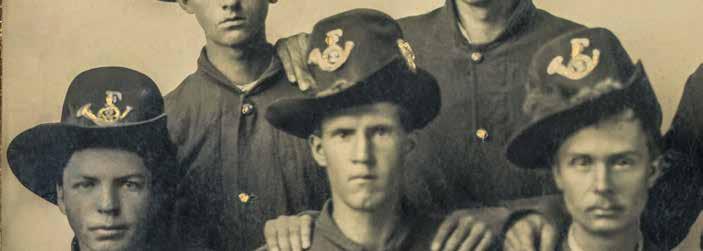
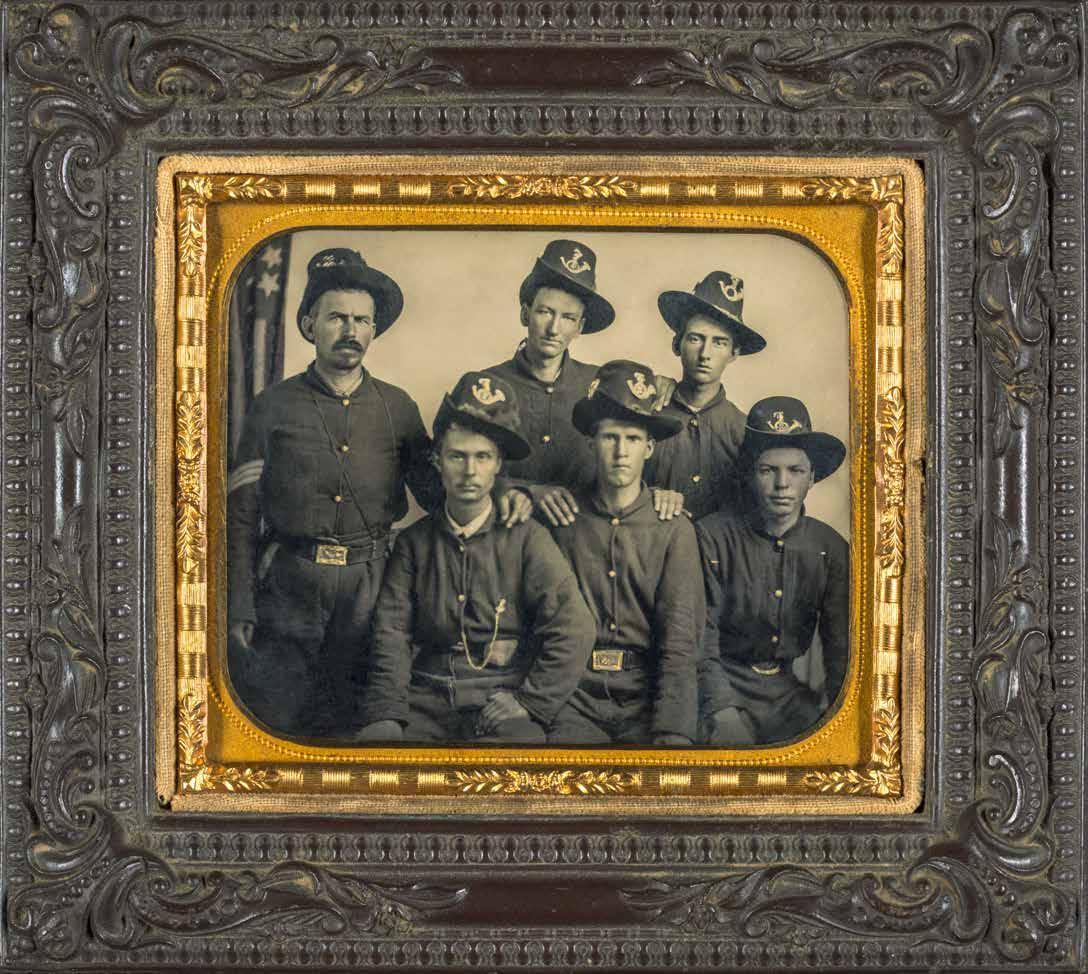
41 October 2022 41 October 2022 CivilWarNews.com CivilWarNews.com
The Union infantry sergeant (far left) is looking over five men in his company. All are wearing 4 button sack coats and Model 1858 dress hats (also known as Hardee hats) with infantry insignia (stamped brass horn), blue hat cord, and designations for an unknown Company F, 2nd Infantry Regiment. An American flag can be seen in the upper left quadrant of the backdrop. They are all wearing rectangular buckles on their waist belts. One of the soldiers in the front has a watch chain. Liljenquist Family Collection of Civil War Photographs (Library of Congress).
Reversed closeup of the hats and insignia. Original brass infantry insignia shown below.
Engaging Read: Grant vs. Lee
Grant vs. Lee: Favorite Stories and Fresh Perspectives from the Historians at Emerging Civil War. Edited by Chris Mackowski and Dan Welch. Images, maps, 312 pp., 2022. El Dorado Hills, CA.: Savas Beatie. www.savasbeatie. com ISBN 978-1-61121-595-3. $29.95.
Reviewed by John D. Fowler
been written about the ensuing contest between these two men as the fate of two nations hung in the balance.
Grant vs. Lee is an engaging read. It is part of the Emerging Civil War 10th Anniversary Series, that includes elements from the blog, podcast transcripts, the Emerging Civil War series, the annual Civil War symposium, and other original material. For those who are unaware, “Emerging Civil War serves as a public-history-oriented platform for sharing original scholarship related to the American Civil War.” (xvi). Over the decade, the organization has become an important link between historical scholarship and public history. It serves a key role in making history appear interesting, fun, and, most importantly, relevant to a generation that had largely been abandoned by academic historians who chose to focus more on esoteric issues and/or write for themselves and not the general audience.
the useful maps, the book also includes period photographs, plus crisp black and white shots by Chris Heisey. Indeed, Heisey contributed to a chapter entitled “Photographing Grant vs. Lee” that showcases some outstanding artistic photographs. The volume is also footnoted where appropriate and ends with a useful index.
Opposition Politics During the Civil War
The Cacophony of Politics: Northern Democrats and the American Civil War. By J. Matthew Gallman. Notes, bibliography, index, University of Virginia Press, www.upress. virginia.edu. 399 pp., 2021, hardcover. $35.

constitutional changes.
In 1864, Union General Ulysses S. Grant became General-inChief of U.S. armies and sought to bring the American Civil War to an end. While Grant had strategic control over armies in all theaters, he traveled with General George G. Meade and the Army of the Potomac as it launched its spring offensive against the Confederacy’s most successful and thus most dangerous force, the Army of Northern Virginia under General Robert E. Lee. Scores of books and articles have
The volume is essentially set up in the format of a guidebook that covers the struggle between Lee and Grant through the Overland Campaign, the siege of Petersburg, the fall of Petersburg and Richmond, and the final Appomattox Campaign. The first few pages of the book contain maps with points of interest marked. The reader is then invited to explore 45 short essays, each linked to the map as a “point of interest.” Most essays are based on blog posts and are arranged chronologically. In addition to
The American Civil War was the rst war in which both sides widely used entrenchments, repeating ri es,






warships, and telegraphed communications. It was also the rst American War to be extensively photographed. Mathew Brady,

and
Since many essays involve small incidents and particular people, this frames the work as a micro examination of the struggle between Lee and Grant rather than as an overarching macro view of the campaign. While this is not a serious criticism, it is a weakness. The inclusion of even a small overview of the major events would have allowed a reader unfamiliar with these broader events to place the various articles into proper perspective and thus enhance both understanding and appreciation for the essays included. Since the Emerging Civil War has established itself as an excellent resource for those just beginning to explore the Civil War, an overview chapter seems a must. It would have also increased the book’s value as a guide of sorts for the battlefields of the Virginia campaign of 1864-65.
Reviewed by Wayne L. Wolf
The Democratic Party had been formed as a people’s protest against the concentration of power in the federal government. Thus, it is not surprising that in speeches, newspapers, and pamphlets Democrats cast themselves as defenders of the Constitution in the face of a radical Republican agenda. Individual Democratic leaders, e.g. Fernando Wood, Clement Vallandigham, George McClellan, George Woodward, etc., occupied different spots on the continuum of views on the war but each realized that politics were essentially local, familial, geographic, and ethnic. Each of these groups needed to be listened to if success at the polls was to be the eventual outcome.
are



for having
photographs in the Civil War’s eastern theater.
Barnard
to
in this
for his photographic
in the
theater. A civilian photographer hired by Gen. William T. Sherman’s chief engineer to take pictures of forti cations around Atlanta, Barnard took several hundred of them in and around the city in the fall of 1864. His most famous is the site of Union Maj. Gen. James B. McPherson’s death in the battle of Atlanta, July 22, 1864. Thus far, no comprehensive, de nitive listing has been made of the photographer’s work. For this book we have chosen a hundred images we deem “signi cant.”
page Paperb ac k: $19.95 (+$3.50 S & H)
Ordering
Still, for someone familiar with the larger story, the incidents and personalities covered offer interesting anecdotes. Starting with the beginning of the Overland Campaign in May 1864, the essays explore the savage nature of the nearly continuous contact between both armies as Grant searched for a way to outmaneuver Lee. Small stories relate to other major events such as the Petersburg Campaign, the Crater, the attack of Fort Stedman, the fall of Richmond and Petersburg, and Lee’s ultimate surrender at Appomattox are well covered. Overall, the volume does not break new ground, nor does it contain the overview that would have made it a stronger guidebook and introductory survey of the events covered. However, the collection is engaging, and will no doubt be useful to readers who have a general knowledge of the struggle between two iconic generals of the Civil War.
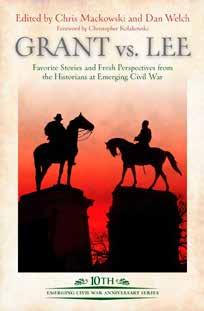
John D. Fowler, Ph.D., is the author of several books and articles on the Civil War Era. He is the author of Breaking the Heartland: The Civil War in Georgia. He is currently a Professor of History at Dalton State College.
This book encompasses the views and attendant dilemmas of politicians and ordinary citizens as they try to define their position on the Lincoln Administration, the war, constitutional issues, and emancipation. Northern Democrats were the loyal opposition to what they conceived as a radical Republican usurpation of the Constitution as it was designed.

The Democratic response was anything but unanimous. Rather, Democratic views existed along a broad spectrum from supporting the war to preserve the Union (War Democrats) to total opposition to Mr. Lincoln’s war and the trampling of individual liberties (Copperheads). Between these polar opposites were found politicians and citizens whose views were in flux, changing their place on the spectrum as casualties mounted, when Emancipation became a war goal, and when, geographically, they represented a constituency who either supported the war or opposed it. Democrats generally did not believe the war and emancipation should be won at the point of a bayonet but differences settled through compromise and
J. Matthew Gallman deserves kudos for using a wide variety of personal narratives, e.g. Johnathan Hale, Willie Waller, Francis Sherman, Manton Marble, etc., newspaper articles, private communications, and diaries (including many from women on the home front) to illustrate the vast range of views held by people belonging to the Democratic Party. The vast majority of these individuals, and Democrats in general, were conservative, patriotic, and merely opposing administration policies they believed ran amok from Constitutional restraints. They felt the Lincoln administration ran over civil liberties by suspending the writ of habeas corpus, closing down newspapers, and jailing dissidents, even incarcerating a United States senator and congressman.
This book is filled with primary source material that allows a reader to hear the actual words of the minority party. This is a positive for the reader who wishes to form his own opinion on the validity of each Democrat’s position, but this strength is mildly subverted in the concluding chapter when the author applies 20th Century moral assessments and evokes moral outrage on 19th Century actors. It is difficult for an author to avoid this common tendency to judge politics by contemporary
42 CivilWarNews.com October 2022 42 October 2022 CivilWarNews.com Publishers/Authors Send your book(s) for review to: Civil War News 520 Folly Road, Suite 25 PMB 379 Charleston, SC 29412
“The best little book on Barnard”
128
ironclad
Alexander Gardner
Timothy O’Sullivan
famous
made iconic
George N.
deserves
be ranked
top tier
work
war’s western
info: $19.95 plus $3.50 s&h South Carolina residents
sales tax Mail a check to: Historical Publications LLC 520 Folly Road, Suite 25 PMB 379 Charleston, SC 29412 or Order online at www.historicalpubs.com Wrecking Atlanta series the 1880s. When the men the 1st Missouri Engineers (oneofPoe’s thecaption,“theFirstMissouriEngineersdestroyingarailroadshowingtheuseofhooks for Monday, November Freedpeople on the Boxcars thesharpskirmishinginfrontofit.Federaltroops,however,neverassaultedtheConfederate Peachtree Battery–Another View
add 9%
standards but essential for an honest attempt to discern motivations behind political positions 150 years ago.
One historical error is noted. The lyrics to “A New Yankee Doodle” did not glorify the military exploits of Jubal Early. Aside from this minor point, the book is eminently readable, instructive, thoroughly researched, and a welcome addition to understanding the

actions of the loyal opposition during America’s most trying fratricidal war.
Wayne L. Wolf is Professor Emeritus at South Suburban College and the author of numerous books, articles and columns regarding Civil War history. He is the past president of the Lincoln-Davis Civil War Roundtable and a frequent speaker on the Civil War circuit.
Forgotten Soldiers
Animal Histories of the Civil War Era. Edited by Earl J. Hess. Photos, notes, index. 270 pp. Louisiana State University Press, 2022. www.lsupress.org. $45.
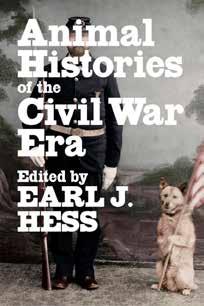
Reviewed by Jonathan White
Ulysses S. Grant


HQ: generalgrantbyhimself.com
E-Telegraph: curtfields@ generalgrantbyhimself.com
Signal Corps: (901) 496-6065

Facebook@ Curt Fields
As a high school reenactor with the 28th Pennsylvania Volunteers in the 1990s, I always looked forward to our monthly meetings at the G.A.R. Museum in Philadelphia, an incredible 1790s house full of flags, muskets, buttons, paintings, and other artifacts from the Civil War. Hanging on one wall was the taxidermied bust of an army mule. Beneath it was a framed poem which began, “Behold a Hero. . .” A few steps away was a room dedicated to Maj. Gen. George Gordon Meade, the highlight of which was a large glass case that contained the head of Meade’s war horse, Old Baldy. Clearly the veterans who put together the G.A.R. Museum’s collections understood the importance of animals to their late war effort.

Now, many years later, scholars are beginning to appreciate and study the importance of animals in history. This fascinating collection of essays, edited by eminent military historian Earl J. Hess, offers perceptive analyses of the many roles that animals played in the Civil War Era. Some stories will be familiar, such as Jefferson Davis’s effort to introduce camels to the U.S. Army in the 1850s. Others are less well known, such as how sectionalism influenced the debate behind the creation of the National Zoo in the late nineteenth century. Three essays focus on horses. David J. Gerleman explains how the armies obtained, shipped, and
treated horses. Through military service and shared suffering, horses and men “created comradery.” Hess explores the “indispensable” role that artillery horses had in the war, including the times they “lost their nerve and ran in panic,” their bravery as “warriors,” and the cleanup when these “biggest living objects on Civil War battlefields . . . became casualties.” Abraham Gibson argues that the study of animals serves as “both a lens and a mirror” to help us better understand warfare. For instance, he shows how the “dwindling number of horses necessarily shaped Confederate strategy.”
Other essays explore the interactions of humans with wildlife, animals as food, dogs in the Civil War Era, and animals after the war. Hess, who contributed three essays plus the introduction, argues that the Civil War “lessened the divide between men and wildlife by placing millions of soldiers in the countryside, where they lived and fought in closer touch with the environment than was normal.”
Birds, insects, reptiles, and other critters were in constant contact with soldiers, often as “pests,” but sometimes as sources of food, through hunting, and other times simply as fascinating “creatures” that soldiers would examine and collect as “unusual specimens.”
Sensory historian Mark Smith analyzes the importance of bees at the time, not only for their natural functions or the dangers they posed but for their influence on culture. For instance, many soldiers wrote of the “buzz” of cannonballs and bullets. Jason Phillips explores the place of hogs in Southern society. One of his many fascinating insights is that African Americans in the Confederacy “asserted freedom by killing southern hogs.” Another essay by Hess explores vegetarianism in the era; the Vegetarian Society of America was founded in Philadelphia in 1866).
Joan Cashin reveals “canine exploitation” during the war as many people had a “cold indifference toward canines” and “some people took a ruthless view of them.” Dogs were “expendable,” they were whipped, killed, eaten, and sent into combat. Writes Cashin, “The war devalued animal life, just as it devalued human life,” leading to “a swift increase in what we could call animal cruelty.” Lorien Foote uses South Carolina as a lens to explore the interactions between
dogs and humans. Bloodhounds were a ubiquitous aspect of antebellum southern life, known to slaves as “the detective officers of Slavery’s police” and “a terror to the negro race.” Confederates continued to use dogs in similar ways during the war. One Indiana soldier wrote that dogs “were of more real service to the Confederacy . . . than many regiments of soldiers would have been.” Black resistance against slavery therefore sometimes involved killing the dogs that could be used to hunt fugitives or to enforce labor on plantations.
Brian Matthew Jordan considers the place of regimental pets and mascots during and after the war. Jordan shows how Union soldiers developed “meaningful and affective ties with animals,” and how pets helped comfort soldiers or keep them from being bored in camp. Mascots became “powerful emblems” that symbolized the Union’s cause. The 8th Wisconsin’s eagle, Old Abe, for example, embodied “courage, loyalty, and ideological conviction,” and during Reconstruction, veterans of the Eighth “deployed the eagle as a ‘living rebuke to ingratitude and treason.’”
Animals were everywhere during the Civil War, and they still can be found in the records and at historic sites. Last year my family visited the monument of the 11th Pennsylvania Infantry at Gettysburg. As my daughters posed next to Sallie, the regimental terrier at the base of the monument, I told them about our ancestor, Private William S. Allen, who had fought with the Eleventh. My girls loved petting Sallie’s head, just as the soldiers of the Eleventh did in 1863. They got teary-eyed when I told them about how Sallie died on a Virginia battlefield. All students of the Civil War intuitively know that animals were central to the conflict, but little sustained analysis has been given to them as a subject. The essays in this volume will help us better understand and appreciate the sacrifices made by our furry friends, and will hopefully spur further inquiry into the subject.
Jonathan W. White is professor of American Studies at Christopher Newport University, vice chair of The Lincoln Forum, and the author or editor of 13 books, including A House Built By Slaves: African American Visitors to the Lincoln White House (2022).
43 October 2022 43 October 2022 CivilWarNews.com CivilWarNews.com CivilWarNews.com
Fields Jr., Ph.D.
Portrayed by E.C.
19th CENTURY LIVING HISTORY! James Country MERCANTILE 111 N. Main Liberty, MO 64068 816-781-9473 • FAX 816-781-1470 www.jamescountry.com Ladies – Gentlemen Civilian – Military
Books • Buttons • Fabrics • Music
Patterns • Weapons Mens, Ladies and Children’s
Civilian Clothing
Military Clothing
Military Accessories • Accoutrements Everything needed by the Living Historian! Our Clothing is 100% American Made! The home of HOMESPUN PATTERNS©
•
•
•
•
•


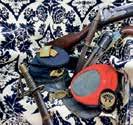














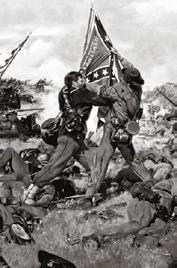




















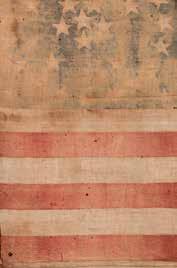

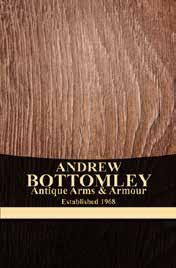






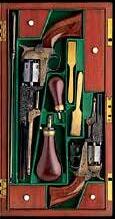


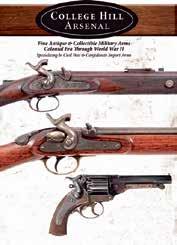























44 CivilWarNews.com October 2022 44 October 2022 CivilWarNews.com CivilWarShop.com Offering the Finest Investment Grade Military Memorabilia since 1981 Buy – Sell – Trade Certified Appraisal Services Life Member Company of Military Historians Lynn and Will Gorges, Proprietors 3910 US Hwy. 70 East New Bern, NC 28560 (252) 636-3039 civilwarshop@gmail.com www.CivilWarShop.com Long Bay Salvage LLC specializes in the recovery and restoration of authentic Civil War Cannon with an emphasis on 10-Inch Columbiads, what has become a rare piece of Civil War history. Long Bay Salvage also works with historical entities (government and private) to recover and conserve large historical artifacts with a specialty in large field and naval artillery pieces. Glenn Dutton Dutton glennjdutton@aol.com Rufus Perdue Perdue rperdue1@sc.rr.com PLEASE CONTACT US FOR MORE INFORMATION www.LongBaySalvage.com Promoters of Quality Shows for Shooters, Collectors, Civil War and Militaria Enthusiasts Military Collectible & Gun & Knife Shows Presents The Finest Mike Kent and Associates, LLC • PO Box 685 • Monroe, GA 30655 (770) 630-7296 Mike@MKShows.com • www.MKShows.com Northwest Georgia Trade Center 2211 Dug Gap Battle Road Dalton, GA 30720 January 30 & 31, 2021 Chickamauga (Dalton) Civil War Show Williamson County Ag Expo Park 4215 Long Lane Franklin, TN 37064 December 4 & 5, 2021 Middle TN (Franklin) Civil War Show l Shiloh 2405 Oak Grove Road Savannah, TN 38372 731-438-3541 ShilohRelics.com History@shilohrelics.com owner Rafael Eledge .com Dealing in the Finest Authentic Militaria Since 1995 with an Emphasis on the American Civil War Pistols, Muskets, Carbines, Rifles, Bayonets, Swords, Uniforms, Headgear, Belt Buckles, Cannon, Buttons, Bullets, Artillery Implements Etc. Mid West Civil War Relics MidWestCivilWarRelics.com Allen Wandling Phone: 618-789-5751 Email: awandling1@gmail.com Museum Quality Civil War Union & Confederate Artifacts! We handle the Best Antique Bowie Knifes, Civil War Swords, Confederate D-guards, Antique Firearms, Dug Relics, Buckles & Belts, Identified Relics, Letters, Documents, Images, Currency, Uniforms, Head Gear & Flags. ROCK ISLAND AUCTION COMPANY REAL ART COMING IN 2021 REAL HISTORY REAL IRON CONSIGN TODAY Contact our Acquisitions Department by calling 800-238-8022 or Email: guns@rockislandauction.com WWW.ROCKISLANDAUCTION.COM Premier: April 16-18, Sept. 10-12 & Dec. 3-5 Sporting & Collector: Feb. 3-6, June 10-11 & Oct. 7-8 Online: Jan. 27, Feb. 24, Mar. 24, April 28, May 26, June 30, July 28, Aug. 25, Sept. TBD, Oct. TBD, Nov. TBD, Dec. TBD DATES SUBJECT TO CHANGE Extremely Rare New Iron Frame Henry Lever Historically Significant, National Treasure Ulysses S. Grant’s Appointment as Major General Signed by and Secretary of War Edwin Stanton Formerly From the Grant Family Historic, Highly Desirable Civil War New Haven Arms Co. Henry Lever Captain Stapleton Wright Historically Significant, Horstman & Sons Sword Presented Recipient Lieutenant Pennsylvania Infantry Historic, Award Winning, Extremely Well-Documented, Model 1850 Staff & Sword Presented to Digman of Co. H, 183rd Pennsylvania Volunteer 2021 AUCTION SCHEDULE: ® Abraham Lincoln Ulysses S. Grant 297 Steinwehr Avenue • Gettysburg, PA 17325 717-334-6245 GettysburgMuseum.com @GettysburgHeritageCenter Operated by the non-profit Gettysburg Nature Alliance Award-Winning MUSEUM Orientation MAP EVENTS... Licensed Battlefield Guided & Other TOURS Gift SHOP BookSTORE Visitor INFORMATION 297 Steinwehr Avenue • Gettysburg, PA 17325 717-334-6245 GettysburgMuseum.com @GettysburgHeritageCenter Operated by the non-profit Gettysburg Nature Alliance Award-Winning MUSEUM Orientation MAP EVENTS... Licensed Battlefield Guided & Other TOURS Gift SHOP BookSTORE Visitor INFORMATION Fine Antiques & Militaria Military Items 1650-1945 Armor Swords Firearms Bayonets Equipment Accoutrements www.csarms.com PO Box 602 9150 John S. Mosby Hwy. Upperville, Virginia 20185 Shop Phone: 540-592-7273 Email: sophiacsarms@aol.com C.S. Arms, Inc. Specialize in U.S. & British Militaria weaves the history behind Civil War flags of Tennessee: the stories of the women who stitched them, the regiments that bore them, and those who served under them and carried them. THE UNIVERSITY OF TENNESSEE PRESS GET YOUR BOOKS DELIVERED UTPress.org or 800-621-2736 This book Please see our website www.AndrewBottomley.com Mail Order Only • Worldwide Shipping Calling the UK from overseas: +44 1484 685 234 Calling our UK cellphone from outside the UK: +44 7770 398 270 email: sales@andrewbottomley.com The Coach House Huddersfield Rd. HOLMFIRTH West Yorkshire United Kingdom HD9 3JJ £7,580 £17,500 £6,950 £3,850 £3,850 £1,750 Valuable Colts Michael Simens HistoricalArms.com Tel: 440-744-9088 mail@HistoricalArms.net Attributed To Rembrandt Peale. Michael Simens HistoricalArms.com Tel: 440-744-9088 mail@HistoricalArms.net Amazing Confederate Arms A Gorgeous, Attic Mint Griswold & Gunnison Revolver. 34 York St • Gettysburg, PA 17325 717-334-2350 • CIVILWAR@UNIONDB.com www. uniondb .com All Hands on Deck! Support Our Mission to Bring You the Naval History “This is the magazine for all things Civil War Navy. From ‘Uncle Sam’s web-feet’ to the ‘grey jacket navy’ and illustrated by beautiful contemporary navy images.” Ron Field, military historian and author of over 45 books, including Bluejackets: Uniforms of the United States Navy in the Civil War Period, 1 Year—4 Issues: $37.95 Subscribe Now at civilwarnavy.com Or send a check to: CSA Media, 808 Drayton St., Savannah, GA 31401 International subscriptions subject to postage surcharge. (Identifier 524548). All Hands on Deck! Support Our Mission to Bring You the Naval History “This is the magazine for all things Civil War Navy. From ‘Uncle Sam’s web-feet’ to the ‘grey jacket navy’ raised by Jeff Davis! It is all here thoroughly researched and illustrated by beautiful contemporary navy images.” Ron Field, military historian and author of over 45 books, including Bluejackets: Uniforms of the United States Navy in the Civil War Period, 1852-1865. 1 Year—4 Issues: $37.95 Subscribe Now at civilwarnavy.com Or send a check to: CSA Media, 808 Drayton St., Savannah, GA 31401 International subscriptions subject to postage surcharge. Sailors and Marines on the deck of the U.S. gunboat Mendota 1864. National Archives (Identifier 524548). P.O. Box 342 Thompsons Station, TN 37179 615-585-0115 Email: brubon2@bellsouth.net Franklin Relics Specializing in Accoutrements, Edged Weapons, Firearms and Uniforms FranklinRelics.com Bruce Hohler Proprietor www.AmericanRelics.net Allen Phillips 1014 Reservoir St., Suite B Harrisonburg, VA 22801 Phone: 540-476-1969 Email: americanrelicsnet@gmail.com American Relics Specializing in Buttons, Buckles, Currency, Hat Devices and other Military Artifacts. www.CivilWarBadges.com Everitt Bowles, Owner • 770.926.1132 1036 Washington Avenue Woodstock, Georgia 30188 The Largest Selection of GAR & UCV Hundreds of Memorabilia Items from Rev War through Vietnam Secure & Easy Guaranteed Authenticity of Every Item Vin Caponi Historic Antiques Vin Caponi, Jr. 18 Broadway Malverne, NY 11565 Store: 516-593-3516 Cell: 516-353-3250 rampantcolt@aol.com http://www.vincaponi.com We carry a very large inventory of Colt and Civil War firearms including muskets, carbines, rifles and accoutrements. Our inventory of historic antiques and firearms begin at the early collectors level and range all the way up to the advanced collector and investors level. 8895 Town and Country Circle • Knoxville, TN 37923 Phone: 865-693-3007 info@armyoftennesseerelics.com Civil War Artifacts Nick Periut Proprietor ArmyofTennesseeRelics.com Buying and Selling High Quality Images, Belt Buckles and Plates, Artillery Shells, rare Bullets and Buttons! Contact Glenn Dutton at: glennjdutton@aol.com or 770-351-7565 BUYING & SELLING Field & Heavy Artillery Cannon, Shells, Fuses & Etc. 2022 Civil War Dealers Directory To view or download a free copy visit: civilwardealers.com/dealers.htm
Visit our new website at CivilWarNews.com and it will take you to HistoricalPublicationsLLC.com. The calendar is online and an updated before the print issue. To submit an event send it to: ads@civilwarnews.com

Sept. 24, Illinois. Civil War & Military Extravaganza
Zurko Promotions presents The National Civil War Collectors Fall Show and Sale which will be held at the DuPage County Fairgrounds, 2015 W. Manchester, Wheaton, Ill. Hours: 9 a.m. to 4 p.m. Admission is $10, Early Admission $25. Free parking. For more info: visit www.chicagocivilwarshow. com or call Zurko Promotions at 715-526-9769.

September 24, Virginia. Walking Tour
Shenandoah University’s McCormick Civil War Institute in partnership with the Fort Collier Civil War Center will offer a tour with Prof. Jonathan A. Noyalas, “A Theme for the Poet, a Scene for the Painter”: Fort Collier and the Third Battle of Winchester. The one-hour tour, beginning at 9:30 a.m., will be held at Fort Collier, 922 Martinsburg Pike, Winchester, Virginia. Event is free and open to the public. No pre-registration required. For information; jnoyalas01@su.edu or 540-665-4501.
Sept. 30-Oct. 2, Virginia, Annual Conference
Central Virginia Battlefields Trust hosts its 2022 annual conference, “1862–
The War Comes to Fredericksburg.” This year’s conference kicks off with a Friday evening President’s Reception at the CVBT office. Saturday features a special screening of “Fire on the Rappahannock” in the morning, and river crossings and Prospect Hill battlefield tours during the day. Saturday evening includes a banquet and annual meeting with a keynote address by historian John Hennessey at historic Belmont in Falmouth. Sunday brunch at Stevenson’s Ridge includes a panel discussion moderated by Chris Mackowski with historians Sarah Kay Bierle, John Hennessey, Greg Mertz, and Scott Walker. Full weekend registration is $195, or Saturday evening banquet only is $95. More information and registration are available at: https://www.cvbt.org/cvbt-annual-conference.
Oct. 1, Pennsylvania. Honor Ceremony
Major Octavius V. Catto Honor ceremony; wreath laying; military salute at the Catto Monument at city hall in Philadelphia at 11 a.m. honoring the great black equal rights and military leader. Wreath-Laying ceremony. All military units, period civilians, veterans and heritage groups are welcome. Colors, wreaths and music encouraged. Following the city hall ceremony, PA National Guard Medal Ceremony at 12:30 p.m. in the Union League for the ‘Major Catto Medal.’ For info: Dr. Andy Waskie awaski01@gmail.com.
Oct. 1-2, Tennessee. Military Collectors Show & Sale
6th Annual Military Collectors Show & Sale hosted by The Elite Civil War Collectors Facebook Group. Hours Sat. 9-4, Sun. 9-2. Admission $5, under 12 free. Come see some of the finest Civil War displays in the country. Collectors from all over the mid-South will be on hand to discuss and share their collections and history. Located at the Stewart County Visitors Center, 117 Visitors Center Lane, Dover, TN 37058. For more information email john@fortdonelsonrelics.com.
Oct. 7-9, Kentucky. Reenactments and Living History
Located at the Columbus-Belmont State Park in Columbus, the weekend will include battle reenactments, living history and encampments. Friday is “Education Day” when schools, scouts, groups, and clubs are encouraged to schedule field trips. Narrated battles, featuring skilled reenactors, will be held at 2 p.m. on Saturday and Sunday. Cemetery ghost walk on Friday evening. Civil War Ball Saturday night featuring the 52nd Regimental String Band. Sunday a.m. services led by Rev. Alan Farley followed by memorial ceremony at the Columbus Cemetery. Sutlers and food vendors will be on site. All infantry welcome, cavalry and artillery by invitation. Straw, wood and meal ticket will be provided to reenactors, and powder ration will be
given to those participating in battle. No registration fee or admission charge. For information; 270-677-2327 or email cindy.lynch@ky.gov.
Oct. 7-9, Virginia. Period Firearms Competition

The North-South Skirmish Association 146th National Competition near Winchester. Over 3,000 uniformed competitors in 200 member units compete in live-fire matches with muskets, carbines, revolvers, mortars and cannon plus costume competitions and historical lectures. The largest Civil War live-fire event in the country. Free admission, large sutler area, and food service. For more information visit the N-SSA web site: www.n-ssa.org.
Oct. 15-16, Virginia. Reenactment
The 158th Anniversary Reenactment of the Battle of Cedar Creek recreating the last major battle in the Shenandoah Valley will be held the weekend of Oct. 15th & 16th at 8437 Valley Pike in Middletown, Va. See cavalry, artillery, and infantry soldiers in action and in camp. Battle scenarios, music, symposium, and medical, military, and civilian demonstrations are scheduled each day. Fundraising raffles, period merchants, and food vendors onsite. Don’t miss the Evening Candlelight Tour Program. 1-day, 2-day, and discount options available! Children 6 & under are free! For more information; 540-869-2064, Info@ccbf.us or www.ccbf.us.
Oct. 29, Pennsylvania. Tour
The Both Sides Tour visits Gettysburg for a look at Culp’s Hill now that the Park Service has cleared underbrush that had blocked the views of this important part of the 1863 watershed battle. Learn about the circuitous route the Confederates took north that wound up with the bloody attempt to defeat the Union on the heights overlooking the town. Also hear stories about the northernmost attack that was part of Pickett’s Charge. The twice-yearly Both Sides Tour is sponsored by the Franconia Museum in Northern Virginia and is designed to inspect battles between the Union Army of the Potomac and the Confederate Army of Northern Virginia. This will be the group’s 28th tour. Conducted by Don Hakenson, Ben Trittipoe and Carl Sell. Cost for the all-day bus tour is $125 and that includes an all you can eat lunch! Contact Don Hakenson at 703-971-4984 or dhakenson@verizon.net or Carl Sell at 703-971-4716 or sellcalr@ aol.com.
Nov. 5, Virginia. Seminar & Tour
Shenandoah University’s McCormick Civil War Institute annual fall seminar and tour with Prof. Jonathan A. Noyalas, “My Mind is Full with Thoughts of the Past”: The Second Battle of Winchester Through the Eyes of Combatants and Civilians.” $25 registration fee covers morning lecture at Shenandoah University (1460 University Drive, Winchester, VA), lunch at SU, and vehicle caravan of sites, including sites not regularly accessible to the public. Event begins at 10:30 a.m. and concludes at 4 p.m. To register visit su.edu/mcwi. For info; jnoyalas01@su.edu or 540-665-4501.
Nov. 10, Pennsylvania. US Marine Corps Birthday Observance
Laurel Hill Cemetery located at 3822 Ridge Ave, Philadelphia at 11 a.m. at the grave of General Jacob Zeilin, 7th Commandant of the Marine Corps during the Civil War. A special ‘Veterans’ Day tour of heroes ‘killed in action’ and buried at Laurel Hill Cemetery will follow. Co-sponsored by: The Legion Post 405; MOLLUS; General Meade Society For information; 215-228-2800, or 215-423-3930, Dr. Andy Waskie: awaski01@gmail.com, www. thelaurelhillcemetery.org.
45 October 2022 45 October 2022 CivilWarNews.com CivilWarNews.com
Before making plans to attend any event contact the event host.
January 7-8, 2023 Omar Shrine Temple 176 Patriots Point Rd. Mt Pleasant, SC LOWCOUNTRY ANTIQUE MILITARIA & AMERICANA SHOW
Jordan Arena 323 Camp Jordan Pkwy. East Ridge, TN July 22-23, 2023 CHATTANOOGA ANTIQUE MILITARIA & AMERICANA SHOW American Digger® magazine now has TWO great shows each year! For information: Call (770) 362-8671 or (716) 574-0465 Email: anita@ americandigger.com Both shows Open to Public: Saturday: 9-5 Sunday: 9-3 Dealer Setup: Friday 1-7 PM Sat 7-9 AM americandigger.com/american-digger-events/ • Swords & Knives • Antique Firearms • Dug & Non-dug Relics • Civilian Items & Jewelry • Bottles & Stone Artifacts • Art, Photos, & Books • Militaria & Americana • All Eras to WWII • Metal Detectors • Awards & Prizes this and more: Display!Trade! Buy!Sell!
Camp
Nov. 12, Virginia. Civil War Show
Bullet and Shell is proud to present the 41st Central Virginia Military Antique Show (formally Mike Kent’s Capital of the Confederacy Civil War Show). In conjunction with the Central Virginia Civil War Collectors Association, we plan to continue to do everything to make this one of the best shows in the country. The show will host vendors and displays of American military history from the Revolutionary War through WWII. Bring your relics for appraisal or to sell. Over 300 tables! There will be many historical items to add to your collection. Show hours are 9-5 on Saturday, vendor setup on Friday. Parking is free and admission is only $10/adults with children under 12 free. For more information or registration go to www.MilitaryAntiqueShow.com.
Nov. 16-18, Pennsylvania. The Lincoln Forum Annual Symposium Gettysburg Wyndham—featuring Jon Meacham. For information: www.thelincolnforum.org.

Nov. 18-19, Pennsylvania. The Eighteenth Annual President’s Remembrance Day Dinner & Ball


The annual ball will be held at the Hotel Gettysburg. Music by Fleeting Moments Orchestra, instruction by dance mistress Susan de Guardiola. Check our website at www.remembrancedayball.com or call John Newbold, 930 Highland Ave., Gettysburg, 717-420-5145 for full details.
Nov. 19, Pennsylvania. Remembrance Day in Gettysburg
General Meade & his Generals and the veterans of the Battle of Gettysburg Honor/Dedication ceremonies during the Remembrance Day Observance. Honoring all commanders and veterans of the Battle. Meet at the General Meade Equestrian Monument at 10 a.m. For information; Jerry McCormick at 215-848-7753 or gedwinmc@msn.com.
Nov. 19, Pennsylvania. Gettysburg Remembrance Day Parade
Sponsored by the Sons of Veterans Reserve, the Military Department of the Sons of Union Veterans of the Civil War. Parade briefing at the Unity Park Monument on Lefever St. at 12 p.m. Units form up at Noon on Lefever St. between Baltimore St. and E. Confederate Ave. Parade begins at 1 p.m. For information; Major David Hann, Provost Marshal SVR at 609-816-2012, majorsvrprovost@gmail.com.
Nov. 19, Pennsylvania. Civil War Ball
Dec. 3-4, Tennessee. Civil War Show and Sale


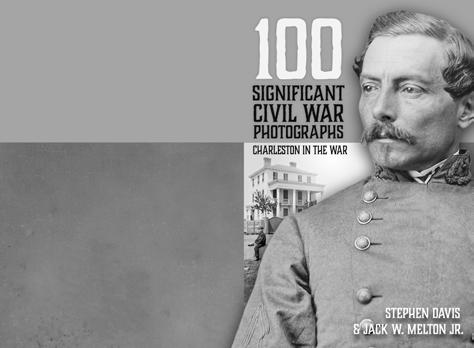

MK Shows presents the 35th annual Middle Tennessee Civil War Show and Sale at the Williamson County Ag Expo Park, 4215 Long Lane in Franklin. The nation’s largest Civil War show, featuring 750 tables of antique weapons, artifacts and memorabilia from top dealers and collectors around the country and encompassing all eras of military history from the Revolutionary War through World War II. Appraisers are always on hand to help you identify and value your military collectibles at no cost. Hours are 9-5 on Sat., 9-3 on Sun. Free Parking. Admission is only $10/adults and children under 12 are free. For information; www.MKShows.com or Mike@MKShows.com.
Dec. 31, Pennsylvania. Birthday Celebration
207th annual anniversary of the birth of Gen. George G. Meade, the heroic commander of the Union army at the Battle of Gettysburg. The General Meade Society of Philadelphia will celebrate his birthday at Historic Laurel Hill Cemetery, 3822 Ridge Ave. at noon. A champagne toast and reception will follow the program. For info; 215-228-8200 Laurel Hill Cemetery
CHARLESTON IN THE WAR

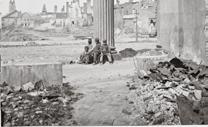
The Gettysburg Ball will be held 8 p.m. to midnight at the Wyndham Gettysburg Hotel located at 95 Presidential Circle in Gettysburg. Tickets $20 in advance, $25 at the door. Music by the Philadelphia Brigade Band. Dances led by the Victorian Dance Ensemble. Period dress encouraged, but not required. Door prizes, plus prizes for Ladies Cake Walk. Cash bar. Make check payable to SVR Remembrance Day Ball. Include stamped, self-addressed envelope for tickets. Ticket orders received after Nov. 12 will be distributed at the Ball. Mail to: Col. Steve Michaels SVR, 6623 S North Cape Rd., Franklin, WI 53132-1227. For information; 414-712-4655 or Lt.col.sm@gmail.com.

Nov. 19-20, Louisiana. Reenactment
Join us for the annual reenactment in Tangipahoa at Camp Moore. It was the largest Confederate training camp in Louisiana and the only one in the United States still open to the public. Skirmish is at 2 p.m. both days. Spectators are welcome to tour the museum (opens at 10 a.m.) and soldier campsites (opens at 9 a.m.). Various drill demonstrations on Sunday Nov. 20 at 10 a.m. Museum closes 4 p.m. Grounds close 4:30 p.m. Food and beverages may be purchased on site. Tangipahoa is located 75 miles north of New Orleans. Admission is $5 for adults, $3 for students and under 6 are free. For information, visit www.campmoorela.com.
Middle Tenn Civil War Show
December 3 & 4, 2022
MK Shows presents the 35th annual Middle Tennessee Civil War Show and Sale at the Williamson County Ag Expo Park, 4215 Long Lane in Franklin. The nation’s largest Civil War show, featuring 750 tables of antique weapons, artifacts and memorabilia from top dealers and collectors around the country and encompassing all eras of military history from the Revolutionary War through World War II. Appraisers are always on hand to help you identify and value your military collectibles at no cost. Hours are 9-5 on Sat., 9-3 on Sun. Free Parking. Admission is only $10/ adults and children under 12 are free. For information visit www.MKShows.com (Scan Me) or Mike@MKShows.com.
The Largest Civil War Show Under One Roof!
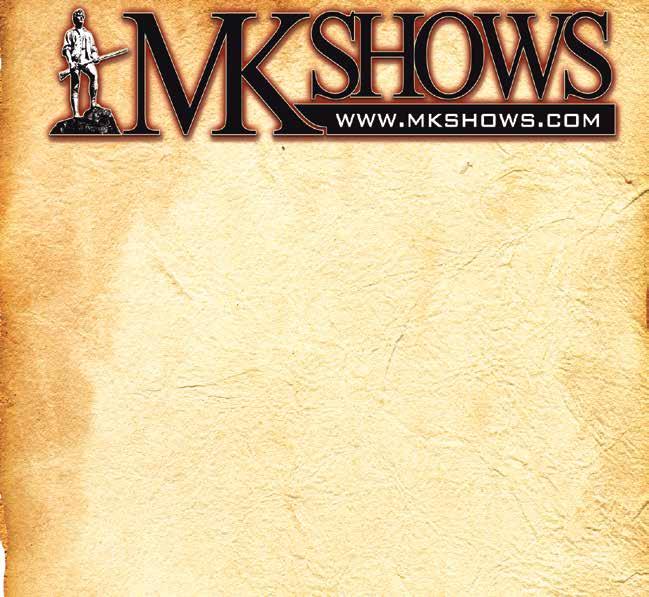
46 CivilWarNews.com October 2022 46 October 2022 CivilWarNews.com 100 Signi cant Civil War Photographs: Charleston in the War features newly restored images of scenes in the famed city, taken 1860–1865. e cameramen include the better-known, such as George N. Barnard and George S. Cook, as well as some lesser-known ones: Samuel Cooley, Charles Quinby, the partners Haas & Peale, Osborn & Durbec. Text by Stephen Davis and Jack Melton accompanies each featured photograph, describing the pictured scenes and the history surrounding them. e selected images depict a variety of settings: that portion of Charleston known as e Battery, the “Burnt District” (the area of the city destroyed by the Great Fire of December 1861), the Charleston Arsenal, and the many churches that allow Charlestonians to call theirs “the Holy City.” Special sections of this book are devoted to the huge Blakely guns imported from England by the Confederates and close-ups of Barnard’s views. e history of Civil War Charleston goes back to e Defense of Charleston Harbor (1890) by John Johnson, Confederate major of engineers, and to Reminiscences of Forts Sumter and Moultrie in 1860-’61 (1876) by Capt. Abner Doubleday, Federal second-in-command. Since then Charlestonians have contributed to the history of their city, notably Robert N. Rosen and Richard W. Hatcher III. e historical text surrounding 100 Signi cant Photographs draws on these and other works. A unique feature is its reliance upon the writings of actual participants, such as Augustine T. Smythe (1842–1914) and Emma Edwards Holmes (1838–1910). As a contribution to this literature, 100 Signi cant Civil War Photographs: Charleston in the War o ers rewards for all readers, from the casual novice to the serious student.
DAVIS & MELTON 100 SIGNIFICANT CIVIL WAR PHOTOGRAPHS CHARLESTON IN THE WAR 100 Signi cant Civil War Photographs: Charleston in the War features newly restored images of scenes in the famed city, taken 1860–1865. The cameramen include the better-known, such as George N. Barnard and George S. Cook, as well as some lesser-known ones: Samuel Cooley, Charles Quinby, the partners Haas & Peale, Osborn & Durbec. Text by Stephen Davis and Jack Melton accompanies each featured photograph, describing the pictured scenes and the history surrounding them. The selected images depict a variety of settings: that portion of Charleston known as The Battery, the “Burnt District” (the area of the city destroyed by the Great Fire of December 1861), the Charleston Arsenal, and the many churches that allow Charlestonians to call theirs “the Holy City.” Special sections of this book are devoted to the huge Blakely guns imported from England by the Confederates and close-ups of Barnard’s views. The history of Civil War Charleston goes back to The Defense of Charleston Harbor (1890) by John Johnson, Confederate major of engineers, and to Reminiscences of Forts Sumter and Moultrie in 1860-’61 (1876) by Capt. Abner Doubleday, Federal second-in-command. Since then Charlestonians have contributed to the history of their city, notably Robert N. Rosen and Richard W. Hatcher III. The historical text surrounding 100 Signi cant Photographs draws on these and other works. A unique feature is its reliance upon the writings of actual participants, such as Augustine T. Smythe (1842–1914) and Emma Edwards Holmes (1838–1910). As a contribution to this literature, 100 Signi cant Civil War Photographs: Charleston in the War o ers rewards for all readers, from the casual novice to the serious student. Stephen Davis JACK W. MELTON JR. CHARLESTON IN THE WAR 160 pages, Over 100 Photos, Maps, Index, Bibliography, Softcover. ISBN: 978-1-61850-167-7 $19.95 + 3.50 S&H Order online at www.HistoricalPubs.com or call 800-777-1862 Mike Kent and Associates, LLC • PO Box 685 • Monroe, GA 30655 (770) 630-7296 • Mike@MKShows.com • www.MKShows.com
the Crew! civilwarnavy.com 1 Year—4 Issues: $37.95 Subscribe Now at civilwarnavy.com Or send a check to: CSA Media, 29 Edenham Court, Brunswick, GA 31523 International subscriptions subject to postage surcharge.
Join
Terms and Conditions
The following terms and conditions shall be incorporated by reference into all placement and order for placement of any advertisements in Civil War News by Advertiser and any Agency acting on Advertiser’s behalf. By submitting an order for placement of an advertisement and/or by placing an advertisement, Advertiser and Agency, and each of them, agree to be bound by all of the following terms and conditions:
1. All advertisements and articles are subject to acceptance by Publisher who has the right to refuse any ad submitted for any reason. Mailed articles and photos will not be returned.
2. The advertiser and/or their agency warrant that they have permission and rights to anything contained within the advertisement as to copyrights, trademarks or registrations. Any infringement will be the responsibility of the advertiser or their agency and the advertiser will hold harmless the Publisher for any claims or damages from publishing their advertisement. This includes all attorney fees and judgments.
3. The Publisher will not be held responsible for incorrect placement of the advertisement and will not be responsible for any loss of income or potential profit lost.
4. All orders to place advertisements in the publication are subject to the rate card charges, space units and specifications then in effect, all of which are subject to change and shall be made a part of these terms and conditions.
5. Photographs or images sent for publication must be high resolution, unedited and full size. Phone photographs are discouraged. Do not send paper print photos for articles.
6. At the discretion of Civil War News any and all articles will be edited for accuracy, clarity, grammar and punctuation per our style guide.
7. Articles can be emailed as a Word Doc attachment or emailed in the body of the message. Microsoft Word format is preferred. Email articles and photographs: mail@civilwarnews.com
8. Please Note: Articles and photographs mailed to Civil War News will not be returned unless a return envelope with postage is included.
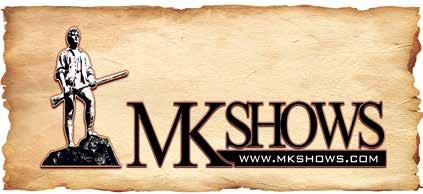
47 October 2022 47 October 2022 CivilWarNews.com CivilWarNews.com Advertisers In This Issue: 100 Significant Civil War Photographs: Atlanta 6 100 Significant Civil War Photographs: Charleston 38 American Battlefield Trust 8 Ace Pyro LLC 10 B.M. Green Civil War Paper Memorabilia, Inc. 2 C.S. Acquisitions – Wallace Markert 33 CWMedals.com, Civil War Recreations 26 Civil War Navy Magazine 16 College Hill Arsenal – Tim Prince 15 C.S. Arms 37 Day by Day through the Civil War in Georgia - Book 27 Dell’s Leather Works 10 Dixie Gun Works Inc. 13 Georgia’s Confederate Monuments – Book 22 Gettysburg Foundation 11 Greg Ton Currency 27 Gunsight Antiques 33 Harpers Ferry Civil War Guns 15 The Horse Soldier 24 James Country Mercantile 27 Jeweler’s Daughter 9 Le Juneau Gallery 9 Mike McCarley – Wanted Fort Fisher Artifacts 35 Military Antique Collector Magazine 10 National Museum of Civil War Medicine 35 N-SSA 27 The Regimental Quartermaster 15 Richard LaPosta Civil War Books 38 Suppliers to the Confederacy – Book, Craig Barry 15 University of Tennessee Press 29 Ulysses S. Grant impersonator – Curt Fields 27 Vin Caponi Historical Antiques 37 Events: American Digger Events 45 Battle of Cedar Creek 13 Elite Civil War Collectors Show 2 MKShows, Mike Kent 3, 46 Poulin’s Auctions 48
c c c c
my: Discover MasterCard Visa NAME ADDRESS ADDRESS CITY STATE ZIP CODE EMAIL $41 - 1 year USA Print $51 - 1 year USA Print & Digital $29.95 - 1 year Digital only Payment Enclosed Check # Card # Exp. Date Security Code Name on Card New Renewal c Make checks payable to Historical Publications LLC. c c c c Civil War News – 12 Issues Per Year Subscription/Renewal Form (required for digital subscription) USA Subscriptions Only No Canada or International Mail to: Historical Publications LLC 520 Folly Road, Suite 25-379, Charleston, SC 29412 Civil War News is now in a secure polybag with plain cover sheet for privacy. Subscribe online CivilWarNews.com PHONE Required 800-777-1862 Mike@MKShows.com • www.MKShows.com Admission Coupon To Any MKShows Event $1 Off 770-630-7296 Publishers/Authors Send your book(s) for review to: Civil War News 520 Folly Road, Suite 25 PMB 379 Charleston, SC 29412
Charge


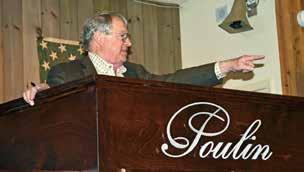
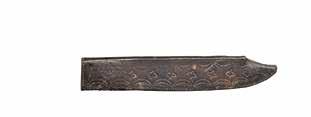


Firearms & Militaria Auctioneers November 4, 5, 6, & 7, 2022 | Fairfield, ME Fall 2022 Premier Firearms And Militaria Auction To view additional highlights from our upcoming Nov 2022 Premier Auction, please visit: www.poulinauctions.com poulinauctions.com | 199 Skowhegan Rd, Fairfield, ME 04937 | Stephen Poulin, ME Lic # 1115 • Reputation - Sterling reputation for honest, straight forward business relationship with both buyers and sellers alike. • The Best Rates In The Industry - The Poulin & Julia family provides the most competitive commission rates in the industry. Including 0% or better seller’s commission on expensive items and valuable collections. • Finest Expertise - We utilize over 250 years of combined professional consultant experience and an additional three-generations of marketing expertise of nearly $1 BILLION in combined total sales by the Poulin & Julia Family. • Unique Auction Description Guarantee - We utilize honest, knowledgeable and detailed descriptions with the most comprehensive guarantee, building the highest level of confidence from bidders and generating the greatest return for consignors. • Presentation - Building interest and enthusiasm from potential bidders is crucial for achieving the maximum value for our consignors. Utilizing the finest detailed photography, catalog design and state of the art auction facility generates the highest level of excitement from potential bidders & the best results for your collectibles. • Additional Poulin & Julia Family Benefits - Fully insured, numerous bidding options available, complimentary consignment pick up for expensive items and valuable collections, massive client base of international and domestic clientele & extremely aggressive marketing campaign. Nearly IN COMBINED TOTAL SALES Contact Jim for a free consignment consultation at (207) 742-0007 or email jamesjulia@poulinauctions.com $1 BILLION THE TRADITION CONTINUES... FAMILY REUNION! His expertise and experience in marketing and achieving the best results for high end quality firearms & collectibles will help continue to grow our firm into the leading specialty firearms auctioneer in the world. We are pleased to announce the renewed partnership with the world-famous auctioneer... James D. Julia! 0% Or Better! Seller’s Commission On Expensive Items & Valuable Collections THE POULIN & JULIA FAMILY DIFFERENCE Fine Large Grouping “Antebellum & Confederate Bowies” 3 Superior Condition “Attic Condition” Richmond Rifle Muskets If you are interested in more information about consigning a single item or an entire collection, we would very much like to discuss with you the methods and strategies to generate you, the consignor, the greatest return. Contact James Julia for a free consignment consultation at: or by email: (207) 742-0007 jamesjulia@poulinauctions.com
































 by Leon Reed Sculptor
by Leon Reed Sculptor





































































































 by Stephen Davis Modest Merit
by Stephen Davis Modest Merit



















































































 Reviewed
Reviewed




















































































